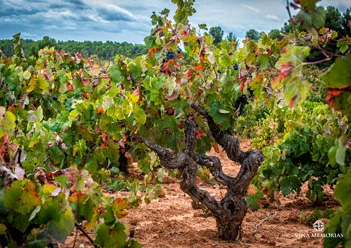
Author: [email protected]

A LIFE IN FIVE WINES
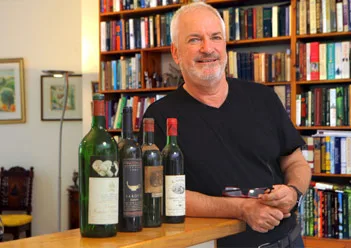
WINE IN THE CITY

LOOKING EAST IN THE LEVANT

RETURNING TO BASICS
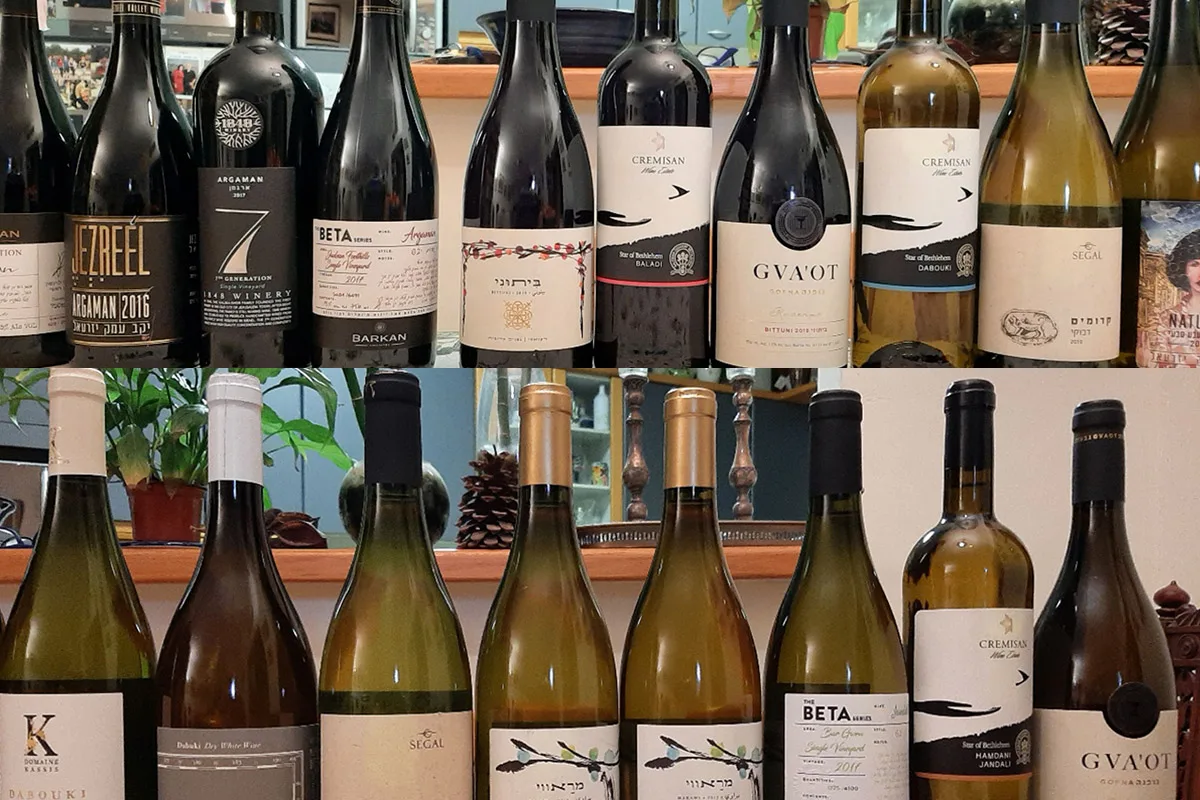
A decade ago, we knew there were local varieties, grown for centuries in the vineyards of the Holy Land, but we never thought of them as being wine grapes. Wine books were published and names like Bittuni, Dabouki and Marawi just did not appear under the headings of Israel, the Palestine Authority, the Holy Land or anywhere else. Yet the wineries that were founded by Jewish families in the 19th century, like Shor and Teperberg, used these same local varieties that we are talking about today. They were purchased from Arab owned vineyards in the Hebron area.
A GREEK WELCOME

GREEK WINES IN ISRAEL
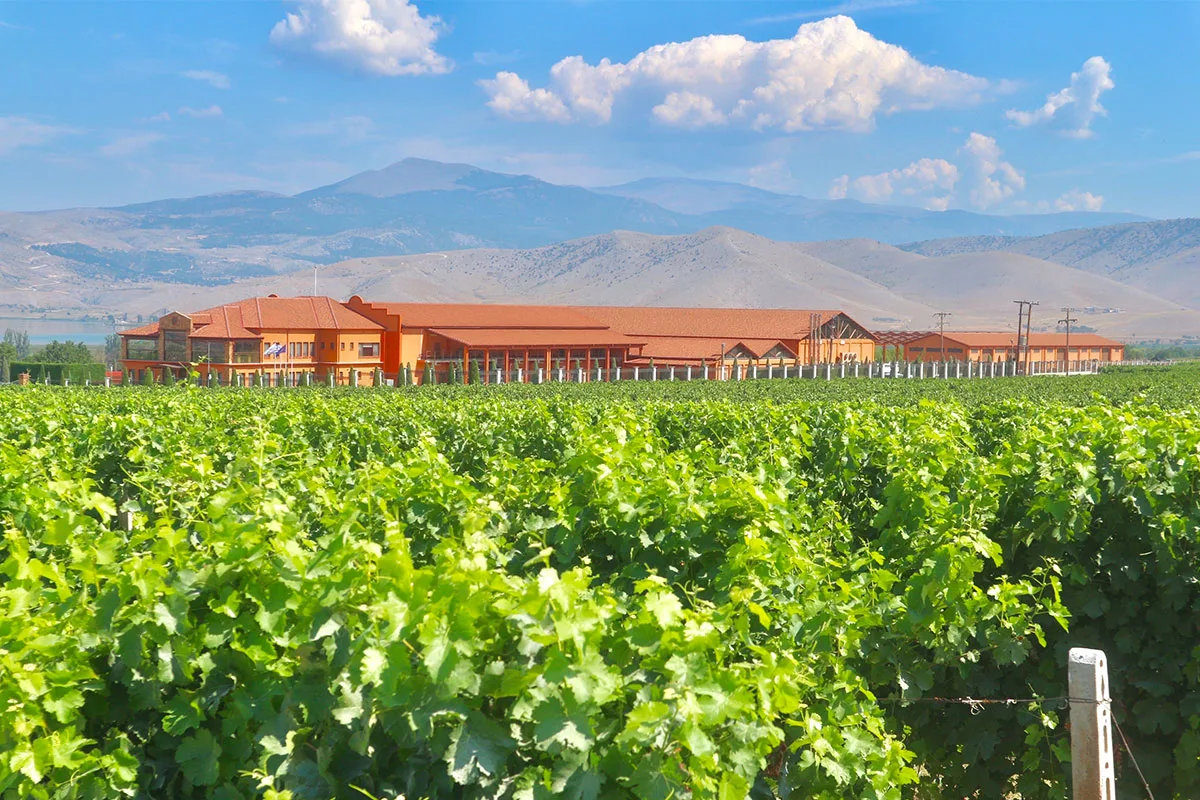
The wine world tends to divide itself into the ‘New World’ and ‘Old World’. Israel finds itself as part of the Eastern Mediterranean wine region. If you add Georgia and Armenia to the countries of the East Med like Cyprus, Greece, Lebanon, Turkey and Israel, then you have the basis of what may be described as the ‘Ancient World’. Though the wines from these countries may be considered exotic today, the wine drinker in Biblical and ancient times, would have been quite familiar with them. The Ancient World was cradle of the grape and this was where the birth of wine culture took place. It was then the France and Italy of those times, both in terms of quantity and quality.
Festival in white

FOUR CUPS, ONE FAMILY
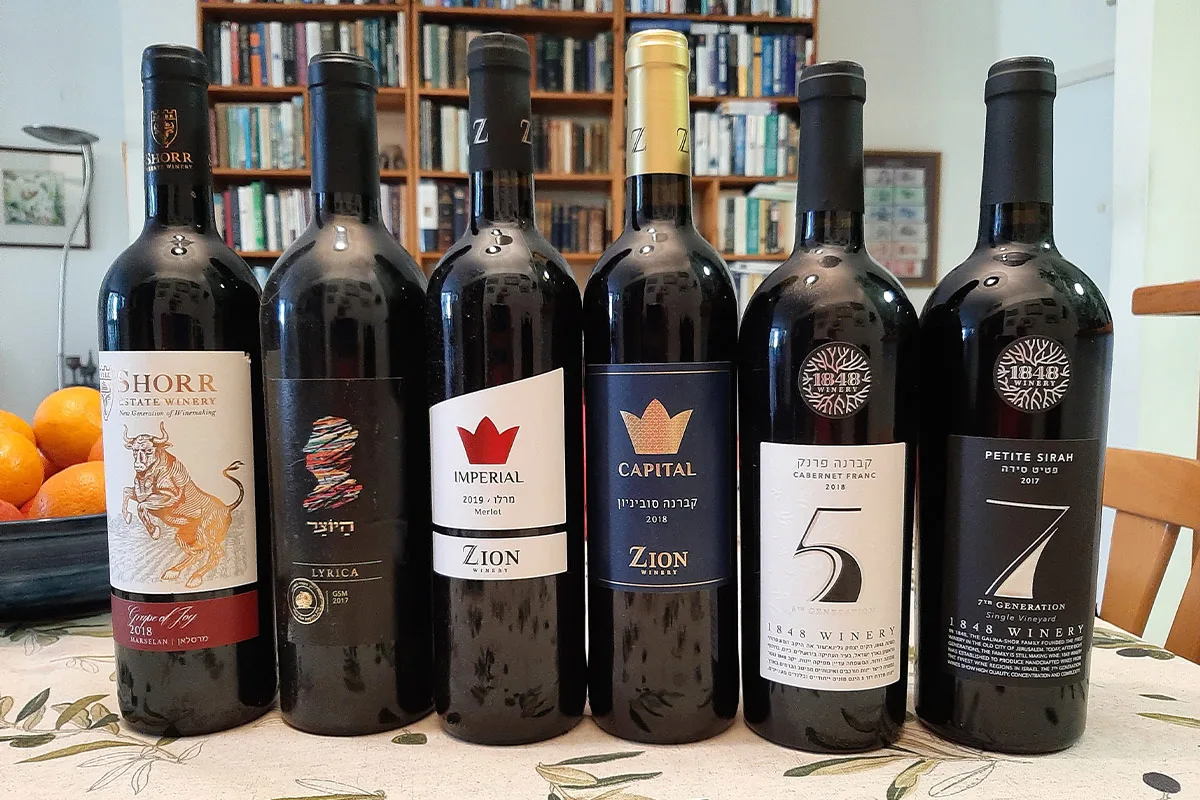
The Shor family has been making wine since 1848. Generation after generation, handed down from grandfather to father, father to son, son to grandson and so on. It is Israel’s oldest wine dynasty. They began in what was the Ottoman Empire, continued under the British Mandate and are still going strong in the 73rd year of the State of Israel. Today the family focus seems to be on four wineries in the market place. These are: 1848 Winery, Hayotzer Winery, Shorr Estate and Zion Winery. These wineries with deep roots in the history of Israeli wines, are all run independently by different branches of the family.
Holy Wine Batman!

Eat Drink and Be Merry
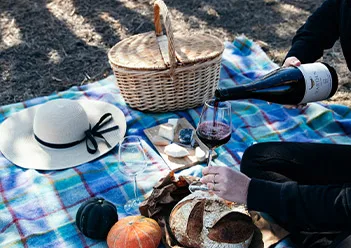

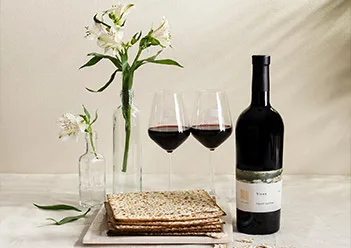
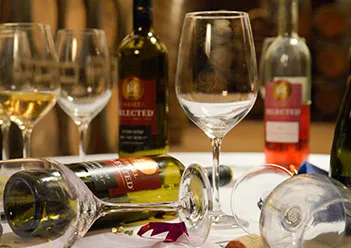
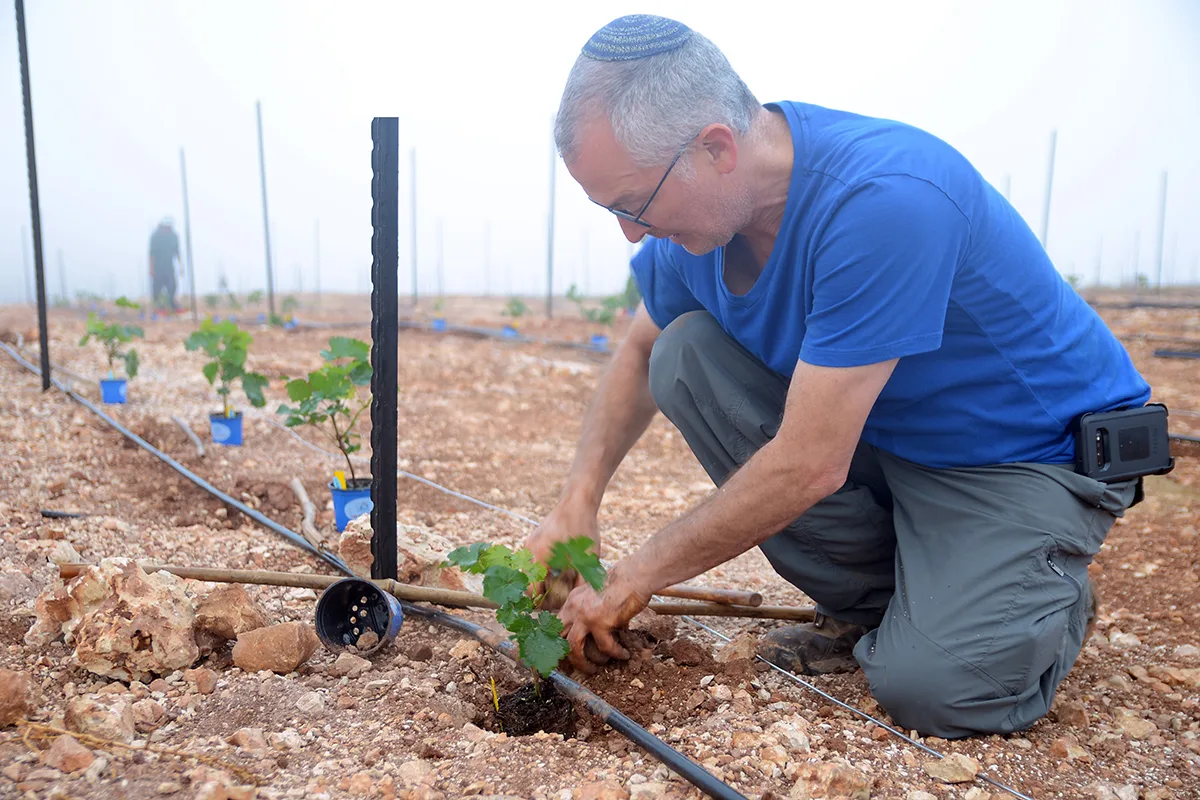
ROSES & ROSES

NEW YEAR FOR TREES
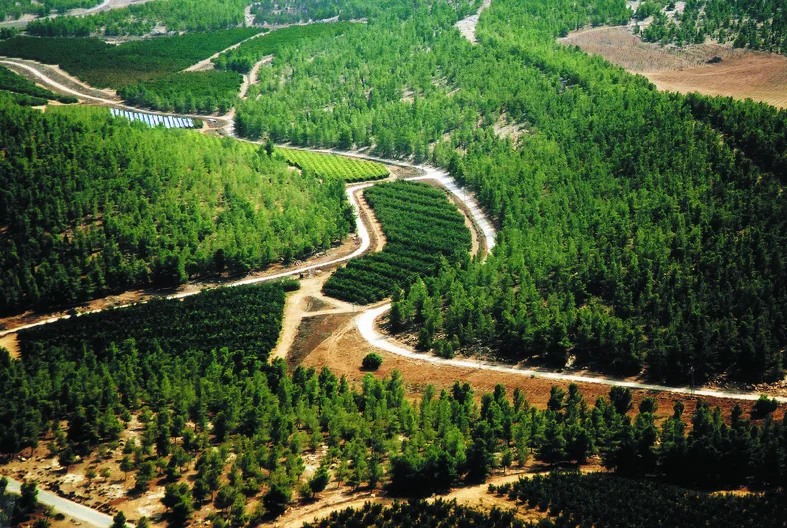
Israel has a festival for planting trees, which is called Tu Bishvat. It is celebrated literally by planting trees and has also become a festival with ecological undertones, reminding us to care for the environment. School children will go on tree planting activities and people from abroad are encouraged to make a donation for a tree to be planted in their name. This respect for trees and the environment has stood Israel well. It is the only country in the world with more trees than one hundred years ago.
THE FIRST THIRTY YEARS
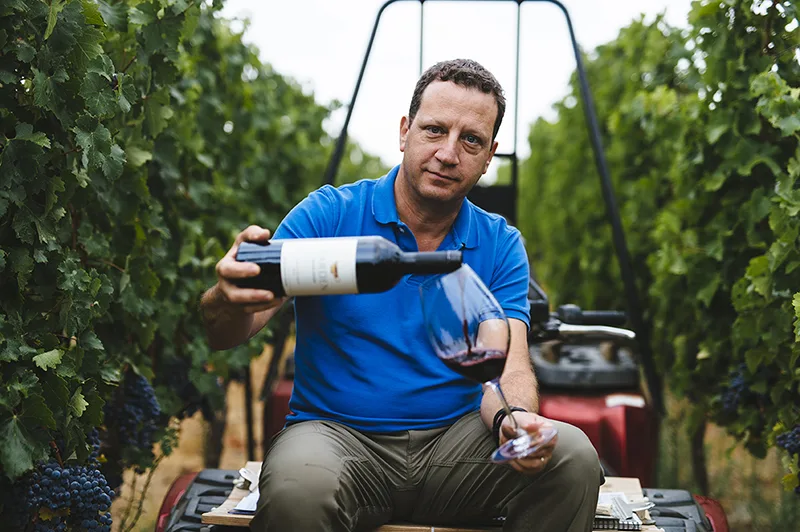
I first met him in 1991. He looked about 17, had long straggly, curly hair, round rimmed glasses and spoke with a Californian drawl. In fact, he was really 27 years old and had been appointed for a three-year term to become Head Winemaker of The Golan Heights Winery, then a two million bottle winery. Fast forward thirty years, Victor Schoenfeld has become a legendary figure in the world of Israeli wine.
To set the scene, the largest winery was then Carmel Mizrahi with 75% of the market. The main wineries apart from Carmel and the Golan were Eliaz, Efrat and Askalon (sic.) The so-called Jerusalem wineries (Arza, Hacormim, Shimshon and Zion) and the monasteries (Cremisan and Latroun) were only significant to the markets they served. Barkan had only just been founded out of the ashes of WEST-Stock-Montfort. The largest selling wine was Selected Emerald Riesling. Whites outsold reds. We have come a long way since then!
Victor?s first task was to create order, introduce decision making procedures and minimum standards. He is someone who disdains disorder and ?balagan?. He harnessed the obvious potential of the winery by introducing an infrastructure in keeping with a serious winery. That was his first achievement.
Under his watch, the Golan Heights Winery cemented its position as the pioneer of Israeli wine. The first icon, cult wine of Israel, Yarden Katzrin, was produced. The winery introduced a world class range of Traditional Method Sparkling wines, of which the Yarden Blanc de Blancs became the most famous. Mount Hermon Red became the largest selling Israeli wine. Gamla Cabernet Sauvignon re-emphasized its position offering the best QPR (quality per price) in the NIS 50 ? 100 category and that perennial award winner Yarden Cabernet Sauvignon, became the flagship wine of the country. Victor has won major awards for white, red, sparkling and dessert wines showing praiseworthy versatility, but if we had to pin it down, he would be the ?King of Cabernet? and ?The Master of Sparkling Wines?!? These are the wines most associated with Victor.
The winery was also responsible for the first varietals of Syrah, Pinot Noir & Gewurztraminer (outside Latroun); the first Muscat Canelli, the first organically grown wine, one of the first single vineyard wines, the first in the Moscato style, the first dessert wine made by cryo-extraction (HeightsWine), the first Port style wine from Portuguese varieties. The first wine made from carbonic maceration and so on. The list is endless. There is only so much space.
Victor Schoenfeld has remained the backbone and ballast of the winery and managed to keep it on message and focused for thirty years. He has had four different CEO?s as partners. Not all always signed on to Victor?s long-term vision. His great achievement was not losing sight of his goals, not compromising his standards, but also managing to cajole the management into supporting him. There have been some pretty hefty investments in the vineyards and winery to support that long-term approach.
The rewards came thick and fast. In the nineties, the Golan Heights Winery was the great beacon of Israeli wine. Those new wineries that devoted themselves to quality did so in the image of Yarden and with the example of the winery set before them. As other regions developed like the Galilee and Judean Hills, they followed the emphasis on region that the Golan Heights Winery already practiced on the Golan Heights. Their international recognition put Israel on the wine map. They were the first winery to be invited to the New York Wine Experience. The first Israeli winery to make the Wine Spectator Top 100. The Wine Enthusiast chose them as Best New World Winery. They received the Best Winery Award at Vin Italy. They won the Platinum Medal and 95 points at Decanter WWA. Four stars in Hugh Johnson?s Pocket Wine Book. Again, there is not enough space.
Of course, we worked together for a number of years, bringing some unique memories. One was eating a barbeque together, halfway up Mount Fuji, where I earnt his everlasting respect by eating a sea cucumber. Another was enjoying a magnum of Chateau Lafite 1959 in a small sushi bar in Tokyo, where there was barely room for ten people. We also worked ourselves to exhaustion, many a year at Vinexpo in Bordeaux, bringing Israeli wine to the world. So, I had the opportunity to observe him at close quarters.
Victor Schoenfeld is not always easy and relaxed. He can be as taught as a spring. He does not suffer fools gladly, can?t abide laziness and holds others to his high standards. However, his is arguably the only Israeli winery that has in built quality that may be passed on to the next generation in the manner of say, a Penfolds in Australia.
He does not scatter words like confetti. Everything is considered and mulled over before you hear his opinion. In that split second before he answers, you can almost hear his mind whirring when you ask a question. On the other hand, he has a very dry sense of humor, with a comment often muttered as an aside, that unless you know him well, you will not realize he is joking.
He is at his most relaxed and in his element, when cooking. The Schoenfeld family kitchen is not the pristine affair with all the mod cons that social risers like showing to their neighbors. It is used, lived in and rather like a galley kitchen with overflowing shelves on all sides. Good restaurants have less condiments and pots and pans of every description. It is also like an altar. The raised table and hob in the center of the organized chaos is where the hands-on cook creates, innovates with a total spontaneity. Here he is free from procedures, standards and responsibilities. He potters around the kitchen, busy, yet fulfilled and totally locked into food flavor creation. He never cooks the same dish twice and does not follow recipes, even though the shelves are creaking from the number of cook books.
If I say he has six grills which he possessively hangs on to, you understand the fetish. Once I was with him in Japan. We had to do a detour to buy a Japanese knife. Even though he acknowledged he would probably get it in the neck for buying ?yet another? Japanese knife, he could not help himself.
In fact, food was his way into winemaking.? He wanted to be a farmer and grow food. Fortunately for us, the 1980s was a nadir of commercial food production. Appearance, shelf live and distribution were then more important than flavor, individuality and a perception of quality. However, this was not true of viticulture or growing wine. He was introduced to wine (in particular Italian reds) by the father of a friend. He studied at UC Santa Cruz and UC Davis. He worked for wineries such as Robert Mondavi Winery in Napa Valley, Chateau St. Jean in Sonoma, Jacquesson et Fils in Champagne, and even squeezed in a year to manage a vineyard at Tishbi Winery in Israel.
The key to his love of wine is that he sees wine as a food, not a drink. Wine is to enjoy with a meal. He believes you have to humble as a winemaker. He himself is the antithesis of the ?I, me and mine? winemaker, who loves to tell you what they have done and how good they are. We have a? few of those in Israel. With Victor you have to prompt and almost squeeze it out of him. Once I witnessed Japan?s most famous sommelier ask him: ?Of the wines you make, which is your favorite?? Victor paused, as though scratching his head in his mind, clearly struggling with an answer. Then he replied: ?You know,? another pause? ?I am not really happy with any wine I make.? He went on: ?I always see the faults.? Unrehearsed, honest to a fault and revealing, he gave the answer that sums up the pursuit of excellence, the modesty and constant desire to improve. Sometimes he and his winemaking team say ?just think, only five years ago we knew nothing?, such is weight of constant new information, developing technology and ongoing learning. As Victor says ?the past is unimportant. What is of interest, is the future.?
The Golan Heights Winery is now nearly a six million bottle winery. Victor is responsible for 26 people. These include five winemakers, viticulturists, wine growers and the laboratory team. Any winery in the world would be proud to have the data base of vineyard information he has at his disposal. They practice precision agriculture with the most sophisticated irrigation management and green practices such as composting and wind generated electricity. Each vineyard block is mapped and catalogued, with constant monitoring of temperature, soil conductivity, growth and water. The Golan Heights vineyards are the most studied and analyzed agricultural land in Israel. Paradoxically, Schoenfeld explains that the more information he has at his fingertips, the more it allows him to enable the vine to speak for itself. He wants the wine to represent the terroir, not the winery or the winemaker.
The Golan Heights Winery certainly set the standard, but Schoenfeld also initiated changes that will positively affect the whole industry. It is a sad fact that Israeli vineyards are crippled by virus and the authorities have been paralyzed like a rabbit caught in the headlights of a car. The lack of ownership for the chronic problem is astonishing. Instead of whining and bleating, or a wringing of hands, the Golan Heights Winery created its own Nursery & Propagation Block, partnering with world leaders ENTAV-INRA. The primary reason is to provide its own vineyards with clean plant material, but a secondary benefit will be to supply the industry.
This should have been the remit of the Ministry of Agriculture or the Wine and Grapes Board, but the official response has been woefully inadequate. This program necessitated an astonishing investment by a winery, which was fraught with risk. When the group of Masters of Wine visited, most said they had never visited a Nursery & Propagation Block, and certainly not one developed by a winery. Ido Lewinsohn MW, winemaker of Barkan Winery, wrote about the leafroll virus in his dissertation to become a Master of Wine. It does not make optimistic reading.
The Golan Heights Winery did not talk, but acted. Credit for the decision goes to the winery management. Success has many fathers, but the person who made the case for this long-term investment and successfully implemented this incredibly ambitious program was Victor Schoenfeld and his team. The proof of the pudding is in the eating. The new Allone Habashan single vineyard wines illustrate the success of this initiative.
In 2012 IPEVO, the Israeli Professional Enology & Viticulture Organization, was founded. There had been previous attempts to create a winemakers? forum, but these were more social in character, lacked serious content, were disrupted by a need for public relations and did not last. This one operated like a secret society. We all knew it existed but not what went on, apart from the fact that attendance was good and lectures or presentations were serious and worthwhile. In 2018 it was registered as a government non-profit association. I have heard how valued it is by participating winemakers. I don?t know for sure, but I have an inkling Schoenfeld may have been involved.
The first outing in a way was the publishing of the IPEVO Israel wine map. Israel has been totally incompetent in the last thirty years in updating the map of registered wine regions to match topography, marketing needs and the developments in the Israeli wine scene. This map, though it needs polishing and some marketing input, is a good basis and because of the inertia, will be used until the officials get their act together. IPEVO is an important body on the Israeli wine scene.
Schoenfeld volunteers his time as member of the Standards Institution of Israel. He was part of a committee that updated the Wine Standards for the first time in ages. This is important work to bring the local wine industry up to speed.
Now the winery has taken another major step by moving to a program of sustainable vineyards. Yet again, the Golan Heights Winery are the pioneers and they are the first Israeli winery to be internationally certified sustainable. As with the cooperation with ENTAV, they have chosen leaders of the field to collaborate with, in this instance, LODI RULES from California. Certified sustainable farming is all encompassing and relates to the environment, the people and the business. I have always thought sustainability is important for Israeli wineries and is only more so in the current environment along with the climate of opinion. It is also a good partner for Kosher. It all sounds more logical from a marketing point of you, when wrapped up together. Schoenfeld says ?We hope to act as a model for others in the Israeli wine industry in order to promote sustainability in our industry as a whole.?
He is bullish about Israeli wine. Sometimes I talk about how good we are, and then qualify it. Victor does not believe we have to apologize for anything. He explains we are a unique wine region with a melting pot of winemaking skills, and we should approach the world with more self-confidence. As for the Golan he says ?There is nowhere else on the planet that combines our latitude, which is a meeting place between Europe, Africa and Asia, with our high altitude and beautiful volcanic soils.? He explains wine is the only product that combines agriculture, industry and tourism and enchantingly, he describes wine drinking as a kind of armchair tourism.
Wine is an important industry in Israel. It is relatively small but high profile. There is no other product that runs like a thread from the beginnings of the Jewish people and from the first contact with the Land of Israel, until today. Hi-tec maybe a larger sector, but it is intangible and you can?t give someone a gift of a bottle of hi-tec. I have long thought that the Israeli wine should be recognized nationally. Would it not be appropriate for a representative of our industry to be awarded with the prestigious Israel Prize, in recognition of the tremendous strides made in the sector? If Israeli wine were a team in the Olympics, Victor Schoenfeld would be carrying the flag. I can think of no-one else who symbolizes all the positive developments quite like him.
Thirty years is but a blip in time in the life of a wine region. After all, that is only thirty harvests. As Baroness Philippine de Rothschild said: ?Winemaking is easy, it is only the first 200 years that is difficult.? Fortunately, we will have the benefit of Victor?s passion, hunger and perfectionism for a good many more years to come.
Adam Montefiore is a wine trade veteran, who has advanced Israeli wine for 35 years. He is referred to as ?the English voice of Israeli wine.?? He is the wine writer of the Jerusalem Post. www.adammontefiore.com
WHISKY OF ISRAEL
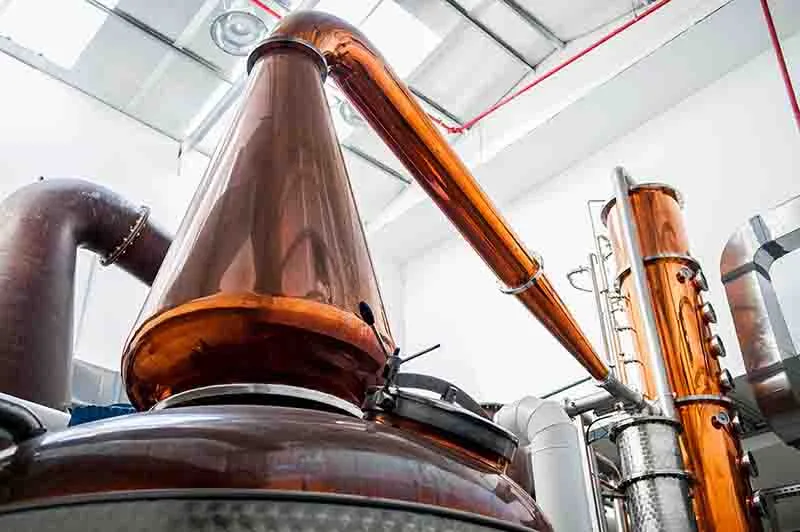
I am a Zionist sort of guy. I like supporting Blue & White products. My choice of beer for many years was Goldstar. For 100 years Carmel was the national wine, until Yarden came along. With regard to Israeli spirits, it has always been more difficult to be patriotic. When I came to Israel there were such delights as Lord Gin and Captain Rum. Tehila was the shaky Israeli version of Tequila. Campari Israeli style was known as Kaprei. Araks were not made from grapes, as was the norm, but from imported molasses alcohol. Quality wise, the memory of them makes me cringe.
There were some sporadic successes. In the 1990s there was a time when Carmel?s bottling plant operated 24×6 because of the extraordinary demand of Vodka Stopka in Russia, but this sales bonanza did not last. Israeli brandies (made by Tishbi and Carmel) won some major awards and Sabra (a Seagram liqueur made in Israel) became an original addition to standard range of global liqueurs.
The range of wines increased substantially with the boutique winery revolution that began in the 1990s. The home brewing craze took off in the early 2000s and this led to a new craft brewery boom. Suddenly there were so many more locally produced wines and beers to choose from. In the spirits market, local production virtually fell away, apart from large selling survivors like Elite Arak and Stock 84. The import of global brands and high taxes made the production of local spirits, brandies and liqueurs unprofitable and unviable.
However, the second decade of the 21st century has brought about an artisan, craft distillery boom. Now, there are some producers of high-quality blue and white spirits, many totally original, some using local ingredients. Chief amongst these is the Milk & Honey Distillery in Tel Aviv, Julius Distillery in the Western Galilee, Yerushalmi Distillery in Jerusalem and both the Golan & Pelter Distilleries on the Golan Heights. The first was the artisan Julius Distillery. I have tasted some of their products, which are truly outstanding.?
The largest is the M&H Distillery, whose mission is to bring Israel into the world of Whisky. Whisky is mainly produced in five countries: Scotland, Canada, Japan where it is known as whisky, and Ireland and America, where it is spelt with an ?e?, whiskey. In recent years there have been many new countries making whisky for the first time. The most famous of these is Taiwan. Their Kavalan brand astonished the world by winning some major awards. The hot and humid weather in Taiwan is similar to Israel.
Fast forward to 2012, a few Hi-Tech?ists led by Gal Kalkshtein, dreamt big and decided to bring authentic whisky to the Holy Land. No corners were cut. They employed the late Dr. Jim Swan, one of the most respected gurus of the whisky world, as a consultant. He was the advisor to Kavalan and a specialist in whisky production in hot countries. Tomer Goren, ex brewer, whisky fanatic and now Master Distiller, became the chef. He worked at both Tomintoul and Springbank in Scotland. Springbank is one of my favorite distilleries. It is like a time capsule there, unchanged from a previous age.
The name Milk & Honey could not be more Biblical. The Promised Land was referred to as a Land of Milk & Honey. I have read that in days gone by, before modern quality control, Scots added milk and honey to their whisky to make it more palatable. I do not know if it is true, but as I always say, you shouldn?t spoil a good story by the truth. The first thing you notice is the garish logo. It is of a bull decorated in the blue and black stripes of a bumble bee. Why the bull? ?Well, we tried it with a cow first, but the bull looked better!? was the answer!
I decided to visit them in south Tel Aviv. I arrived at what was once a bakery not far from Jaffa, and within walking distance of the sea. I entered nondescript door and had the feeling that I had entered a nightclub. The visitors? center is in the brand colors. There are colorful graffiti style whisky messages on the walls and a number of workers buzzing about wearing M&H polo shirts. All were young, smiling and they gave a feeling of liveliness and creativity. You certainly felt the spirit and energy of the Israeli start up.
The proof in the pudding was in the eating. When I sat down to taste I was offered one dram aged in a barrel previously used to age pomegranate wine. There was another matured in a barrel in which the C Blanc du Castel (one of our finest Chardonnays) was fermented, and aged sur lies. I immediately felt the creativity and the Israeli penchant for trying something new, pushing the boundaries, experimenting just for the fun of it all. The M&H team is having a ball with their cask specials.
Looking through the glass windows into the distillery, I wondered what I would find. Would it be ?whisky want to be? or a Heath Robinson operation run by amateurs, who were able to talk the talk. I have visited many distilleries in my life, including a week-long tour to Speyside, followed a year later by a visit to Islay and Campbeltown. I am pleased to report that immediately I entered, it felt like an authentic, whisky distillery. It is big compared with other Israeli distilleries, but like a spot on the nose compared to most small distilleries in Scotland.
There were two large pot stills. One, the wash still, was a refugee from Romania of all places. The other, the spirit still, was state of the art from Germany. Ingredients are paramount.? Malted barley comes from England. Peated barley from the Czech Republic. The water is Israeli, but only after it has been treated in their water laboratory. There were casks everywhere; inside, outside, in the corridors, along the walls, almost up the walls. If you landed from outer space, you might think you had arrived in an antique shop specializing in barrels of different origins, shapes and sizes.
They have over 1,500 casks. These include bourbon casks from America, sherry butts from Spain, whisky casks from Scotland and wine barrels from Israel. Most famous is the STR cask, specially developed by Dr. Swan. This is a wine barrel that has been shaved, toasted and then re-charred. It was designed for hot climate maturation, to advance positive flavors and negate the harsh ones. When you enter the official cask room, you are hit by the seductive smell of whisky soaked oak and alcohol. It is like waking up in the center of a brandy-soaked Christmas cake.
The climate is the most significant Israeli effect on the whisky. It can be hot, with a high humidity, particularly on the coast. This accelerates the aging process and could be a problem, but M&H turn it to their advantage. The angel?s share, which is the evaporation, can be as much as 11% in Tel Aviv. Imagine producing a quality, expensive product and signing off 11% before you start. In Scotland, the angel?s share is between 2-4%. Maybe in the Holy Land, the angels are blessed. Being players and tinkerers, M&H are having fun experimenting. Casks are sent for maturation in different micro climates. Some have even been sent to the Dead Sea, the lowest point on earth. Here the angel?s share can be up to 25%! Fortunately for M&H, the whisky ages more quickly and so will not be left there for too long. However, if you are a whisky loving angel, that is clearly the place to be.
M&H has walked a tightrope between gaining respect of the whisky intelligentsia by their authenticity, and at the same showing the Israeli chutzpa, creativity and ingenuity. It seems they have succeeded on both fronts.
In 2017 they launched Israel?s first authentic whisky, matured for three years in cask. In cold climates a malt whisky may be aged for, say, ten years before being released. There are no whisky laws in Israel, so they followed the acceptable norm in Scotland.
I was hosted on my visit by Tal Chotiner, who has done everything in the spirit world. He has been involved in every facet of the spirits and liquor trade and knows the market backwards. He has been a bartender, bar/ restaurant owner, marketer, brand ambassador, educator, consultant, journalist, broadcaster and producer ? and I have probably missed a few. He has experience at every level of operation from an Israeli start up distillery to Diageo, the largest spirit company in the world. M&H is slightly exotic and therefore of interest to whisky geeks. It certainly makes them a whole lot more credible to have someone who is knowledgeable, known and respected representing them in export markets. They export to 20 countries already and have received impressive third party recognition internationally. They are certainly going in a good direction.
The M&H Classic is a 3year old whisky aged in 75% bourbon casks, 20% red wine STR casks and 5% virgin oak. It was light, aperitif style, but not lacking in character. I kept returning to it during the tasting. The aromas were enchanting, if fleeting. Nice sweetness, a little zesty, some citrusy notes, but overall delicate. Certainly, there was more on the nose than flavor, but it was clearly an authentic whisky nonetheless. When I arrived home, I did a comparative blind tasting alongside a 12 year old Scotch malt whisky and the Israeli expression showed very favorably.
I was also pleased to taste the M&H Elements Red Wine Cask whisky. Many moons ago I initiated the idea of Bruichladdich Distillery finishing two whiskies in red wine barrels from Carmel Winery. I still have the Bruichladdich 1989 and 1994, 12 year old, and 1989, 18 year old, with ?additional cask enhancement? of kosher wine casks. They are beautiful whiskies. The Elements Red Wine Cask has floral notes and a definable winey nose and a touch of drying tannin on the finish. The Elements Peated expression was as you expect peaty and smoky. They import casks from Islay for this. It is not medicinal Laphroaig style, nor does the peat over power the other aromas. It is a nice, well balanced dram.
Echoing Macallan in the old halcyon days, but on a rather smaller scale, M&H took the trouble to have kosher Oloroso and Pedro Ximenez sherries made and aged in sherry butts for one year. The Sherry Cask Whisky was my favorite of the Elements. It was slightly richer, with a sweet dried fruit nose and the flavor seemed to have more length than the other whiskies. They tell me this is the first and only malt whisky aged in kosher sherry casks. My favorite of the special expressions was the Cognac Cask. It was warm, complex and had great length. That is something to look forward to.
The M&H Levantine Gin is a wonderful product. It starts like the whisky. The base spirit is 100% malted barley, which is mashed at the distillery and distilled in the pot still. They then add the juniper and botanicals hand sourced from the Lewinsky market in Tel Aviv. These include za?ater, lemon peel, orange, chamomile, lemon verbena, cinnamon and black pepper. These are then distilled for a third time in a small, adorable, almost domestic sized 250 liter pot still. This is not a gin dominated by prominent juniper aromas, which is better for a gin and tonic. It has lifted aromas that should be enjoyed in a balloon glass or drunk in a Martini cocktail. This a super, aromatic Israeli expression of gin.
The Milk and Honey Visitors Center is a great place to visit. A tour, explanation and tasting costs NIS 50. There is also a shop with the full range of products and some M&H souvenirs. Certainly, whisky mavens will be pleasantly surprised by the quality of Israeli whisky. Israelis should be proud of this product, which makes a first-class gift for Hanukkah, Christmas, New Year?s, Novi God or Sylvester?s. Sipping, sharing and savoring the first quality Israeli whisky in 5,000 years, seems a great way to say good riddance to the appalling year of 2020.
Of course, we spit in wine tastings, but they would have looked at me askance if I had done the same to their precious whisky. As we finished the thirteenth glass of the tasting, Chotiner returned to his barman roots and made me an M&H Martini, with Levantine Gin of course. Instead of adding an olive, as accepted international style, he instead drizzled a drop of olive oil into the glass to give it an Israeli slant. Sated, satisfied and very impressed, I was pleased I had a taxi to take me home.
Adam Montefiore is a drinks industry veteran, who has advanced Israeli wine for 35 years. He is known as the English voice of Israeli wine. He is the wine writer for the Jerusalem Post. www.adammontefiore.com
WOMEN IN WINE
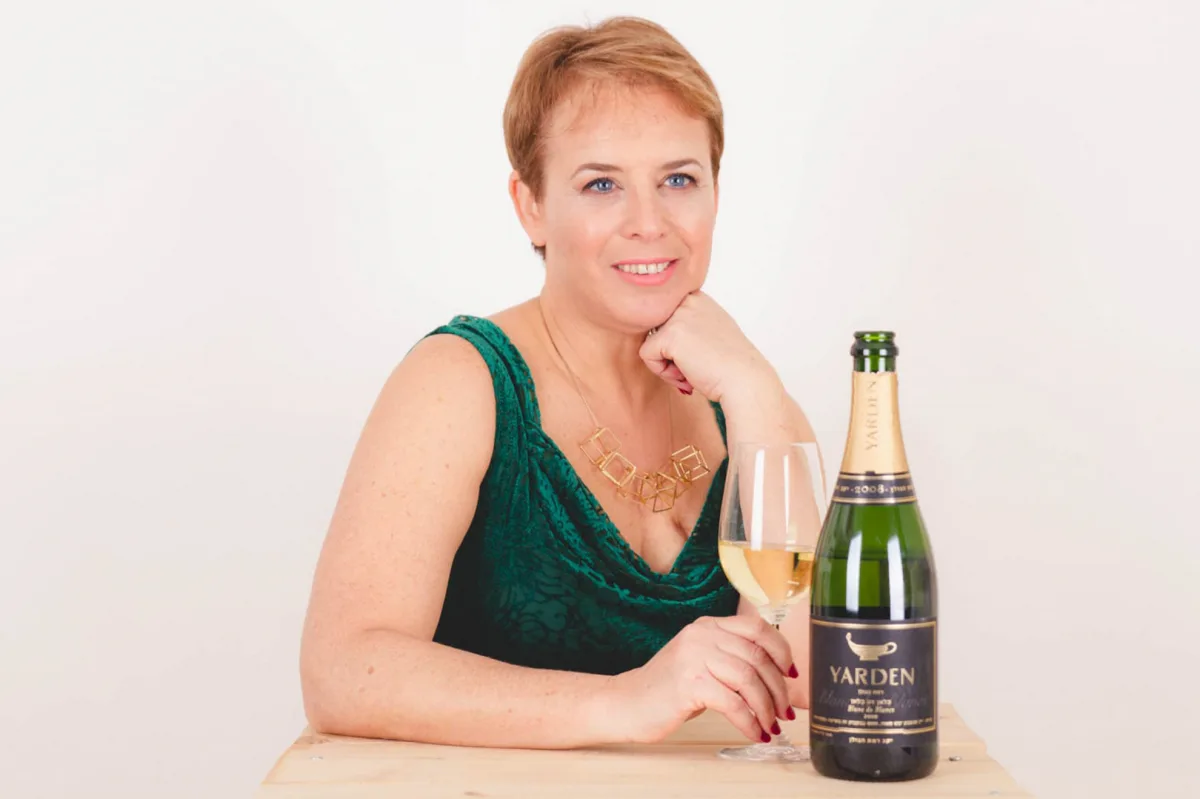
When I first became involved in the wine trade in the UK, it was very much a man?s world. There would be alcohol infused late lunches, tastings would be likened to a men?s drinking club and most of the production chain from vineyard to sommelier or retailer would be the preserve of men only. To say the wine trade was sexist and chauvinist would not be an exaggeration. As regards the vineyard and winery, there was a feeling that the work was too physical for women, and outside the gates of the winery, sales, tastings and schmoozing, were always seen as a men only pursuit. Furthermore, in those days, even the wine writers and critics, was almost exclusively the preserve of men.
The prejudice went even deeper. In Catholic countries, including France, Italy and Spain, women winemakers were regarded with suspicion well into the last century. It sounds primitive now, but it was thought the menstrual cycle would affect the wine in a negative way. In the Jewish kosher world, women winemakers were frowned upon for a different reason. The religious authorities believed in separating the genders. At kosher wineries, the workers were exclusively men.
Gradually overseas, the barriers broke down. In the 1970?s and 1980?s the first women became Master of Wine and Master Sommeliers. This was accompanied by findings that women were in fact better tasters than men and women pioneers blew away the cobwebs of smoke-filled rooms and pin stripe suits. Fortunately, we have developed as a society since then and women are now involved in every aspect of the wine chain, but it has not become so common as not to still be an occasional talking point.
In Israel there were two pioneers who showed the way. One was Tali Sandovski, winemaker at the Golan Heights Winery. She became the first female winemaker in Israel in 1986. She ensured continuity as the winery made its way in the early years, almost with a different winemaker every year, then she was a steady hand as the baton was passed from Jim Klein to Victor Schoenfeld in 1992. Since then, she has been the ever present, loyal lieutenant to the head winemaker. Tali is very clever, talented, yet quiet, modest and undemanding. She has played an important part in the winery?s success. She has never demanded limelight and never received the credit she deserves, but she has been a permanent fixture in all the winery?s triumphs.
The equivalent in the winery office was the late Carmi Lebenstein, who recently passed away in such tragic circumstances, well before her time. She was virtually born in a bottle. Her family were wine traders. She herself was a successful retailer and then joined Carmel Mizrahi in 1984 in sales. She progressed to become sales manager and then marketing manager of Carmel, when it was then by far the largest winery with 75% of the market. She was street smart, savvy and knew all the tricks and shticks of the wine world. Carmi showed she could compete in this competitive, manly atmosphere, by giving as good as she got. Though tiny in build, she was big in stature and could use her sharp tongue and elbows as well as any man. As a marketer, she was innovative, creative and always thinking out of the box.
I worked with both Tali and Carmi, and I must say I never regarded them as an unusual species because they were women. They were just both so good at their jobs, that the issue of gender was irrelevant. However, looking back with hindsight, they were trail blazers on the Israel wine scene.
Since then women abound in our industry, but it was not always that way. I worked at one winery where the Rabbi for a time flatly refused for a woman winemaker to join the winemaking team. Then for another, when one of the associate winemakers was not Jewish, which she emphasized by wearing a crucifix to work! Today I am pleased to say each of the largest wineries has women winemakers: Anat Keider Gershon & Shiri Rosenthal Kobe at Barkan, Meital Damari at Carmel and Dorit Segev & Tali Sandovski at the Golan Heights Winery. Winemakers like Irith Boxer Shank (Barkan), Orna Chillag (Chillag), Naama Sorkin (Dalton, Ortal), Yael Sandler (Binyamina, Ella Valley) and Nitzan Swersky (Ahat) have ensured that the woman winemaker in a winery is not as unusual as it once was.
One of the highest profile winemaker ? educators today is Roni Saslove. She was winemaker of Saslove Winery and has become one of our best wine educators and communicators. Her courses are held at the Seren DPT wine venue in Jaffa. She has also become one of our most visible wine media personalities. She is so articulate in English and Hebrew and exudes warmth, enthusiasm and professionalism. She is currently co-authoring a new book to be called ?Wine Journey – Israel Adventure?.
The first female sommelier of note was Hadas Ezer, of the famed Keren Restaurant in the 1990?s. Some of our best sommeliers today are women. Before being a winemaker, Yael Sandler was a sommelier and she became the first woman to win the Yarden Award for Best Sommelier. The two leading sommeliers at the moment are Mor Bernstein, current holder of the Yarden Sommelier Award and Shira Tsiddon of the Norman Hotel, winner of the award for the best wine list and wine program. The number of Israelis who have gained the WSET Diploma (Wine and Spirits Education Trust) may be comfortably counted on two hands. Sandler, Bernstein and Tsiddon have each gained this important, international recognition in the last few years.
Believe it or not, the first female manager of an Israeli winery was Rosa Shor in the early part of the 20th century. Her husband Shmuel was the second generation of the Shor family winery, founded in the Old City of Jerusalem in 1848. It was the earliest of all the existing wineries. When Shmuel passed away, Rosa took over the management of the winery. This included moving the winery from the Old City, and setting it up again at Beit Israel in Western Jerusalem in 1925. Being deep in the Haredi world and embedded in the Muslim Quarter of the Old City, it was certainly a milestone event.
In modern times, we have had quite a few women winery executives. The longest lasting CEO of a large winery was Anat Rushansky Levy. She was CEO of the Golan Heights Winery for ten years. Previously she was marketing manager, then export manager for the USA. She certainly broke a glass ceiling too. Of course, a woman reaching the pinnacle, is not a guarantee of success and Levy followed on from two legendary CEO?s, Segev Yerovam and Shalom Blayer, who were loved and respected by everyone. She was always compared to them.
The lesson is that a successful CEO is a good one, and an unsuccessful CEO is a bad one, and sex has nothing to do with it. I came across one female CEO who waltzed in from outside the wine trade, assumed she understood everything and thought everyone else was stupid. She was more aggressive and more of a bully than any man, did not do the work or make the effort to learn the wine trade and was an abject failure. On the credit side, Ronit Badler was someone who was professional and made a good impression whilst she was CEO at Galil Mountain.
The latest new manager of a winery is Michal Akerman. She is curly headed, with a great smile and friendly manner. As agronomist, she introduced the concept of ecological vineyards at Tabor Winery. Michal always bright eyed, keen to talk and share, is now the manager of Tabor. There are winemakers that manage wineries, but she is the first agronomist to do so.
As far as the business of wine is concerned, I remember sitting next to the export manager of Olivia at some course many years ago. That was the first time I met Yael Gai. In 2007, she was appointed the International Marketing Manager of the Golan Heights Winery. As the Golan Heights Winery is Israel?s leading exporter, and Yarden arguably Israel?s main wine ambassador, Gai has become a major spokesman and representative of Israeli wine internationally.
For the last fourteen years she has been bringing Israeli wine to the forefront in Europe and the Far East with style, attention to detail, with a sharp business sense, and the smarts and the ability to sell image, a perception of quality, Brand Israel, as well as containers of Yarden, Gamla and Hermon wines. She is the Foreign Minister and an ongoing illustration of how trading in wine is certainly not only for men. To reinforce the point, the export managers of Barkan (Lea Lehavi) and Carmel (Etti Edri), are today also women.
Two other marketers I greatly respect. One is Carmit Ehrenreich, ex Golan Heights Winery, Galil Mountain, Bazelet Hagolan and she is now marketing manager of Jerusalem Vineyard Winery. The other is Vered Ben Saidon, owner of Tura Winery. Both are passionate, dynamic, pushy in a good way, with excellent marketing instincts.
Amongst the wine critics, the main female player is Mira Eitan, who for many years has written about wine, beer and spirits. For a period of time she was editor of the Wine & Gourmet Magazine. Then she worked at Carmel as Public Relations Manager. She now writes for Shulchan and Sanedrink. Once she was the only woman invited to wine tastings, but that is also changing.
Thankfully Israeli wine has developed and become more enlightened. Women are now deeply embedded in the wine trade and they greatly enrich us in every way. For those cynical, doubting Thomases, who are still reluctant to take women seriously, they should know that most of the wine in Israel is purchased ?..by women!
Wine trade veteran Adam Montefiore has advanced Israeli wine for thirty five years, and is referred to as the English voice of Israeli wine. www.adammontefiore.com
TURKISH DELIGHT
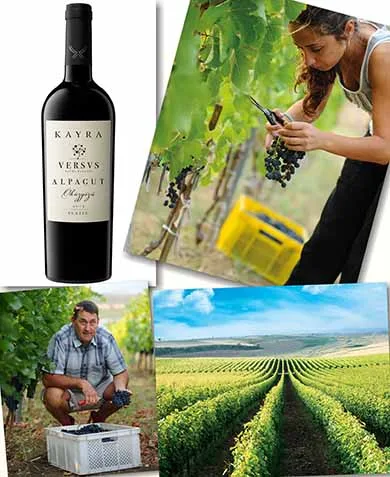
Turkey is a fascinating wine country, with a history as long as wine itself. I have always believed we should be less Israel-ocentric and take time to learn from our neighbors. Remember, kosher is not a country and Israel is not an island. We belong to a region; the Eastern Mediterranean wine region. Of course, it is a region with borders defined by war, discord and religion. The relations between Israel & Lebanon, Greece & Turkey, and Cyprus with Northern Cyprus, are scarcely made in heaven. There are things in common though. The sun, sea, mountains, stony soils, mud coffee, the anise flavored spirit (Ouzo, Raki or Arak), the east med cuisine…and the wine of course. One should not over simplify things, but in general, Christians make wine in Cyprus, Greece and Lebanon; Jews are the winemakers in Israel, and Muslims make the wine in Turkey (and in Northern Cyprus for that matter.) However, this fertile crescent was the hub of the wine trade over 2,000 years ago, the France and Italy of ancient times in terms of production and the cradle of wine culture.
Hail to our new Master of Wine

A WINE CAREER IN FIVE WINES
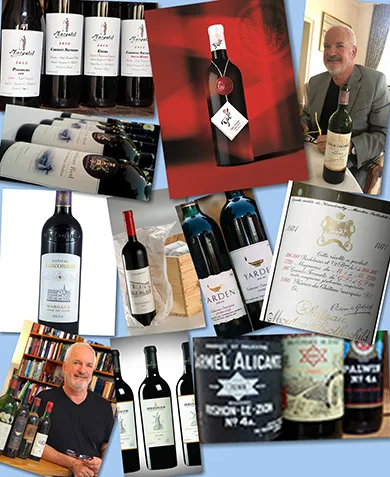
I was recently set an interesting challenge. Name five wines to represent your wine career. Sitting at home, feeling self-indulgent and nostalgic in equal measure, I have decided to have a go.
My earliest wine memory was drinking Palwin as a child during Passover Seder Nights. Sweet and alcoholic, I thought it was a naughty treat. To most Brits, Palwin seemed almost to be a part of Judaism itself! The first wine I purchased was a bland brand called Hirondelle, which was cheap, inoffensive and a good beginner’s wine. The first truly memorable wine I drank was Château Mouton Rothschild 1971. It was my wine epiphany and my introduction to the world of fine wines.
ALL IN OUR HANDS
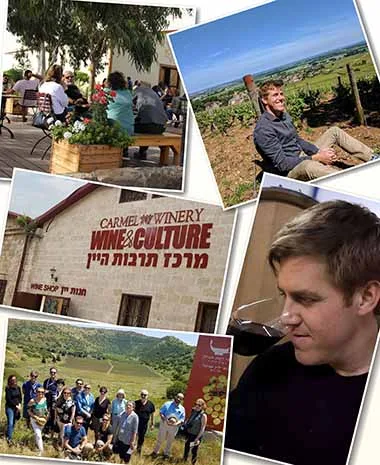
“The wine revolution is over” Guy Haran said to me. “Now we must begin forging an identity for Israeli wine, and wine tourism will be an integral part of this.” Haran is one of the young Turks of Israeli wine, part of the new, younger generation taking the wine industry forward. His expertise is broad, but his prime interest is wine tourism.
Wine tourism in Israel starts with one arm tied behind its back, and the restriction is self-inflicted. Wineries instead of being part of the agricultural scene, like everywhere else in the world, are tucked away in industrial estates. This is because the authorities see wine as an industry, rather than as an off shoot of agriculture.
In the world of wine tourism, we don’t have a natural agritourism like in Italy, where the local winery, vineyard, restaurant, hotel and olive press co-exist and blend into the nearby village. We can’t boast of sensational, breathtaking views, like in Stellenbosch, nor do we have a wine route seemingly designed for wine tourism, as in California’s Napa Valley.
SHOR FAMILY, MONTEFIORE & RETURN TO ZION
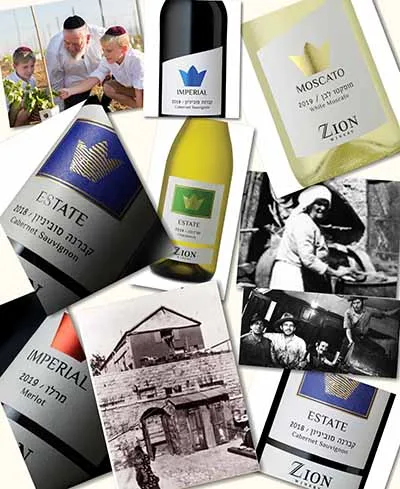
Zion is a winery that has been around longer than any. It has been known as Zion Winery from the 1940’s onwards, but previously to that was known at different times as the Shor family winery, Shor Bros or AM Shor Winery. It was founded in 1848 and remains the oldest of any existing winery. During all this time it has been owned by the Shor family, managed by the Shor family and uniquely, even the winemaker has always been from the Shor family. There is no winery in Israel that can compete with this richness of heritage, longevity and continuity. It was around long before names like Carmel, Baron Edmond de Rothschild, Rishon Le Zion and Zichron Ya’acov came to dominate the Israel wine scene. Why this is interesting is that most experts think Israeli wine began in the 1880’s, but in fact winemaking continued throughout the previous years, even if it was low key. Jews and Palestinian Christians always made wine, but it was more domestic and local, certainly not a commercial industry.
THE UNFINISHED WINERY
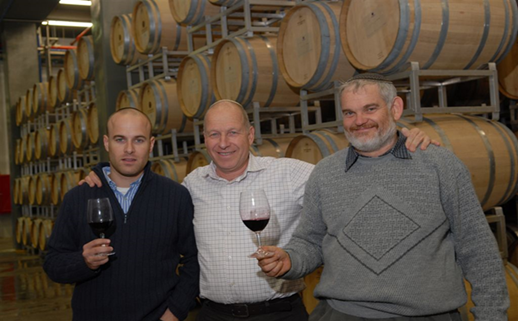
Teperberg Winery is without doubt in my mind the most improved winery in the last decade. Therefore, how appropriate it is, that this year they are celebrating their 150th anniversary. That is ancient for an Israeli winery. Most Israeli wineries were founded in the last thirty years. Out of the existing wineries, only the ones owned by the Shor family are older.
Teperberg Winery is now managed by the 5th generation, Moti Teperberg, who is also Israel?s longest serving current winery CEO. He has been at the helm since 1984. It is the third largest winery in Israel, after Barkan and Carmel, and also the largest family owned winery.
The family story began in 1827 when Avraham Teperberg fled Odessa to avoid compulsory conscription to the army and turned up in Austria. There, he picked up his German sounding name and was exposed to the wine trade for the first time. In 1850 he made Aliyah to Israel and in 1852 he began trading in wines and spirits. He was particularly successful in selling to Christian Arabs, German Templars and pilgrims.
His son, Zeev Zaide Teperberg, decided to establish a winery in 1870. It was situated between Yehudim and Chabad Streets in the Old City of Jerusalem, in a place occupied by a car park today. To put this in perspective, it was not a winery like we know today. It was a small, domestic affair, producing sweet wine in casks for use as Kiddush wine for Jews or Altar & Communion wine for Christians. The grapes included Dabouki and Hebroni, grown near Bethlehem and Hebron.
The third generation was Mordechai Shimon Teperberg. The company included a winery, a distribution business and wine shops in both Jaffa and Jerusalem. At one stage they even represented the wines of Carmel Mizrahi. However, in 1921 there was a debilitating, costly court case with Carmel, over the ownership of the logo. Both wineries claimed the logo of the two spies carrying a large bunch of grapes. The compromise was in Carmel?s favor and they continue to use this logo until today. In 1925, the British Mandate ruled that all industries should leave the Old City of Jerusalem and the winery was moved to Romema in Western Jerusalem.
In 1925 there was a joint venture between Segal and Teperberg to found a distillery in the Templar community of Sarona. The Segal bothers were to be the expert distillers and Teperberg?s responsibility was distribution, sales and marketing. The project failed. Raw materials were too expensive and at around the same time, the British Mandate permitted cheaper imports. The costs of the court case, failure of the distillery and tough trading times, impinged on the success of the winery. Mordechai Shimon wanted to leave the drinks business, but was persuaded to stay on by his Rabbi. In 1929 the winery went bankrupt. This means that of the wineries with roots that go back to the middle of the 19th century (Arza, Hacormim, Zion & Teperberg), only the Shor-Zion-1848 Winery branch of the Shor family has made wine continuously! All the others had breaks in wine production.
The Teperberg family winery was revived after the founding of the state in 1951 by Menachem Teperberg, Moti?s father, along with his brother Yitzhak. Initially there was a joint venture with a member of the Shor family, but later, the Teperbergs continued on their own. The winery was situated in Mahane Yehuda, and it was named Efrat, after the route the grapes travelled to Jerusalem from Bethlehem and Hebron. Menahem wisely decided to focus on wine and left the retail part of the business to another brother. In the mid-1960s, Efrat was a tiny winery harvesting just over 100 tons of grapes. The large wineries were then Carmel Mizrahi, Eliaz and Friedman-Tnuva, followed by Carmei Zion. These would later become known as Carmel Winery, Binyamina, Barkan and Segal.
In 1964, Efrat Winery moved to Moza, just off the Tel Aviv Jerusalem highway. By 1990 they were harvesting 250 tons of grapes. They produced inexpensive wines, kiddush wines and alcohol. I had the pleasure of meeting Menahem when he was ninety years old. He talked and talked, and I scribbled frantically. It was enlightening and interesting to scratch away the cobwebs of family folklore to get to the real detail of family history.
Moti Teperberg, the 5th generation, joined the business in 1976 and became CEO, at the young age of thirty-one. He has a brother who is a judge, a sister who was a school principal and has five children. His son, Amotz, worked at the winery until recently. He recently launched a gin with an innovative look, called Yu Gin. Amotz is talented and well respected in the trade. Hopefully he will return to the winery to keep the chain of succession going.
Through the nineties the winery began to grow. They were a strong presence in the Jerusalem area, but not so well known nationwide. The marketing was always rather dubious and the wines sold because of price and hechsher, rather than quality. There was no hint of what would follow.
By the year 2000, they were producing nearly 3 million bottles of wine, spirits and grape juice. As the winery grew larger, it was clear that it had out grown Moza. It was one of the most crowded, messy and chaotic wineries I have ever seen with the floor awash with a spaghetti junction of pipes everywhere!
The astonishing thing was that Moti Teperberg, who grew up in a shtetl of liquid religion (grape juice and kiddush wine), had the vision to see there was a different way. The hyper active Moti, more a businessman than wine guy, was to prove that not only he had a vision and but also would create his legacy.
The first sign of ambition was appointing an internationally trained winemaker for the first time. Shiki Rauchberger became the winemaker of Efrat Winery in 2002. He had studied at UC Davis in America and worked with Peter Stern, who was the wine consultant of the Golan Heights Winery for twenty years and then of Carmel Winery for a further five years. He was also winemaker of Herzog Wine Cellars. Stern was arguably the key individual in the quality revolution of both Israeli (with Yarden) and Kosher wine (with Herzog.) Shiki credits him with being the main influence on his career. Shiki became winemaker of Carmel?s Rishon Le Zion Cellars from 1993, where he was very respected, until Moti Teperberg tapped him to plot the metamorphoses from Efrat to Teperberg Winery. He is a very talented winemaker, who is most happy when being amongst the vineyards. He is also a truly nice guy.
Then, in 2006, Moti Teperberg moved the winery to a new, spacious site at Tzora, near Beit Shemesh (not far from Dir Rafat Monastery, Tzora Vineyards & Mony Winery). The winemaking team was strengthened with the addition of French born, Olivier Fraty, who trained in Bordeaux and great inroads were made in connecting the vineyards to the wines via the winery. The more recent addition to the winemaking team is the American born Daniel Friedenberg. Together the winemaking trio represent an impressive team, with everyone coming from different backgrounds, with different experiences.
For the first time in 140 years, Teperberg started making wine in the vineyards. Their vineyards range from the Golan Heights to the Negev, but most are situated in the Judean Foothills and the Judean Hills. The first attempt at rebranding introduced the name ?Teperberg 1870? to the Israeli market. This was a half hearted marketing job and did not really succeed.
After numerous changes in marketing strategy and personnel, the third master stroke of Moti Teperberg was employing a smart, meticulous marketing professional, Roy Harel. With great precision, and at no little cost, they rebranded the winery using the logo of a large ?tet? on the label (the first letter of the family name in Hebrew), basing the new look on history and family. The success of this image is clear. Wine buyers have been heard entering wine stores, and asking for wines with the ?tet? on the label! The new brands ranged from the entry level Vision, Impression, Inspire, Essence up to the premier label Legacy. The wines perform at every level and due to the smart marketing, the wines also have an impressive presence on the shelves.? The Essence Rose, Inspire Famitage (a Dabouki blend) and Inspire Devotage (Malbec Marsalan) are favorites of mine. The Legacy Cabernet Franc is outstanding. The new Teperberg Winery is as far removed from the old Efrat Winery as it could be. They now produce 6 million bottles of wine a year and harvest up to 7,000 tons of grapes annually. The turnaround during the last decade has been very impressive.
However, visiting the winery, gives one the feeling they moved in yesterday. There is no problem of space, but the winery still looks as though it is half finished. Offices and a tasting room are still in container like temporary rooms. The winery is in the heart of wine tourism country, yet there is no visitors center. Every time I have met with Moti in the last 15 years, he has assured me the visitors center is next on the list. I won?t hold my breath! In my view having a visitors? center and a professional training department responsible for wine education, and succeeding in hotels & restaurants and export markets, are all connected by a thread. They require a similar expertise and an investment in creating image. Selling image not just wine, is crucial to the success of a quality winery. The Golan Heights Winery taught us that in the 1990?s. As it is, Teperberg is the only one of the ten largest wineries without a visitors? centers. Slightly absurd for the third largest winery in the country.
Teperberg Winery have launched a few wines to celebrate their 150th anniversary. The ones I liked the most were as follows:
TEPERBERG IMPRESSION FRENCH COLOMBARD 2019. A delightful white wine. Fresh, fragrant with a flowery aroma and a refreshing finish. Only 11.4% alcohol, which makes a nice change. NIS 40
TEPERBERG INSPIRE CABERNET SAUVIGNON SYRAH 2019. A great drinking wine. Very fruity, with mouth filling flavor, good structure and the soft fruit flavors continue through into the long finish. NIS 65
TEPERBERG PROVIDENCE 2016. This the prestige, icon wine launched earlier in the year. It is a blend of Cabernet Sauvignon and Petit Verdot with a little Syrah, all grown in the Upper Galilee. The wine is deep with concentrated aromas of black berry fruit. It is full bodied, complex with full fruit flavor backed with nuances from the oak aging. It has a long well-balanced finish. NIS 250
The Unfinished Symphony may have been unfinished, but it was still by Schubert! The Teperberg Winery is unfinished, but this does not detract from the amazing strides taken in the last ten years. There are wineries making good wine with appalling marketing, and vice versa. To Teperberg Winery?s credit, the wines are very good at every price point, and they had a relaunch which did justice to the quality of the wines.
Avraham Teperberg entered the wine business as a trader. Zeev Zaide Teperberg founded a winery. Mordechai Shimon Teperberg engineered to move from the Old City to Western Jerusalem, and then the business became a victim of the economic problems of the time, the business possibly suffering from having too many interests. Menahem Teperberg, Moti?s father, reestablished a winery and made the decision to focus on wine. Moti Teperberg was then the one who brought the winery into the wine world. It only remains for him to finish the job, and then can pass his impressive legacy onto the next generation.
Wine trade veteran Adam Montefiore has advanced Israeli wine for nearly 35 years. He is referred to as the ?English voice of Israeli wine.? He is the wine writer for the Jerusalem Post. www.adammontefiore.com
Photos: Shani Brill, Yeshua Yosef, Teperberg Winery
THE UNFINISHED WINERY
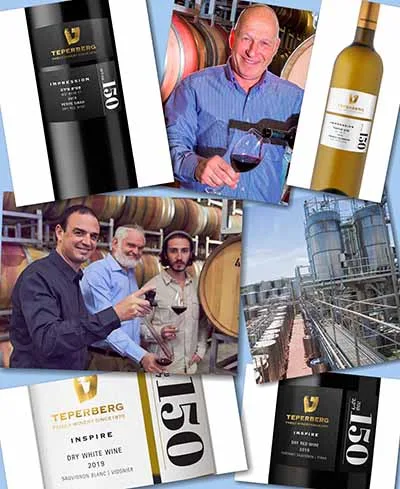
Teperberg Winery is without doubt in my mind the most improved winery in the last decade. Therefore, how appropriate it is, that this year they are celebrating their 150th anniversary. That is ancient for an Israeli winery. Most Israeli wineries were founded in the last thirty years. Out of the existing wineries, only the ones owned by the Shor family are older.
Teperberg Winery is now managed by the 5th generation, Moti Teperberg, who is also Israel’s longest serving current winery CEO. He has been at the helm since 1984. It is the third largest winery in Israel, after Barkan and Carmel, and also the largest family owned winery.
The family story began in 1827 when Avraham Teperberg fled Odessa to avoid compulsory conscription to the army and turned up in Austria. There, he picked up his German sounding name and was exposed to the wine trade for the first time. In 1850 he made Aliyah to Israel and in 1852 he began trading in wines and spirits. He was particularly successful in selling to Christian Arabs, German Templars and pilgrims.
His son, Zeev Zaide Teperberg, decided to establish a winery in 1870. It was situated between Yehudim and Chabad Streets in the Old City of Jerusalem, in a place occupied by a car park today. To put this in perspective, it was not a winery like we know today. It was a small, domestic affair, producing sweet wine in casks for use as Kiddush wine for Jews or Altar & Communion wine for Christians. The grapes included Dabouki and Hebroni, grown near Bethlehem and Hebron.
The third generation was Mordechai Shimon Teperberg. The company included a winery, a distribution business and wine shops in both Jaffa and Jerusalem. At one stage they even represented the wines of Carmel Mizrahi. However, in 1921 there was a debilitating, costly court case with Carmel, over the ownership of the logo. Both wineries claimed the logo of the two spies carrying a large bunch of grapes. The compromise was in Carmel’s favor and they continue to use this logo until today. In 1925, the British Mandate ruled that all industries should leave the Old City of Jerusalem and the winery was moved to Romema in Western Jerusalem.
THE ONE AND ONLY
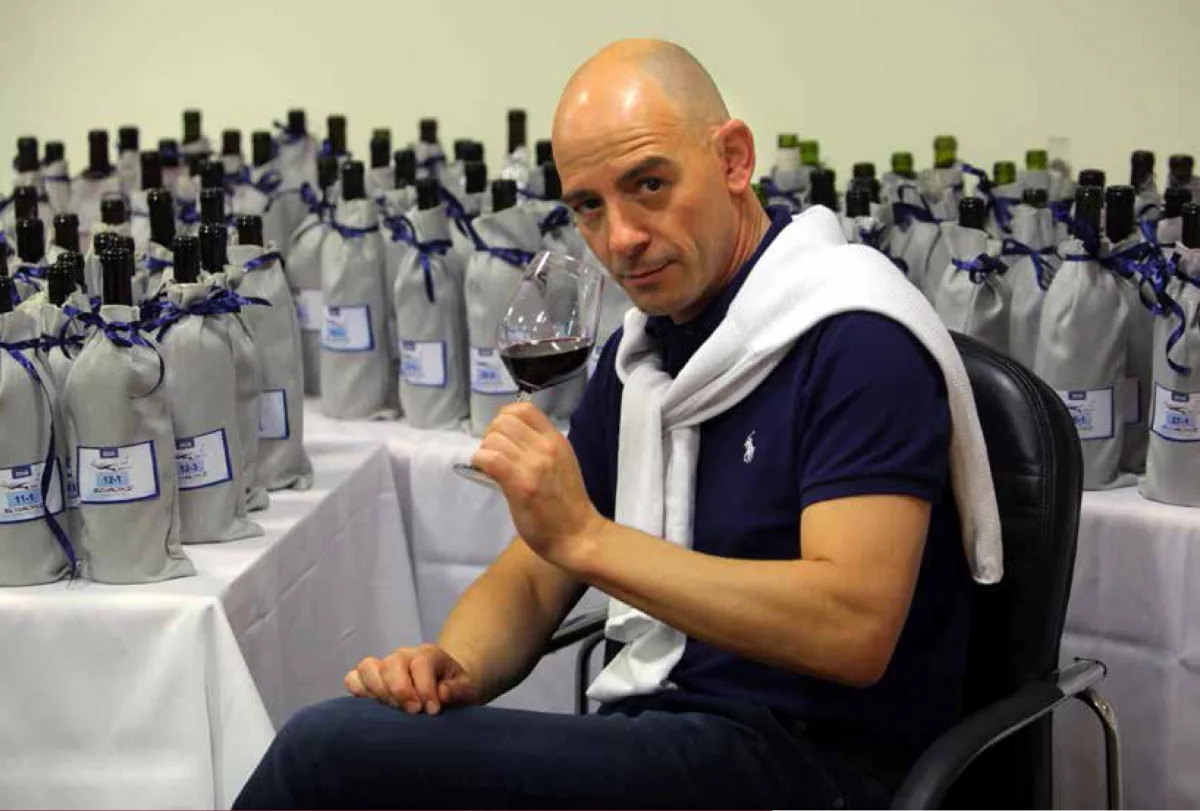
I first met Yair Haidu in 1994. He was then a tour guide with a focus on wine, who led a memorable visit of all the Golan Heights Winery employees to Bordeaux and Cognac. This role of ?wine tour guide? combined his love for sharing, his deep store of knowledge and what was for him a growing interest in wine.
He was then tall, thin as rake, with cropped spiky hair, round rimmed glasses, and a broad cheek to cheek, post box smile. He was a great raconteur, loved telling a story, was witty, enjoyed a laugh and how he loved to talk?.not a bad quality in a tour guide! He was relatively new to wine, but steeped in culture from the cradle, fiercely intelligent with a passion to learn and absorb knowledge. In the army he had served as a tour guide and this was a first career initially only in Israel, then later in France too, all the while graduating more and more towards wine, attracted like a moth to a flame.
Fast forward a decade or two and Yair Haidu is arguably the number one wine expert in Israel. Yet he is not a winemaker and does not work for a winery. He is neither a sommelier in a restaurant, nor is he a wine critic. However, he has the respect of the entire wine trade, particularly in Israel and Europe, as someone with unique knowledge, understanding and experience. He is famous for being who he is, more than for his achievements. The person it seems is greater than the sum of his career parts. His image is built on his persona, his character, his knowledge and his manner. The way he uses his strengths and how he interacts with people is why he has arrived at the pinnacle of Israeli wine.
His first main wine position was as manager of the Israel Wine Academy in 1996.The Golan Heights Winery wanted to establish a wine school, Yair Haidu was approached to manage it. If the truth be told, the Israel Wine Academy was not a great success. The idea was ahead of its time and maybe it was too ambitious for a winery to open a wine school, but Yair Haidu used the position to the maximum benefit to establish himself as an impressive figure. He was on the Israeli wine map.
After the Wine Academy, he joined Riedel, as the regional manager for Europe in 2000. Riedel of course is the most famous wine glass company in the world. This opened the doors of the wineries of Europe and established him as figure in the wine world. Yair Haidu began to build an international reputation. He was even selected to participate on the tasting panel of La Revue du Vin, France?s most important wine magazine.
In 2013, when El Al Airlines wanted to upgrade their wine package, they approached Yair Haidu and he became their wine manager. He selected the wines, trained flight attendants, introduced an innovative ?wines of the month? program and wrote informative wine lists, which won awards. His other major project in the last decade was becoming Brand Director for Nude, a line of designer glassware especially created by Haidu on behalf of the Sisecam Group, in Turkey.
Yair Haidu is also somewhat of an enigma. There should be numerous articles about him, but most of what I found when researching were shallow press releases. I have known him for 25 years, but I wanted to scratch beneath the well-polished surface and find out what I did not know, so we arranged to meet. Even though I have been around a long time, I found our discussion fascinating and absorbing. I was writing frantically while he talked. It was rather like a wagon of ripe fruit passing you by, and you grab what you can.
When you meet Yair Haidu, he is impeccably dressed, usually smart casual. He may be wearing a tight-fitting blue cardigan, a white shirt, narrow jeans, occasionally with a white scarf or sweater thrown strategically over his shoulders like an ornament. He leans forward with a slight bow of the head when he meets people. He is instinctively friendly, unfailingly courteous, with an old world, European politeness. You almost expect him to click his heels like an Austrian Count when he shakes your hand.
I asked him where his interest in wine came from, and he went back to his childhood, when from the age of 10 he would dissect the ingredients of the dishes cooked by his French mother. He was always acutely aware of tastes and smells. His father was the famous Andre Hajdu, the Hungarian Israeli classical music composer, recipient of the Israeli Prize. Yair, who was bought up as religious, was one of six children. It was a trip to Paris just before the army, that opened a door in his mind regarding wine. He was immediately attracted to the wine culture, the dust on the bottles in dusky cellars, the wine talk, the atmosphere and the people. He began compulsively buying and collecting wine. He remembers purchasing wines like the Yarden Cabernets of 1985/6, Carmel Private Collection 1988 and the Herzl edition from Askalon-Segal.
He studied philosophy at the Hebrew University and thought that an academic career beckoned, possibly focusing on philosophy, art or history, but wine nudged them aside. The wine that really pushed him through the door was a Ch?teau Figeac 1959.? This was his epiphany wine.
When talking about wine, his eyes light up and he trawls up from somewhere, memories of tastes of wines from way back. Jeff Morgan of Covenant Winery describes him as a wine impresario: ?I have sat down with Yair and was left with the feeling he knew my wines better than I do.? He has an intense curiosity, prodigious memory, a very well-developed tasting ability, and the imagination and vocabulary to vocalize it.
He describes Israel?s wine evolution and revolution this way. The 1970s was the rebirth of Cabernet Sauvignon. The 1980s represented the move to the mountains. In the 1990s small was beautiful. The 2000s was a decade of international education. In the 2010s Israeli wine discovered the Mediterranean. As for the 2020s, this will be the era of terroir and authenticity.
When I asked about grape varieties, he said these are the least interesting things in the discussion. He used Sancerre and Chablis as examples of regions, where the place and terroir, ends up offering added value over and above the grape variety (respectively Sauvignon Blanc and Chardonnay.) He went on to explain that Cabernet Sauvignon was a commodity. It could be NIS 50 or $5,000. The heritage of place is far more important than the variety. He clarified ?Wine should express a site and a person.? As for grape varieties, he said they are like musical instruments. It is what you do with them and how you use them that makes them relevant and interesting.
He salutes visionaries like Shimshon Welner, Segev Yerovam, ex CEO?s of the Golan Heights Winery (?in the 80?s and 90?s the Golan was the most significant locomotive in the wine revolution?), and trail blazers like Yair Margalit, Eli Ben Zaken, and Roni James, respectively of Margalit Winery, Domaine du Castel and Tzora Vineyards. Talk to him about any wines from 1976 onwards, and he will have an enlightening opinion honed from his experience and tasting abilities. If you want to find out how wines like Ben Ami 1977, Carmel Special Reserve 1976 and Yarden Cabernet Sauvignon 1984 taste like today, he is your man. There is no-one quite like him for tasting and remembering.
He lauds the unprecedented talent of today?s winemakers. He particularly admires winemakers like Gabi Sadan (Kerem Shvo) and Uri Hetz (Chateau Golan) for their search for authenticity and for making wine without embellishment. He also greatly respects Eran Pick MW (Tzora), Ido lewinsohn (Barkan), Asaf Paz (Vitkin) and Itai Lahat (Lahat). He explained to me there was a short path to make a good wine, but he prefers the longer path to make a great, more authentic wine.
Yair Haidu?s latest initiative is an innovative, new start up called Cheers. This is a concept designed to sell a ticket to the wine world and to empower the wine drinker. Prospective customers are invited to complete a clever questionnaire, from which Cheers will ascertain their taste profile. They will then select wines, designed to fit the customer?s needs, knowledge and curiosity. At a cost of NIS 350 a month, the customer will receive a surprise gift box of three wines, personally matched to their needs. Along with the wines they will receive an A4 page telling the story of the wine and winery. Yair Haidu sees himself as a story teller, helping the customer navigate this strangely inaccessible world. The idea is an ongoing journey of discovery, exploration, entertainment and experience.
He tastes 150 wines a week to find suitable wines in the NIS 110-150 category. ?This is a sweet spot where we can find wines to surprise, which we are prepared to stand behind.? Haidu says they are trying to connect with the wine drinker. He aims to build a bridge, create trust and have an ongoing conversation. Certainly, wine lovers and connoisseurs alike, and anyone who wants to learn, should pause to consider what Cheers is offering.
One of the most impressive things about Yair Haidu is that he tastes quietly, with concentrated curiosity in his eyes. He does not boom and pontificate like so many wine experts do, but gives his opinion more like an excited child. With apologies to Winston Churchill, maybe this wine expert with a Hungarian name is still an enigma, wrapped up in French joie de vivre, blended with Israeli creativity. He remains an outsize character inside the cocoon of Israeli wine culture. However, what he has to say and his method of delivery fascinates rather than alienates.? If wine is on the menu, his opinion or view is always worth hearing.
The writer is a wine trade veteran who has advanced Israeli wine for nearly 35 years and is often referred to as the English voice of Israeli wine. www.adammontefiore.com
MAPPING THE WAY

INTERFERE LESS, RECEIVE MORE

Yonathan Koren is a person of vision. He had a dream to found an organic winery, and did so, with no ifs or buts. When he became enchanted with Portugal as a wine country, he had the idea of setting up a Twinning Wineries concept, matching Israeli and Portuguese wineries. He took it upon himself to talk, schmooze and persuade the relevant authorities. He found support from the Portuguese Embassy in Israel and Israel Portugal Chamber of Commerce, and then from the Wild Douro tourism company in Portugal. Now, it is actually going to happen.
KATZRIN MEMORIES

Yarden Katzrin 2016 has just been launched, thirty years after the first Katzrin was made in 1990. To put this in perspective, thirty years ago Israeli wine was in a different place entirely…and so was I! In 1986, when I became wine manager for Bass Charrington’s hotel division, I started working with Israeli wines (Yarden, Gamla and Golan) for the first time. When I made Aliyah to Israel, I started working for Israeli wineries in 1990. When I arrived, the situation was as follows. The leading Israeli red wines were Yarden Cabernet Sauvignon 1985, Ha’yayin Shel Segal 1988 (Segal’s Wine), and Carmel Rothschild Cabernet Sauvignon 1985. People still talked about the Carmel Special Reserves of 1976 and 1979, and the award winning Yarden Cabernet Sauvignon 1984, and at that stage the first Margalit wine, the 1989, had been made but we are talking about individual barrels, so though appreciated, the wine was barely known. In those days I used to think the best red wines were made by Yarden, followed by Segal and the best white wines were also made by Yarden, followed by Tishbi (then Baron.)
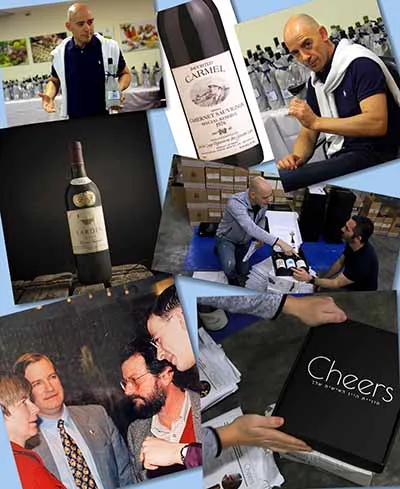
He is arguably the number one wine expert in Israel. Yet he is not a winemaker and does not work for a winery. He is neither a sommelier in a restaurant, nor is he a wine critic. However, he has the respect of the entire wine trade, particularly in Israel and Europe, as someone with unique knowledge, understanding and experience.
Paradoxically, none of the many things he has done in the world of wine has contributed to the building of this image. True he has written articles, taught wine, lectured, been on tasting panels…..even written a wine guide book. Yet, uniquely he is not associated with any one thing in particular.
TEARS OF BACCHUS
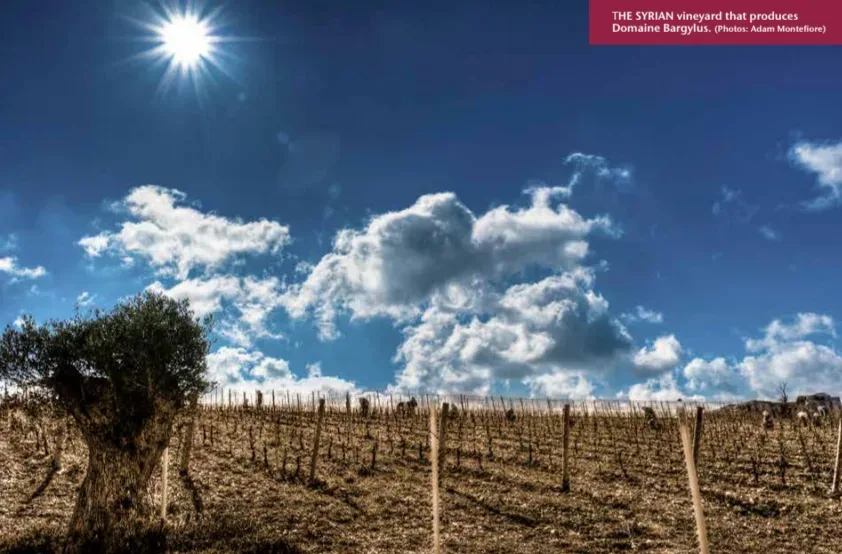
THE JOYS OF DISTILLED WINE
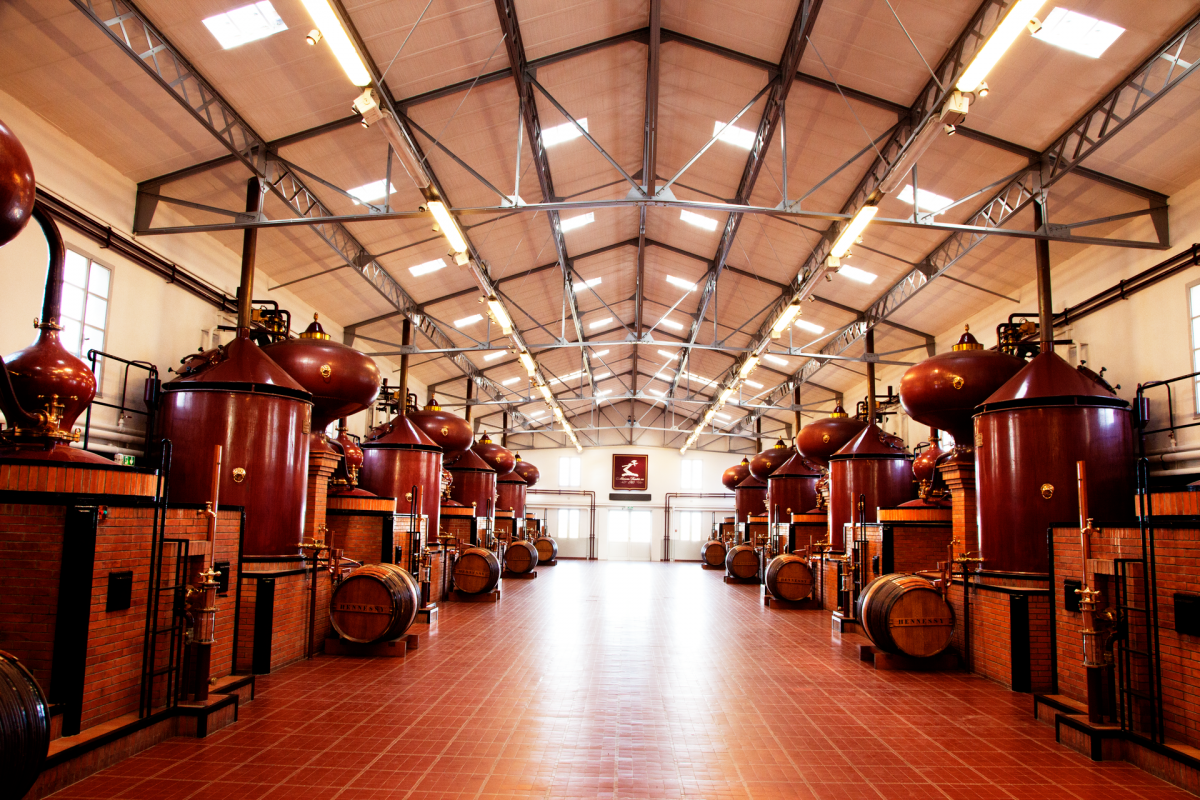
Whisky has become so popular in Israel. Bars have long lines of different age expressions of the famous brands. Feinschmeckers boast about the latest single malt they have bought in Duty Free. Many have forgotten its rich cousin called brandy, that is no longer prominent on the bar, or top of the list for connoisseurs. Certainly, in Israel, anyway. They are both distilled products that reek of heritage and quality. Whisky is distilled beer made from grain, whilst brandy is distilled wine made from grapes. They are both distilled in a pot still and matured in barrel. However, in America and China, brandy, particularly in its noblest incarnation, cognac, is more popular than ever.
I was reminded of brandy when I visited a recent pop up bar by Hennessy Cognac in one of Israel?s hippest Tel Aviv nightclubs. Now of course, all cognac is brandy, but not all brandy is cognac. Cognac is a little town in western France which contains the best brandies in the world. Hennessy is the royalty of the Cognac brand. It is part of the LVHM luxury group, that owns Moet et Chandon, Krug, Dom Perignon, Chateau d?Yquem, Chateau Cheval Blanc, amongst many others. Hennessy is the world?s largest selling Cognac with 50% of the market. It was founded in 1765 by James Hennessy.
The market is dominated of the big four: Hennessy, Martell, Remy Martin and Courvoisier. I visited Martell a few times in the 1980?s, because the company I worked for in the UK sold their cognac and visited Remy Martin with colleagues from the Golan Heights Winery in the 1990?s. We noticed the vineyard planted at the distillery. Those who visit the Golan Heights Winery today, should know the idea of the vineyard in front of the winery gates, stemmed from that visit.
I attended a tasting conducted by Hennessy brand ambassador Benjamin Smith. He explained how the Cognac region is made up of six wine regions, also known as crus, growing white wine grapes. Cognac is a protected and revered area. One kilometer outside demarcated region, and the resulting spirit has to be called brandy and not cognac. Smith told me it is the largest white wine growing region in the world. The main grape is Ugni Blanc, otherwise known as Trebbiano.? Ugni Blanc was in Israel and used pre-State to make white wines. The white wine is then double distilled in a pot still. The resulting eaux de vie (a clear distilled spirit) is selected, put in oak casks for maturation and then blended by the master distiller ? blender. As Benjamin Smith described it, the challenge is to make a consistent cognac, using what are by definition, inconsistent ingredients.
There are three basic levels of cognac. VS (Very Special) Cognac is aged for a minimum of 2 years, but is? more usually between 3 and 7 years. VSOP (Very Special Old Pale) is matured for between 4 to 15 years and XO is from 12 to 30 years. The Hennessy VS Cognac I found fruity, spirity and focused. The VSOP was deeper colored, smoother, with caramel and vanilla notes. The XO was richer, broader flavored, with a dried fruit character. The VS is I suppose more an aperitif or bar cognac, for drinking, or adding a mixer, like ginger ale, soda or lemonade. The VSOP and XO are better for after dinner, sipping through an evening with good friends.
Of course, as the base product is wine, there is a problem of Kashrut for the kosher consumer. There is however, now in Israel a cognac called Dupuy, which is kosher. Of course, most Israeli brandies are also kosher.
Here, there has been a long history of brandy production and consumption. If you have a surplus of grapes you have a few options. You can make grape juice instead of wine. You can sell the grapes, eat them, dry them to make raisins, or just let them fall unpicked. Or you can distill them. In 1898 Carmel started distilling the excess to make brandy. This was Israel?s first entrance to commercial distilling. Previously the only spirits produced were rustic arak, vodka, schnapps and eaux de vie made in rudimentary domestic stills. Carmel?s main brand of brandy pre-State was Extra Fine. This was a great value, fruity two star brandy, in something like an Armagnac bottle, that kept its original label virtually until its demise, in the 2000?s. Out of all Carmel?s brands, the label of Extra Fine was the oldest and longest lasting.
In 1938 a company called Stock started to produce brandy in Ramat Gan. Their Stock 84 was a best seller then, and has remained top of the charts ever since. Stock was founded in 1884 by an eighteen year old, Lionello Stock. The Jewish owned company settled in Trieste and was a great success until the rise of Hitler & Mussolini. Then the distilleries were pillaged, closed or nationalized. Because of this, Lionello Stock, had to rebuild his company again towards the end of his life and chose to make a start in other countries like America ? and Israel.
Stock combined with the partner WEST producing wine and spirits (Stock Brandy, Keglevich Vodka, Monfort wines etc). When it went bankrupt in 1988, Barkan grew out of the ashes to become Israel?s largest winery. They still produce Stock Brandy under licence. The brandy in Israel has always resembled fire water to me. It is popular with those that like an alcoholic bite, but less for those seeking a fruitiness and smoothness. However ever since its introduction to Israel, it has always been the largest selling domestic brandy.
After the founding of the State of Israel, an entrepreneur began to produce Richon 777 Brandy. The spelling reflected the French spelling of the word Rishon. 777 was chosen because of the importance of this number in Judaism, but also as a marketing gimmick to counteract Stock 84. It was soon taken on by Carmel, and became associated only with them. It was always a good drinking brandy, fruity, well balanced with a rich finish. It also was also good value.
Only just over twenty years ago Israeli brandies won the two biggest prizes for quality brandy then available. Jonathan Tishbi Brandy and Carmel Brandy 100 won the IWSC Trophy as ?Best Brandy Worldwide? at the International Wine and Spirits Competition in London. Tishbi had purchased an authentic alembic still from Remy Martin and Carmel 100 was originally made to celebrate that winery?s 100th anniversary. In 1996 I worked for the Golan Heights Winery. Due to a distribution agreement, I was also export manager for Tishbi Winery. So, I was there in the magnificent Guildhall in London, dressed like a penguin in bow tie and tuxedo, when Tishbi was presented with its trophy for brandy, and the Golan Heights Winery won the trophy for its sparkling wine. It was a uniquely proud evening for Israel.
Then having reached the heights, the local brandy scene crashed. High taxes, the opening of import barriers and the rise of malt whisky destroyed the Israeli brandy market. Carmel?s very last product produced from Rishon Le Zion Cellars was a rare expression Rishon Brandy, made from components matured between 15 and 30 years. I developed the concept and designed the label. It was my last contribution as a Carmel employee. Jonathan Tishbi Brandy, Rishon Brandy, and both Carmel Brandy 100 and Brandy 120 are exceedingly rare. You may be lucky to find one languishing in a wine store or at the winery shops, but they are likely to be expensive. The days of quality Israeli brandy is but a memory.
Rishon Le Zion Cellars is now closed and lies forlorn. The memorable brandy cellar with its wooden slatted roof, that used to be full of Limousin casks, is cleared and emptied. Even the wonderful rich angel?s share aromas that came from evaporated spirit, are now over taken by aging damp rot and a dank, dirty dust. Israel?s most historic winery is now a memory. In practice, it is a rundown car park where you can leave your car for ten shekels a day!? As for the beautiful old copper stills, they were sold for scrap. Tishbi?s Alembic Still lies virtually unused, but at least tourists can see it. Today only the thin, fiery concoction of Stock 84, has survived.
There is light at the end of the tunnel. New boutique, artisan distilleries have been founded. The best is the Julius Craft Distillery. Located in Kibbutz Hanita in the Western Galilee, they produce fine eaux de vie from local ingredients. They also produce a quality brandy called Jullius VI Brandy, distilled from Colombard and Viognier grapes. It is young though, and brandy needs the magic of time. There is also a jewel in an unlikely place. The Cremisan Monastery Winery in Beit Jalla, found an errant cask which was under the radar for thirty five years. It has now been bottled. Latroun Monastery also has a good brandy.
When I first came into this trade, cognac was tasted in brandy balloons, and old fogeys would heat the brandy before sipping. They would never have organized a tasting in a night club. Today, the world is different. The straitjacket is gone. The way you choose to drink cognac is acceptable, whether you add a mixer, use it as a component in a cocktail or add ice. The glass used is open for personal preference. No-one says anymore ?this is how you should enjoy cognac.?
Personally, I prefer to drink brandy in a thistle glass. This best concentrates the fruit aromas. With wine, one swirls the wine to aerate it and then puts one?s nose in the glass. With brandy it is better bring the glass vertically to and from one?s nose, nosing carefully to find the optimum position where you are able to identify the fruit without interference from the alcohol.
Now, even the cognac houses are keen to push the cocktail envelope. Hennessy asked our own, world famous Imperial Craft Cocktail Bar in Tel Aviv, to invent some Hennessy cocktails. I tasted them and the best was the chamomile infused Hennessy VS with genevre, lemon, pineapple syrup and Ardbeg mist.
Samuel Johnson had no doubts. He was quoted as saying: ?Claret is the liquor for boys, port for men; but he who aspires to be a hero must drink brandy.?
When you look at the bar or shelves of the wine store contemplating what to buy, and your eyes are drawn to all the whiskies, don?t forget to consider the slightly forgotten cognac or brandy, where the history is as rich and the quality no less good.
Adam Montefiore has advanced Israeli wines for over thirty years and is the wine writer for the Jerusalem Post. www.adammontefiore.com
THE SOUND OF SILENCE
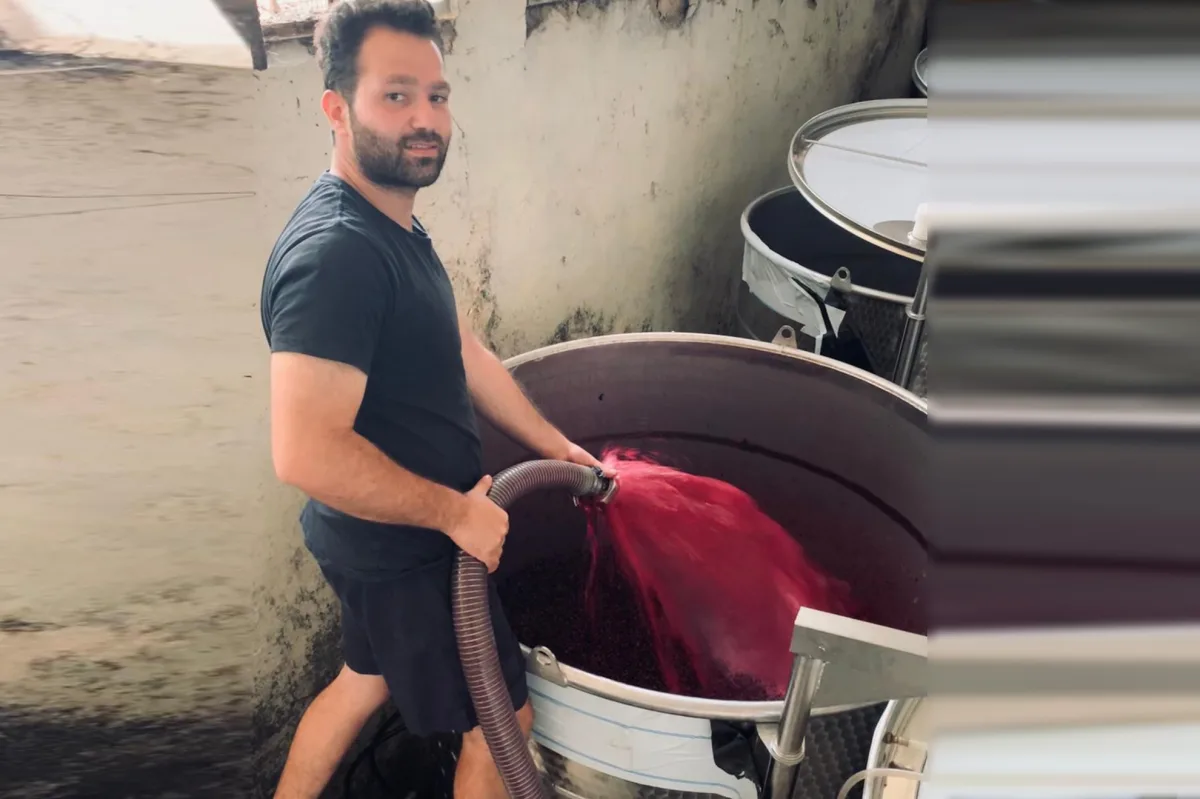
ARAB WINES IN THE LEVANT

Wine in the Arab world sounds like a non sequitur, but it is not. Don’t forget the Phoenicians were the greatest wine traders the world has seen and they influenced the prominence of the Levant in the development of wine and wine culture. Furthermore, the Lebanese today make wonderful wine. Their most well-known winery, Chateau Musar, is more famous than any Israeli wine and the previous edition of the World Atlas of Wine made the point that a wine from Syria, Domaine Bargylus, was considered the best wine in the Eastern Med. Humbling if you believe Israeli wines are the only wines in the world! I was recently fortunate enough to read ‘Tears of Bacchus: A History of Wine in the Arab World’, by Michael Karam. Michael and I are mirror images. He is English Lebanese in a similar way that I am English Israeli. He is the world’s spokesman for Lebanese wines. When I contribute about Israeli wine to Hugh Johnson’s Pocket Wine Book, The World Wine Atlas and Jancis Robinson MW’s Oxford Companion To Wine, Michael Karam is at the same time telling these publications the story of Lebanese wine.
THE NEW REALITY OF HOME WINE DRINKING

Sitting at home fans loneliness, frustration and even depression. After the restrictions of the last month, I think on one hand we can expect a baby boom in nine months? time, but on the other, there will also surely be a rise in violence within the family, and an increase in divorce and family break-ups. Opening a bottle of wine is encouraged, simply because it is an outlet which promotes calmness and relaxation.? There signs are that people are drinking. One of the few benefits of the prolonged time at home is that it has allowed us to take wine down to its essence. To leave the experts and pretentiousness behind, and enjoy wine for what it is.
Purchasing wine has changed, maybe forever. The on-premise consumption of wine is zero, also buying wine for festivals, parties and family get-togethers has declined drastically, with the closure and isolation. We should certainly give a thought to all the restaurants, wine waiters and sommeliers, whose frantically busy lifestyle was cut short in a second. Their situation is nothing short of a catastrophe. Yet wine sales have kept up. The reason is consumers are still visiting supermarkets to buy essential food supplies and while stockpiling toilet paper and eggs, they have continued also to buy wine. Furthermore, all those Israelis who usually travelled abroad during the spring and Passover period, stayed at home this year, adding a further 500,000 to 800,000 potential buyers to the local market.
There is also a novel concept, though not exactly new, that has received a massive boost and become an option for everybody. I am referring to online purchasing. The major supermarkets, in particular Shufersal but also Rami Levy, have increased their online sales substantially, and this trend is likely to continue long after coronavirus. Of course, the supermarkets have a far better range of wines than was previously the case. The days of supermarkets just listing cheap wines are long gone. The better Shufersals, Tiv Taam and Stop Market in particular have a great range of quality wines.
The larger wineries and big brands have continued to sell well, but I am concerned about smaller wineries without mass market distribution. Some are in for a rough time, and for others their very existence will be under threat. For this reason, wineries are having to think on their feet for new ways of marketing. They have without much afore-thought or planning, made swiftly concocted offers for direct delivery, door to door. In the future, wineries will have to be nimbler and more creative, with social media marketing ideas and streamlined, efficient distribution. The consumer is already enjoying new opportunities. The market will become more competitive and prices will come down. Under the new conditions, there is the attractive option to buy online and cut out the middleman.
One of the benefits of being at home, has been being able to enjoy wine exactly as we want, away from the prying eyes of the critical wine expert. Why is it with buying wine, that people feel such pressure, almost as though someone is critically looking over their shoulder? The same person is totally relaxed about purchasing food. But wine has to be exactly the right one in the eyes of the so-called experts. No-one wants to appear foolish. If you are buying for home use these days, you are totally released from this pressure, which anyway, is mainly self-created. You don?t have to choose a wine in a restaurant, with the critical raised eyebrow of the supercilious sommelier. You don?t have go to a wine store, where they might be recommending their own brands due to unseen interests. Nor are you hosting the wine snob boss or knowledgeable family member, who look down their nose at everything from glassware, bottle opener to the choice of wine. Much of the feeling of insecurity is in the mind of the unconfident wine buyer, but the isolation has swept these problems away in the current time. Drinking in isolation is between couples or to offset loneliness by the individual.
The wine drinker is also more relaxed about what he buys. No-one, not even the biggest experts, drinks expensive wines all the time. Not every wine is for tasting, discussing or putting on a pedestal. Some are simply for drinking. Israelis drink literally millions of bottles of Golan?s Hermon, Carmel Selected, Segal and Barkan Classic in a year, yet no-one rushes to say ?what a great Hermon or Selected I drank last Shabbat.? Yet people are drinking them. All the peer pressure about what we buy has dissipated, so if someone wants to drink an inexpensive wine, or even Lambrusco or Blue Nun, they can at home, without feeling the need to impress. Price and value are more important than ever, so the financially strapped wine drinker, can still enjoy a wine in these crippling times.
No doubt the ideal, is to have a temperature-controlled wine cellar or wine fridge at home. However, let?s get real. Most people do not have a cellar, wine room or wine fridge and buy wine to drink. If you at home, who knows or cares about your storage conditions? As long as basic rules are followed, the wines being kept on their side and avoiding light, heat and vibration, then the wine has a great chance to be ok. The current situation has reminded us of the massive customer base that drink wine, even if they are not geared up like we believe they should be.
Glassware is another real issue. The wine expert talks about wine glasses like some people talk about wines. There are glasses for every wine, many of which cost more than the wine itself. The wine expert may even judge the occasion, restaurant or visit to someone?s home from the quality of glassware. ?Ah, nice glassware? they will murmur, as though in relief. Now, it is true a wine glass does make a difference. Yet it was not long ago that restaurants used a simple Paris Goblet and wineries visitors center used very small ISO tasting glasses. We all survived and enjoyed wines nonetheless. Many households do not have a set of wine glasses. Sure, a proper wine glass is preferable, and a good wine glass really makes a difference, but in the privacy of your home, wine is being drunk from any available receptacle. Drinking at home, away from prying eyes, and people are drinking how they want, without feeling inhibited by their guests.
Matching food and wine is a great sport for both wine experts and wine professionals. So much so, that people buying the cheapest wine are often cowed into checking if the wine goes with the food they are preparing. They are more fearful of getting it wrong, than interested in getting it right! Sitting at home with your nearest and dearest, you are spared this trial. People are drinking what they like. If matching the wine to the food is not part of the baggage one has to deal with when buying wine, life is so much simpler.
Now, I have educated about wine all my life, but I have never denied the right of people to drink wine as they want. We have to admit though, that the wine trade, is geared mainly to the wine expert. The language used, the fruit basket tasting notes and pontification by experts, are all geared to appeal those in the club, yet they exclude everyone else, even though they are by far the majority. The expert will visit all the tastings possible, follow the wine scores in the Wine Advocate or Wine Spectator, and go to tastings where wines are tasted blind, usually one after the other. This is the life in the rarified world of the wine expert. The whole narrative is geared to a peacock like dance, but I am never for a minute seduced into believing this is how wine is meant to be enjoyed. However, the game is played by everyone. Wineries usually only show their higher quality wines in tastings and wine critics generally post about the better quality wines. This is a world that the wine trade encourages where the wine expert is king, but it is far removed from the general wine drinker. The current new wave of home buying has reminded us that the visible tip of the iceberg is wine knowledgeable, yet sometimes pretentious, whereas the mass of the wine buying public is largely unseen, under water. There is a whole world that the wine trade needs to cater for. These are the drinkers rather than the tasters, if you like.
This does not mean that wine is not aspirational. I love it when people are curious and want to learn more. Knowledge certainly enhances enjoyment. Sitting at home has generated a whole range of new wine experiences and inexpensive learning opportunities. Wine courses, debates and discussions by zoom, tastings on facebook, and learning via social media, has meant that the curious may learn about wine at home. There are no end of new opportunities to study wine from one?s armchair. There is nothing short of a stampede of wine educators and communicators, tired of sitting at home, desperate to be seen on facebook etc. This new state of affairs has been created by the lack of public meetings and is wonderful for the wine drinker wanting to educate themselves about wine, in a very inexpensive way.
I admit I am a little schizophrenic. I have one foot in the world of the wine trade and thrive with all the talk, the tastings and the discussions. I love reading about wine and talking about it as much as drinking it. However, I think the big failure of the wine trade is to not adapt and speak the language of the regular wine drinker, who is alienated by all the talk of forest fruits and astringency. This current spell of home drinking, crucial to the wineries, has reminded us about the hidden part of the iceberg.
Covid 19 has changed the way we purchase wine, opened new doors about how we can learn about it, and stripped wine drinking at home down to its essence. Even when we finally rid ourselves of coronavirus, we are likely still to be left with online marketing, education on social media and a more relaxed way of drinking at home.
Adam Montefiore is a wine trade veteran who has advanced Israeli wine for over thirty years. He is CEO of Adam Montefiore Wine Consultancy, a partner in Israel Wine Experience and wine writer of the Jerusalem Post. www.adammontefiore.com
KATZRIN MEMORIES

Yarden Katzrin 2016 has just been launched, thirty years after the first Katzrin was made in 1990. To put this in perspective, thirty years ago Israeli wine was in a different place entirely?and so was I! In 1986, when I became wine manager for Bass Charrington?s hotel division, I started working with Israeli wines (Yarden, Gamla and Golan) for the first time. When I made Aliyah to Israel, I started working for Israeli wineries in 1990. When I arrived, the situation was as follows. The leading Israeli red wines were Yarden Cabernet Sauvignon 1985, Ha?yayin Shel Segal 1988 (Segal?s Wine), and Carmel Rothschild Cabernet Sauvignon 1985. People still talked about the Carmel Special Reserves of 1976 and 1979, and the award winning Yarden Cabernet Sauvignon 1984, and at that stage the first Margalit wine, the 1989, had been made but we are talking about individual barrels, so though appreciated, the wine was barely known. In those days I used to think the best red wines were made by Yarden, followed by Segal and the best white wines were also made by Yarden, followed by Tishbi (then Baron.)
The largest wineries were Carmel Mizrahi, Eliaz and Efrat. WEST-Stock (Monfort etc) had just gone bankrupt. Including the monasteries and the ?Jerusalem wineries,? there were just twelve wineries in total. The harvest was half as much as today and in those days, Carmel Mizrahi had 75% of the market. Selected Emerald Riesling was the largest selling wine and whites outsold reds.
Golan Heights Winery came onto the Israeli wine scene like a comet and through example changed the Israeli wine forever. The idea of making wine in the vineyards, planting at high elevations, introducing advanced technology in the winery, prestige wine marketing, organizing innovative winery events for PR, were all was done for the first time under their watch.
In 1990, the winery decided to make Israel?s first super deluxe wine. The grapes were harvested and the wine was made by Jim Klein, who was the last winemaker of the winery before Victor Schoenfeld. Victor became Head Winemaker in 1992 and he made the blend, mainly Cabernet Sauvignon, balanced by Merlot. As a result of two winemakers being involved, Peter Stern, the Californian wine consultant who was an important figure to the winery in those days, had the honor of signing the back label.
Segev Yerovam was CEO of the winery at that time. Today he is scarcely known by the younger generation, but those who knew him, remember him as a legendary CEO and the visionary brain behind many of the winery?s ground breaking initiatives. He insisted on calling the wine ?Katzrin?, named after the small town in the central Golan, where the winery is situated. I was working for the winery at this time and I was one of those against this name. I thought it sounded harsh and for me, Katzrin did not conjure up something stylish and of high quality. However as usual, Segev was right. His instincts were always infallible.
Yarden Katzrin 1990 was launched in 1994. The wine was immediately priced up, and for the first time a wine was made to target the aspirational private collector, rather than the more regular channels of hotels, restaurants and wine shops. Buyers were rationed and the next wine was not made for another three years, so the hype and scarcity made for excellent marketing.
Yarden Katzrin became Israel?s first ?Icon? wine. In American parlance this is a wine costing more than US$100?..and Yarden Katzrin became the first Israeli 100 dollar wine. It used to be the height of showing off for a private collector to throw open his cellar and show how many Katzrin bottles he had. This was done by buying his allowance under his own name and then sending in his ?sisters, cousins and aunts? (with apologies to Gilbert and Sullivan), or anyone else that could help him increase his stash.
I have a few Katzrin memories of my own. 1994 was the year the Golan Heights Winery hosted the great Robert Mondavi at the winery. I had the honor and thrill of having dinner with him at Tapuach Hazahav Restaurant. His wife Margrit, an artist, drew an improvised drawing on a paper napkin, which I still have. A few years later I was invited to lunch at Mondavi Winery in Napa Valley with Peter Stern. We sat with Michael Mondavi, the elder son and the wine we drank was Yarden Katzrin 1990! For me to drink an Israeli wine with Mondavi at their winery, was a kind of coming of age.
Then, I remember a charity auction, one of the first in Israel, compered by television and wine personality Meni Peer at the Tel Aviv Hilton. The most expensive wine was a double magnum, three liter bottle of Yarden Katzrin 1993 which was purchased by the wine maker & educator, Barry Saslove. I don?t remember the price, but it was the most expensive Israeli wine ever sold at the time.
When I was export manager of the Golan Heights Winery, I was rationed to 10 cases of Yarden Katzrin for the whole of the world. Nothing creates interest like hunger. Instead of selling bottle by bottle, or case by case, I decided to go for broke. I visited one restaurant, Charlie Trotter?s in Chicago. At the time, this was one of the most famous restaurants in America. Charlie Trotter was an amazing, role model chef and his wine knowledge, a 26,000 bottle investment cellar and the attention given to high standards of wine service were unsurpassed. The second to none image for wine there, was created by the great Larry Stone MS, one of the world?s most famous sommeliers and a wine hero of mine. I went to the restaurant nervously carrying a bottle of the Katzrin and was graciously received by the sommelier Belinda Chang, who is also a very well-known sommelier. She received me in a formal way. There was no invitation to sit or time for small talk.? So, we stayed standing for the few minutes she had spare. She must have had so many reps visiting her. I was in the middle of my spiel, when Charlie Trotter himself, put his head round the door and said: ?we will take it all!? The story illustrates this wine?s part in creating a prestige category for Israel.
Another memory of Katzrin in the late 1990?s was the Golan Vintage Culinary & Wine Festival. At the Gala Dinner, Yarden Katzrin was served. I was with the famous French sommelier Philippe Bourguignon as he chipped away the wax from the top of the bottles so he could open them. We opened and tasted sixteen large format bottles. It certainly was extremely rare, even unique, for so many large bottles of Katzrin to be opened at one time.
After I left the winery, my interactions with the wine became rarer. I tasted the Yarden Katzrin 1990 at a recent Seder Night. It represents the year I came into the Israeli wine trade, so it had some emotional value for me. Unfortunately, the wine was passed its best. However, I was privileged to taste the Yarden Katzrin 1993 in 2018. It was a revelation, still youthful and everything in place?.after twenty five years! This reminded me again, that Israeli wine lasts longer that we have been led to believe and that Yarden wines are the best bet for long term cellaring, (along with Margalit in my opinion.)
Over the years, Yarden Katzrin has become less scarce. It is produced more often. Most times, the wine has tended to be basically a Cabernet Sauvignon, balanced with a little Merlot. The Golan Heights Winery are the kings of Cabernet. The Yarden Cabernet Sauvignon, Gamla Cabernet Sauvignon and Mount Hermon Red (a blend including Cabernet) are each market leaders at different price points. In some years (1996, 2000, 2003) a smidgeon of Cabernet Franc was added. More recently (in 2012 and 2014), a tiny amount of Petit Verdot and Malbec was added for the first time.
Now the 2016 has been released, virtually, because of Covid 19. It is only the thirteenth Yarden Katzrin to be produced. It is a groundbreaking wine. Firstly, it is thirty years since the first Katzrin was made. Secondly, it is the twenty-nine years since Victor joined the winery. Since then he has become an institution.
Finally, it is the first Katzrin made from all five Bordeaux varieties. It is a blend 75% Cabernet Sauvignon, 9% Malbec, 9% Merlot, 5% Petit Verdot and 2% Cabernet Franc. This is the lowest percentage of Cabernet Sauvignon ever, in a Katzrin wine.? Fortunately, it adds up to 100. Once in my time, the grape variety percentages on the back label added up to more than one hundred. The marketing people were prepared to die a death, but no-one noticed and the wine was lauded nonetheless! In theory the five traditional varieties of Bordeaux make a perfect blend. The Cabernet Sauvignon provides structure, the Malbec fruit, the Merlot a soft texture, the Cabernet Franc aroma and the Petit Verdot color and tannin.
How the winemaker makes a blend, is to isolate the finest plots for each variety. The Golan Heights Winery makes more than 400 boutique single vineyard, or rather single plot wines. These are aged and then tasted again, so the winemaker and his team are able to isolate the best of the best for what is the ultimate expression from the winery. In this case the different varieties are aged separately in small French oak barrels for 18 months. After final selection, the blend is returned to oak barrels for a further 6 months. The vintage of 2016 was also a good year and relatively stable, especially after the calamitous 2015. In fact, it was the shortest harvest by the winery in 22 years.?
Today, the Yarden Katzrin 2016 costs 490 shekels. The other famous Israeli prestige wines like Castel Grand Vin, Margalit Enigma and Tzora Misty Hills all cost under 300 shekels. Does the wine justify the price and the answer is never, but I suppose if you have to ask the price, then it is not the wine for you. The 1848 Winery Grand Reserve, Alexander The Great Grand Reserve, Dalton Matatia, Margalit Special Reserve and Clos de Gat Sycra Cabernet Sauvignon are examples of wines that break the 300 shekel barrier?.and they all get snapped up. So, prestige, rarity and exclusivity are traits of a wine that need to be taken into account, not just quality.
When the Bordeaux classification was made in 1855, a ranking was made listing the best wineries on the Left Bank of Bordeaux (luckily it is called the Left Bank, rather than West Bank!). Chateau Lafite was selected as the first of the firsts. Astonishingly, this same ranking still carries weight today, yet the ranking was primarily made on price. By this criteria, Yarden Katzrin is also a statement, with added value and status. It is a target for collectors and it has maintained its mythical image that it had back in 1994.
Over all this time, the label has barely changed. It is still in a tall, handsome bottle, with a stylish narrow, black label. Look at the best wines over the years and the labels barely change. Castel, Margalit, Clos de Gat and Yarden have the same look they always did. Compare this, for instance, to Carmel and Barkan over the same period, where each new manager feels compelled to make their own label changes as if to signify they have been there!
Funnily enough, the Golan Heights Winery has launched this wine without giving journalists an opportunity to taste it. So, I will do something I have never done, which is to reproduce Victor?s tasting note: ?The 2016 Yarden Katzrin hints at its richness with the first whiff of its aroma. This special wine expresses attractive characters of ripe cherries, blackberries and plums, intermingling with pleasing notes of orange peel and chocolate, earth and herb, flowers and spice. Full bodied, this complex wine displays concentrated flavors and a very long finish.? Normally a wine critic writes about a wine they have tasted. In this instance, I can only say with all the authority I can muster: ?Well, it sounds like a good wine!? As for taste, you will have to take Victor?s word for it!
Anyway, I am a story teller more than a critic, and after thirty years since its first launch, it is worth telling the story of what became Israel?s first cult wine. The production of Yarden Katzrin 1990 remains a milestone in the evolution of Israeli wine and the Yarden Katzrin 2016 reminds us that the quality, consistency and professionalism is ongoing.
Wine trade veteran Adam Montefiore has contributed to the advance of Israeli wines for nearly 35 years. He is referred to as ?the English voice of Israeli wine?. He is the wine writer of the Jerusalem Post. www.adammontefiore.com
Photos Yarden Katzrin 2016: Haggit Goren
SHOR FAMILY, MONTEFIORE & RETURN TO ZION

Zion is a winery that has been around longer than any. It has been known as Zion Winery from the 1940?s onwards, but previously to that was known at different times as the Shor family winery, Shor Bros or AM Shor Winery. It was founded in 1848 and remains the oldest of any existing winery. During all this time it has been owned by the Shor family, managed by the Shor family and uniquely, even the winemaker has always been from the Shor family. There is no winery in Israel that can compete with this richness of heritage, longevity and continuity. It was around long before names like Carmel, Baron Edmond de Rothschild, Rishon Le Zion and Zichron Ya?acov came to dominate the Israel wine scene. Why this is interesting is that most experts think Israeli wine began in the 1880?s, but in fact winemaking continued throughout the previous years, even if it was low key. Jews and Palestinian Christians always made wine, but it was more domestic and local, certainly not a commercial industry.
The Zion Winery has always been under the radar, supplying its own market sector, modestly, without bells and fireworks. Yet, it has quietly grown to become the 6th largest winery in Israel, producing 3.5-4 million bottles a year! Now, it is being relaunched with a new logo, new labels and a new attention to quality at every price point.
Theirs is a family journey lasting 170 years, which began in the Muslim Quarter of the Old City of Jerusalem, travelled via Beit Israel in Western Jerusalem and ended up in Mishor Adumim in the Judean Desert, but not so far from Jerusalem. The winery was born under the auspices of the Ottoman Empire, continued under the British Mandate and finally, flourished in the State of Israel. It is an extraordinary story, and its beginnings coincided with the visits to Israel of a member of my family, Sir Moses Montefiore. This makes their story doubly interesting for me personally.
It began when Rabbi Mordechai Avraham Galin (aka Galina), arrived from the Ukraine in 1835 and settled in Safed. The family moved to the Old City of Jerusalem when he became head of the Yeshiva ?Tiferet Yisrael.? Englishman, Moses Montefiore was the most prominent visitor to Palestine in the 19th century. He saw first-hand the poverty and overcrowding of residents there. In 1839, he suggested Jews should earn a living instead of barely surviving off charity and he became the first to recommend that they should return to agriculture.
Yitzhak Galina-Shor, Rabbi Mordechai?s son, took into account the experiences of his father and the vision of Montefiore. He understood the family needed to earn a livelihood and saw potential in producing wines. It is fortunately a fact that observant Jews have always required wine for religious ritual. His sister had married a Baruch Shor, who by chance happened to have a rare license given by the Ottoman Turks for trading in alcohol. So, they changed their name to Shor, used Baruch Shor?s license and opened a winery in 1848 in the Old City of Jerusalem. The first harvest of the new winery coincided with Montefiore?s third visit to the Holy Land. It was a domestic winery, in the heart of the Muslim quarter, adjacent to the Kotel Hakatan (Little Western Wall). They put barrels as a barrier alongside the holy wall, so no-one would inadvertently touch the forbidden Temple Mount. Ironically, the first evidence of the family?s involvement in the wine trade was contained in the census commissioned by Moses Montefiore in 1849.
Then it was a very different world. In those days there was no bottled wine, no labels, no brands and no kashrut certificate. Wine was sold in small casks. It was categorized as sweet or sour, but over 95% was sweet. The Shor family winery also produced arak, brandy and vodka.
All Shor Winery?s grapes came from Hebron vineyards owned by Arabs. Payment was made in advance to reserve the crop. Local grapes like Bittuni, Dabouki and Zeini, now being revived, were amongst the varieties used. Grapes were delivered to the winery on a drove of donkeys travelling from Hebron.
Moses Montefiore, a forerunner of Zionism, was a wine lover, who drank a bottle of wine every day. He visited the Holy Land on seven occasions. At every meeting, he was presented with wine as a token of respect by the local community. Then wines did not have brand names, but the description ?Hebron wine? comes up in his diaries many times. Montefiore himself was one of those who bought small casks of wine as souvenirs. It is true that wine is not at the forefront of any history of Montefiore, but all the evidence is there in his diaries. Who knows, maybe one of the wines from Hebron he drank or the cask he purchased, was from the Shor family winery. It was certainly quite possible to have been the case.
As the Shor Winery became established, Moses Montefiore continued his commitment to agriculture and Jerusalem. In 1855 he became the first person to buy land for Jewish agriculture, purchasing an orchard in what was then considered Jaffa, but today it equates to the Montefiore Quarter of Tel Aviv. He also bought the land which became the first neighborhood outside the Old City of Jerusalem to alleviate overcrowding. It was stony and was covered with wild vines and olive trees, so he named it ?Kerem Moshe? (Moses? Vineyard.) This area was later renamed Mishkenot Sha?ananin and Yemin Moshe, and it became the cornerstone of modern & western Jerusalem. He also built the iconic windmill in 1857, which is today known as the Montefiore Windmill. It was in accordance with his original vision: work and study. As written in Ethics of the Fathers: ?If there is no flour, there is no Torah; if there is no Torah, there is no flour.? He instructed residents to plant vines and olive trees to get a taste of agriculture. However, planting of Jewish vineyards on a national scale did not really begin until the 1880?s, and then it was with the sponsorship and expertise provided by Baron Edmond de Rothschild.
In the meantime, the wine trade proved to be a success and the Shor family winery became the foremost wine producer in the Old City. When Yitzhak passed away, the baton was passed onto his son, Shmuel Shor, and his legendary wife, Rosa. She was a formidable woman. She opened a wine store called Khamra Rosa in the Cotton Market. It was not the first shop selling wine and spirits, but it was the first shop to operate like a wine bar and because of her character, it was by far the most famous! Her memory lives on. Arab elders still give respect today to a visiting member of the family, as soon as they hear they are related to Rosa.
In 1925 the Shor Winery had to leave the Old City on the request of the British Mandate. They moved to Beit Israel. In the new winery, the living quarters were on the top floor, the winery on the ground floor and the cellar, previously a water well, was in the basement. When Shmuel Shor passed away, Rosa took over, becoming the first ever female manager of a winery in Israel.
Glass became cheaper and wine gradually came to be sold in bottles. Bottling was done manually. Alicante became the main variety. Early labels were strictly informative with basic typed information on a white background. Then when they began to be used for marketing purposes, labels became more colorful.
In 1944, the company name was changed to Zion Winery. As the family had grown, the two brothers who were partners, decided to split the business. There was an agreement. Avraham Meir Shor?s Zion Winery continued to focus on wine and grape juice, whilst Moshe Shalom Shor?s new Shimshon Winery concentrated on spirits and liqueurs. Moshe Shalom Shor passed his Shimshon Winery onto his son in law and daughter. It was later sold and is today known as Jerusalem Wineries. His other children founded new Shor owned wineries, which in time came to be known as Arza and Hacormim wineries. However, Zion Winery was the one that had continuously made wine since 1848.
Two things surprised me about this Haredi, Ashkenazi family. Firstly, the family spoke Arabic, which was logical and practical, so they could communicate with their neighbors and suppliers. Secondly the family served in the IDF. Unfortunately, in the War of Independence, they had to recover from devastating blows.
In 1982, the Zion Winery moved to Mishor Adumim. In 1989, I became the first member of my family to make Aliyah, along with my wife and three children. In the five generations since Moses Montefiore no one else had taken the plunge. I began to work in the Israeli wine trade and was eager to learn everything I could. I was intensely curious about what was referred to as ?the Jerusalem wineries,? who no-one knew anything about. These included Zion, Arza, Hacormim and Shimshon. So I decided to visit them out of the blue in the early 1990?s. There was a certain surprise to see me, because outside visitors were rare. I saw wineries which were in a kind of time warp. It was simply how they were then. They were insular, inward looking, and devoted to providing cheap wines and liquid religion to the religious community.
What has happened since then at Zion Winery is astonishing and I have been able to monitor every stage, firstly as a competitor (with the Golan Heights and Carmel wineries), then as a wine writer and finally as a consultant. I have visited them over three decades and got to know three generations of the family, whom I spent time with in turn, in order to learn the inside story. The truth is that they have built a very serious, well-equipped state-of-the-art winery, which is spotlessly clean. The winery grew and expanded, but really took off in the 2000?s. There were three family members who created what is nothing short of a revolution. The late Moshe Shor, the CEO, was the driver. He was a bulldozer and had a fascination with machinery and equipment. He began a process of investing in the winery. When I was at the winery, he was never in the CEO?s chair, but usually in the winery checking out that things were working. When I visited not so long ago, there were incongruously a number of Chinese people in the winery. ?Who are they??, I asked. ?Oh?, I was told ?they are installing a robot for the bottling line!?
Then there was his nephew, Zvika Shor, who took over from his father as winemaker in 1992. Zvika Shor is bright, friendly, with a Herzlian beard and striking blue eyes. He has absorbed the proud heritage of the Shor family and lately has been at the center of a whirlwind of changes. It all began one harvest in 1995 when a grower rang him up and said ?I have some spare Cabernet Sauvignon. Can you use it?? By that time Carignan was the main variety used, but Zvika thought no harm in trying, so he said yes and fermented the wine in a small fiberglass tank in the corner of the winery. When he leant over and put his nose in the container, the power and depth of the aromas was so much greater than anything he had had before. He was hooked. It was an epiphany moment. For the first time they purchased better quality grapes and brought their first small oak barrels from Teperberg. After a lifetime in wine, with no ego and being unafraid to ask questions, Zvika Shor, who was virtually born in a bottle, started his education again.
The third key to success was Yossi Shor, son of Moshe. He was the dynamic, creative marketing manager, with a modern outlook. What Moshe managed to do within the winery and Zvika achieved with the wine, Yossi succeeded to do outside the gates of the winery, with drive, a new vision and innovation. Both the quality of the wines and the look of the bottles were improved. In 2007, the Terravino Competition was held in Eilat, and Zion Winery stole the show by winning four gold medals. It was the first time they were noticed in the mainstream wine trade. I was there and remember well the incongruous setting as the white shirted, black frocked haredim went up to receive their well-earned trophies, in Eilat of all places! As Zvika said to me, ?With food comes an appetite.?
Then Yossi started his own initiative. He planted new vineyards, founded the 1848 Winery, a small winery making handcrafted wines, and appointed a French born, Bordeaux trained winemaker. Leading consultants were employed covering the areas of viticulture, winemaking and marketing. Where Zion wines ended, 1848 began. Zion Winery was more geared to mass market wines providing great value, 1848 Winery was more for quality, handcrafted wines for wine stores and restaurants
When I started visiting them again, I was able to see immense changes. It made me think of the beginnings of the Galina-Shor family winery, the visits and vision of Moses Montefiore, and their efforts to build a new Jerusalem. This is after all, a wine family that has now made wine in three different centuries: the 19th, 20th and 21st. When I visited Zion Winery recently, I felt it was like a closing of a circle. Sadly, Moshe Shor z?l passed away, before his time, like his Biblical namesake, before seeing the final results of his work. However, now Zion Winery has been rebranded, with a new logo and bright, eye catching labels. The wines range from the entry level Palace, to the Imperial, Estate and Capital brands, up to the flagship Crown label.?
The Shor family, Moses Montefiore and Zion Winery were each symbols of the return to Jerusalem and its revival as a modern city. They represent both the history of wine in Israel and the modern history of Jerusalem. Zion?s wines are fresh, fruity and vibrant offering a great QPR (quality per price ratio). Only in this instance, the bottles conceal a history that goes back deep into the 19th century. History in a bottle at prices everyone can afford!
Zion Moscato. This is a white Moscato made from Muscat of Alexandria. It is low alcohol, slightly sparkling with a light sweetness. The wine is fruity, grapey with a spritzy, mouth full of flavor. Good with fresh fruit?or an anytime wine for those that like it! (NIS 20.90)
Zion, Estate Chardonnay. A beautiful modern style Chardonnay. Fresh, with good acidity and green apple and tropical aromas. It has a smooth mouth feel and a crisp finish. Great value. (NIS 40)
Zion, Imperial Cabernet Sauvignon. Light bodied, bright and fruity with mouth filling flavor and a fresh finish. A perfect drinking wine. Serve it slightly chilled. (NIS 30)
Zion, Estate Shiraz. This wine is fruit forward. It has a juicy, red cherry-berry aroma and satisfying full fruit, chewy flavor. It is refreshing and great value. (NIS 40)
Adam Montefiore has advanced Israeli wines for 35 years and he is referred to as the English voice of Israeli wine. He is the wine writer of the Jerusalem Post. www.adammontefiore.com
THE NEW REALITY OF HOME WINE DRINKING

Sitting at home fans loneliness, frustration and even depression. After the restrictions of the last month, I think on one hand we can expect a baby boom in nine months’ time, but on the other, there will also surely be a rise in violence within the family, and an increase in divorce and family break-ups. Opening a bottle of wine is encouraged, simply because it is an outlet which promotes calmness and relaxation. There signs are that people are drinking. One of the few benefits of the prolonged time at home is that it has allowed us to take wine down to its essence.
Wine and War
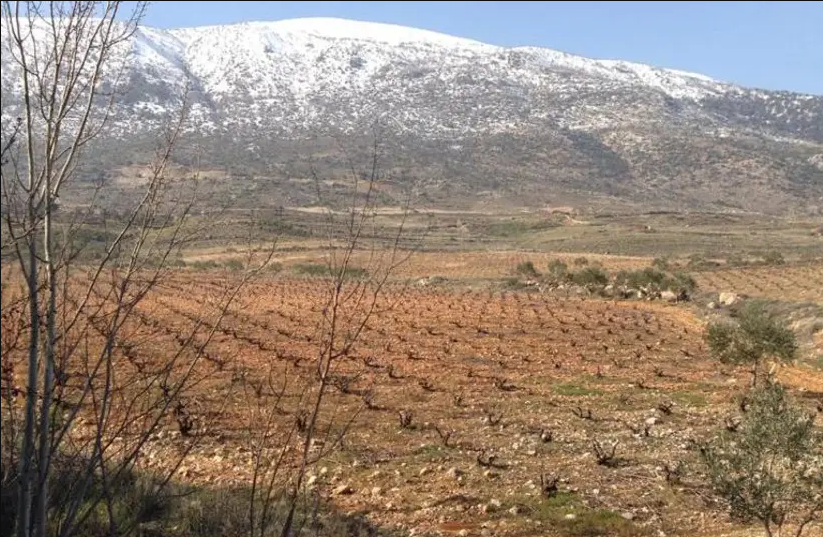
THE JOYS OF DISTILLED WINE
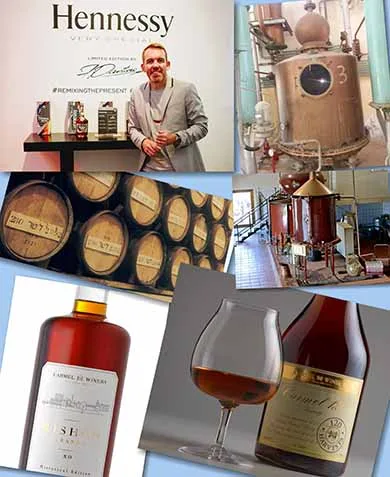
Whisky has become so popular in Israel. Bars have long lines of different age expressions of the famous brands. Feinschmeckers boast about the latest single malt they have bought in Duty Free. Many have forgotten its rich cousin called brandy, that is no longer prominent on the bar, or top of the list for connoisseurs. Certainly, in Israel, anyway. They are both distilled products that reek of heritage and quality. Whisky is distilled beer made from grain, whilst brandy is distilled wine made from grapes. They are both distilled in a pot still and matured in barrel. However, in America and China, brandy, particularly in its noblest incarnation, cognac, is more popular than ever.
YOUR CUP OF WINE
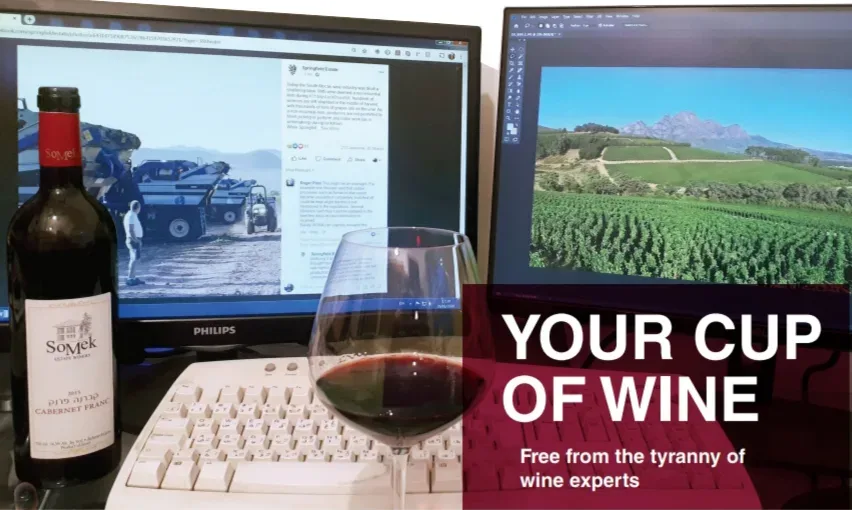
BARTENURA AND BARBERA
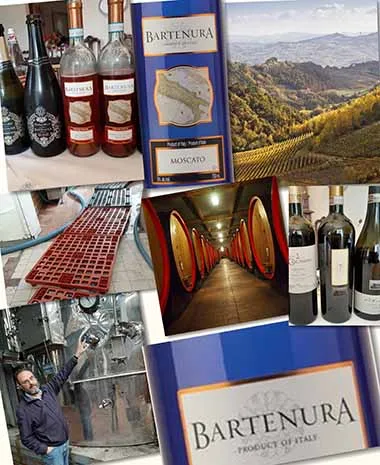
The first Moscato wine I ever tasted was believe or not at the Robert Mondavi Winery in California in the 1990’s. I remember thinking, now that’s tasty and original! As usual in those days Mondavi was ahead of the game. The Mondavi of Israel in terms of the pioneers, was the Golan Heights Winery. Not surprisingly, they were first to bring the Moscato style to Israel.
THIS NIGHT IS DIFFERENT
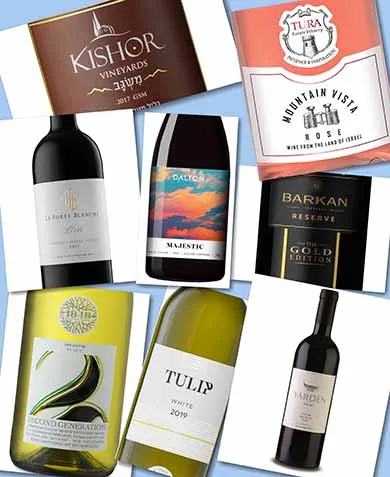
Passover time again. Our annual wine festival, where Israelis and Jews all over the world, drink four cups of wine. During Seder Night, the youngest in the family will ask the question: “Why is this night different from all other nights?” The answer is plenty. Lock down, isolation, limited groups, staying away from Grandparents. Everything is different this year because of Coronavirus. However terrible the situation is, it does not release anyone from the obligation to celebrate the Seder and drink the wine. No doubt the numbers at each gathering will be smaller. Families that traditionally celebrated together, will probably need to break up into smaller groups.
TURKISH DELIGHT
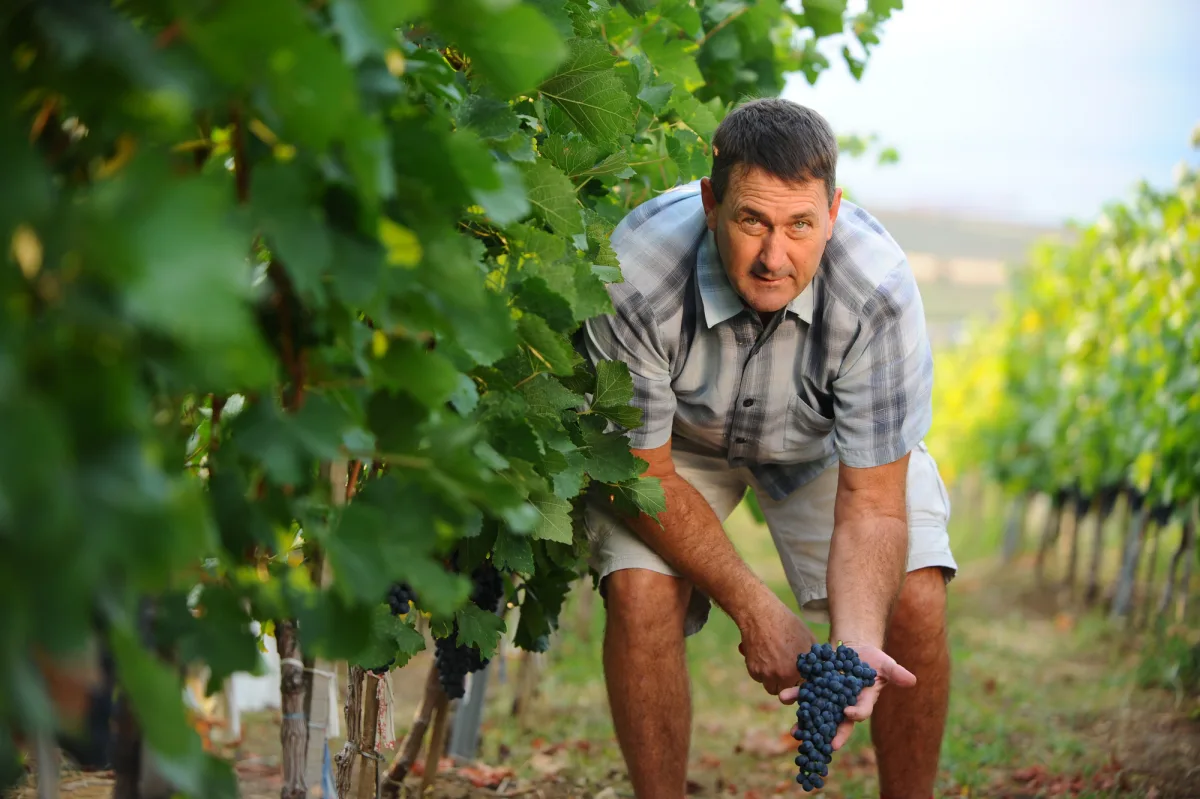
Turkey is a fascinating wine country, with a history as long as wine itself. I have always believed we should be less Israel-ocentric and take time to learn from our neighbors. Remember, kosher is not a country and Israel is not an island. We belong to a region; the Eastern Mediterranean wine region. Of course, it is a region with borders defined by war, discord and religion. The relations between Israel & Lebanon, Greece & Turkey, and Cyprus with Northern Cyprus, are scarcely made in heaven. There are things in common though. The sun, sea, mountains, stony soils, mud coffee, the anise flavored spirit (Ouzo, Raki or Arak), the east med cuisine?and the wine of course. One should not over simplify things, but in general, Christians make wine in Cyprus, Greece and Lebanon; Jews are the winemakers in Israel, and Muslims make the wine in Turkey (and in Northern Cyprus for that matter.)? However, this fertile crescent was the hub of the wine trade over 2,000 years ago, the France and Italy of ancient times in terms of production and the cradle of wine culture.
If the Biblical narrative is correct, Noah was the first wine grower. When the ark came to rest on Mount Ararat, he planted a vineyard. Mount Ararat is in Eastern Turkey. Here the Biblical story matches archaeology. It is close to one of the earliest sites where grape pips have been found, and not far from where the oldest ever winery has been discovered. The Hittites made wine here and came up with the immortal phrase, which I frequently quote: ?Eat, drink and be merry, for tomorrow we may die.? A great recipe for life, encouraging one to live in the moment.
Turkey is a massive country, which extends from Greece in the west, all the way to Georgia and Armenia in the east. As such Turkey connects the Eastern Mediterranean with the Ancient World of winemaking. The winemaking history has had ebbs and flows over the years, depending on the religious edicts of the time, which were always considered against the economics benefits of the wine trade. In the late 19th century there was a boom period, as wine was supplied to France and Italy, when they became affected with phylloxera, which destroyed their vineyards. However, many of the winemakers were Greeks or Armenians. After the population swops of the 1920?s, many of the Christian winemakers left, and the country became predominantly Muslim.
The first president of modern Turkey was Kemal Attaturk. He wanted the right balance between state and religion, and arranged for a state wine and spirits monopoly to be founded in 1927, which was called Tekel. They made Raki and wine, and sold grapes to the first private wineries. These were Doluca founded in 1926 by Nihat Kutman, and Kavaklidere established in 1929 by Cenap And.
It will surprise many that Turkey has the 5th largest vineyard area in the world, but only 2-3% of this goes into production of wine. There are 164 registered wineries and a number of new wineries, with large investments in quality, were founded in the 2000?s. In the 1990?s international noble varieties were planted, but since the turn of the millennium, wineries have focused more on quality and local varieties have come to the fore. Turkey has a treasury of 1,200 indigenous varieties, of which about 35 are used in winemaking. Production is about double of Israel?s, and exports total $10 million. Consumption is a mere one liter a head. Raki is far more popular than wine.
In 2005, the state monopoly was privatized and bought by the Texas Pacific Group. The Raki business was seen as promising, but the wine side was losing money hand over fist. A Californian winemaker Daniel O?Donnell had worked with TPG when they purchased Beringer from Nestle, so they decided to send him to Turkey to find out what was going on.
Daniel O?Donnell came from St.Helena in Napa wine country, where he was a chef. When he received an offer for his caf?-restaurant, he sold it and started working at Ravenswood Winery, one of the iconic wineries especially famous for its Zinfandels. It was a fortuitous career change. He found a new passion and changed course. When Constellation bought Ravenswood, he moved on, but by that time he was already wedded to wine. He studied, gained more experience and became a consultant or flying winemaker.
He arrived in Turkey thinking he would be there three months. What he found horrified him. There were seven wineries, dirty, dank, with old primitive cement tanks and a lack of clean barrels. The vineyards were a patchwork of vines under different ownership. Growing grapes was to make raisins, wine was way off the radar. Pruning meant letting the goats into the vineyard. Harvesting was a matter of doing it when you could, then the grapes would be left in the sun, sometimes overnight, until the donkey or dilapidated tractor were available to take them to the winery. Turkey had made wine for 7,000 years, but there was no winemaking protocol. Nothing was written down. Wine was made on distant instructions from French advisors, but no one could taste and evaluate the results, because they were Muslims.
Why did he last even three weeks? Simply he tasted Turkey?s indigenous grape varieties, and a spark went off in his mind. He had never tasted anything similar before. So, he went into action like a whirlwind. Five of the seven wineries were closed, 16 million liters of wine were dumped or sold cheaply to Russia. The new company was named Mey Icki and the wine brand was renamed Kayra, a word that expresses kindness and grace. The wineries they decided to keep and develop were at Elazig in Eastern Anatolia and Sarkoy in Thrace. These were established in 1942 and 1996 respectively, and a program of upgrading them to the standards of the 21st century began.
In the end O?Donnell decided to stay around for a year. That was 15 years ago. He is still going there every two weeks. I wanted to meet him to hear his story. We have certain things in common. He came from California to Turkey to advance Turkish wine and became a vocal crusader spreading the word. I came from England to Israel with similar objectives. In my personal experience, Turkish wineries are way behind international norms in terms of media and press relations. Often they just do not respond at all if a request is in English. That is apart from Kayra, who to their credit, responded immediately.
We met in London. O?Donnell is a bear of a man and a great raconteur. He liberally sprays expletives into his narrative, but this is not out of vulgarity, simply for emphasis. The odd swear word here and there adds spice to the explanation, like the chef he was, adding a seasoning of herbs and spices to the pot on the stove. Goodness knows how many times he has told the same story.
He passionately believes in the indigenous varieties. As he says disdainfully: ?you can make an average Chardonnay in any country in the world.? There are six that are more well-known than the others. There is Narince, Emir and Bornova Misket (related to Muscat) amongst the whites, and Bogazkere (so tannic, the word means throat catcher), Okuzgozu (meaning bulls eye, which is similar to Merlot or Barbera), and Kalecik Karasi (like a young Pinot Noir.)? Most of the Turkish wine industry is based in the west of the country, in the Thrace-Marmara and Aegean region. The Bokazkere and Okuzgozu come from inhospitable Eastern and South Eastern Anatolia. Kayra?s winery at Elazig is in this area, which is a distinct benefit that Kayra has over its competitiors. It saves having to truck grapes over enormous distances to get to the winery.
O?Donnell went back to basics, and tried to instill good habits. He started by attempting to introduce his style on the wines, but soon learnt he had to listen to the grapes and throw away the manual. It was not without challenges. He was shot at in one vineyard and had to be escorted by the National Guard out of another. He describes it as the wild west. It was as though the winery went through fifty years of development, squeezed into ten years! However, with time and perseverance, he prevailed. He now has a fantastic team of winemakers, including chief winemaker Murat Uner, Huseyin Adem winemaker of Elazig and the diminutive Ozge Kaymaz, winemaker of Sarkoy. She is young, tiny, especially alongside Daniel, but manages to keep an older, more experienced male Muslim workforce strictly marching to her tune. He calls her the Princess and I get the feeling he is as proud of the team as of any wine he has produced. He emphasizes time and again, it is a team effort and he could have done nothing on his own. He spent half the interview singing their praises.
Turkish wine is far more advanced than the casual visitor to Turkey would know. Many of the better wines are just not accessible to tourists. The leading wineries like Kavaklidere, Doluca, Sevilien and Kayra all have wines at every price point and there are now many new, technologically advanced, small wineries designed from to produce high quality wines, but they are priced high, due to small production and high taxes. They just do not reach the budget hotels and tourist restaurants.
Though the wineries themselves are shy of public relations, Wines of Turkey and certain individuals have done a great job in inviting wine critics and Masters of Wine to Turkey. We in Israel could certainly learn from their efforts. They have managed to get the message across to the trade that something good is happening. Reaching the non, ex-patriot consumer is more difficult.
Daniel O?Donnell has become the most powerful advocate of Turkish wines in the wider world, possibly because he is an English speaker, but also because he is charismatic and has a great story. He is never satisfied, is constantly experimenting and is prepared to fail many times in the search for the golden path. I tasted his wines. Most famous is the Buzbag. This was the first Turkish wine I ever heard of. It was first produced in 1944 and it is a big brand. O?Donnell took care to clean it up, without removing the essence of the wine because of its popularity. The white is a fresh blend of Emir & Narince and the red a rustic blend of Okuzgozu & Bogazkere.
My favorite wines were Kayra Narince 2018, Kayra Kalecik Karasi 2018 and the Kayra Versvs Alpagut Okuzgozu 2014. The Narince was refreshingly fragrant with delicate notes of peach, a touch of citrus, a minerally spine and a refreshing acidity. The Kalicik Karasi was bright, fruity with a cherry-berry aroma and a lively freshness. A wine to drink and enjoy. I loved it. Finally the Okuzgozu, from Alpagut vineyards, is a quality wine. Deep colored, with black cherry and ripe plum fruit, at the same time quite full bodied, but elegant with everything in its place. It had a long well-balanced finish. As I tasted it, Daniel told me this was the variety that kept him in Turkey. I had previously tasted their Shiraz, which ticked all the boxes.
In 2012 Diageo, the world?s largest spirit company, purchased Mey, attracted by the sales of Yeni Raki and the potential their distribution channel had for their array of global brands. Diageo at one stage was also in wine, but later retreated. Therefore, paradoxically Kayra Winery is today their only wine brand.
Quite apart from the new quality and interesting varieties, all wine lovers should support Turkish wine because their lives are made hell by the anti-alcohol authorities and politicians. Anyone trying to make wine in today?s Turkey should be applauded and supported. Their efforts to bring quality wine to a country that puts up obstacles rather than offering support, is nothing short of heroic.
Kayra Winery is a prominent as any Turkish winery because of their openness, and their eagerness to engage and share. The wines are at every price point, they represent great value and some of them are truly excellent. If you want to sample the improvement in Turkish wines and experience their unique local varieties, Kayra is a good place to start.
Wine trade veteran Adam Montefiore has advanced Israeli wine for over thirty years and he is the wine writer for the Jerusalem Post. www.adammontefiore.com
PIONEERING INNOVATION & TRADITION
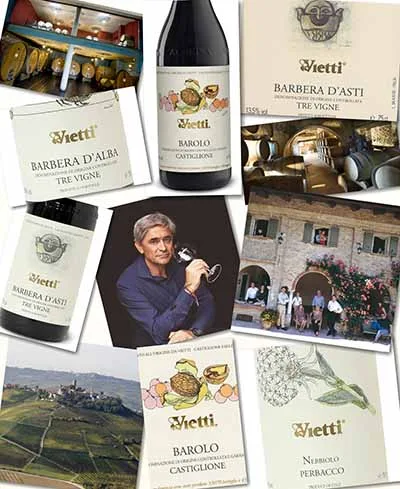
I was recently invited to taste the wines of Vietti Winery. They are one of the stalwarts of both Barolo, the wine and Piedmont, the region. Piedmont is along with Tuscany, the most famous wine region in Italy. Yet, whereas Tuscany is grand, worldly and stately, rather like Bordeaux, Piedmont is more like Burgundy. Rural, agricultural and provincial. A farming community that grows wine.
The main grape varieties grown in Piedmont are Nebbiolo, Barbera and Dolcetto for reds, and Arneis, Cortese and Moscato for whites. There are two main regions, the Langhe region surrounding the town of Alba and the Montferrato region around Asti. These are to the south of Turin in rolling hills, which are really the foothills to the Alps. That is why the word Piedmont means ‘the foot of the mountain.’ Alba is famous for its wine, its truffles and hazelnuts, but most of all for being the birthplace and home of Nutella. However, for the wine intelligentsia, this is Barolo and Barbaresco country.

REBIRTH OF THE EASTERN MED

The Eastern Mediterranean was the cradle of wine. This meeting place between south-eastern Europe and the Middle East was where wine culture began. That fertile crescent was good to wine and wine was good for trade and business. This was the place Noah planted a vineyard. Where Moses? spies were surprised by the size of grapes. This was where Isaiah, the most famous prophet, wrote his Song of Vineyard. The Egyptian wine culture, seafaring Phoenicians, Ancient Greeks and the Romans all made long lasting contributions to the both the region and the world?s wine culture.? The New Testament is full of wine references. Jesus changed water into wine here. Even later, Moslem poetry of a certain era was not shy about writing about wine. Do you remember Omar Khayyam?s ?A loaf of bread, a flask of wine? and thou?? Some of the most beautiful poetry about wine comes from the place you would least expect. However, that is all ancient history!
A modern wine industry in the Eastern Med was first flagged up by the founding of ETKO by Christodoulos Haggipavlu in 1844 (in Cyprus), followed by Ksara by Jesuits in 1857 (in Lebanon) and then Archaia Claus by Gustav Klaus in 1861 (in Greece). In Israel the revival of a wine industry, dates from the founding of Carmel by Baron Edmond de Rothschild in 1882. The first private wineries in Turkey were Doluca, founded by Nihat A. Kutman in 1926, followed by Kavaklidere, established by Cenap And in 1929.
That is not to say that wine was not made beforehand, but it was domestic winemaking and could scarcely be called a wine industry. Jews in Israel made wine from local varieties grown by Arab owned vineyards. They needed kiddush wine for religious ritual. Christians also made wine throughout the Eastern Med. They required Altar and Communion wine. Wine was often made by the woman of the household as a way to make use of the grapes they grew. Other uses, depending which country we are talking about, was to use the grapes for food, to produce raisins, to make a sweet grape syrup, or to distill the wine to make Raki or Arak. Furthermore, monasteries continued to make wine for their own consumption and to earn a living in the Eastern Med, as well as in Europe.
The Eastern Mediterranean of the 20th Century was dominated by large monopoly sized wineries, but the wine was not great. Wineries focused on inexpensive brands and high volume sales. The markets were dominated by Carmel in Israel; Achaia Clauss, Kambas, Kourtakis and Boutaris in Greece;? Tekel (the government monopoly), Doluca and Kavaklidere in Turkey; KEO, ETKO, LOEL and SODAP in Cyprus, and Ksara in Lebanon. In each case, the main objective was simply production and distribution, rather than branding or any pursuit of quality.
When I started in the wine trade, the Eastern Mediterranean was an historical and archaeological memory. The one thing it was not known for, was the quality of its wines. I remember a wine book written by wine critic Robert Joseph describing an Israeli Sauvignon Blanc as probably the worst wine he had ever tasted. A local wine in the sparse entry for Israel in an early Hugh Johnson Pocket Wine Book, was the semi dry red, Adom Atik. Hardly a wine to be proud of. Israeli wine was then oxidized. Reds were brown and whites deep yellow and sweet sacramental wine was still the dominant wine encountered.
Greek wine was probably symbolized by the liter bottles of Domestica, found on the back shelf display of Doner Kebab kiosks in London, or Retsina, the white wine flavored with pine resin, encountered by tourists. Their wines were mainly drunk by ex-patriots. Turkish wine was not on the radar at all. If the Turks drank anything, it was Raki. Nearly all their grapes were used to make raisins. Cypriot wine was very successful in terms of sales, punching well above its weight, but the objective was volume not quality. Cyprus Sherry (to Britain), bulk wine to the Soviet Union and Ghluwein to Germany were strong markets. Lebanese wine was regarded as quaint, but the dominant winery was owned by monks, and for a long time, decisions were under the thumb of the Vatican in Rome. In any case, the Lebanese far preferred Arak to wine. What seeped out was reserved for Arab restaurants.
Fast forward until today and I believe the Eastern Mediterranean is one of the most dynamic regions in the world. There has been a total turn around. The whole area is geared to growing and producing wine with individuality and quality in way unthought of previously. The heroes who brought about the change were catalysts to a new dawn in this Ancient World of winemaking, which in a couple of decades summersaulted into a new world of modernity, technology and quality.
The first winery to show the Greeks the way was Domaine Carras in Halkidiki. It was founded in 1966 and owner Ioannis Carras was determined to make a wine that would compete with the best in the world. Money was no objective. He employed the iconic wine consultant Emile Peynaud and originally planted Bordeaux varieties. Later they flirted with rare Greek varieties (including Malagousia). Carras employed the young Evangelos Gervassiliou, a student of Peynaud, as winemaker. He is today regarded as Greece?s most famous winemaker. By the mid-seventies, people realized that the idea of quality from Greece was something tangible that could be achieved in modern times. There followed the rise of the small winery with an internationally trained winemaker (usually trained in Bordeaux) and from the 1990?s Greek wine never looked back. Later Carras (now known as Porto Carras) got into financial difficulties and was sold, but by then the example of investing in quality and expertise, was already being followed by others who took the beacon and carried it forward. It was Yiannis Boutaris, who left the family firm to set up a small winery alongside a precious vineyard, who encouraged many to follow the boutique route. His pioneering winery was Kir Yiannis.
As for Lebanon, a Francophile called Gaston Hochar founded Chateau Musar in 1930. It became the best wine in Lebanon, but was scarcely known by most Lebanese, let alone anyone internationally. Wine was only drunk by the French residents in Beirut and furthermore, Lebanon was one of the minnows in a large world. That was until the Bristol Wine Fair in 1979, when Michael Broadbent MW of Christies, one of the iconic giants of the wine world, found the wine. The winery never looked back. Under the canny, charismatic and unique leadership of Serge Hochar, Gaston?s son, Chateau Musar began to be regarded as one of the great wines of the world and their success catapulted little Lebanon into the drawing rooms of a staid wine world, who were fascinated by the exotic idea of a wine from Lebanon and captivated by the charm of Serge, who became known as one the world?s great wine personalities. Today Lebanese wine is no longer a one winery country. It has a vibrant wine industry and many Lebanese wineries are making really fine wines. Gaston Hochar, who passed away before his time, would have been thrilled to see his wine be regarded as one of the great wines of the world. Sadly Serge is no longer with us, though he influenced everyone he met. Now another Gaston Hochar, the next generation, is at the helm.
In Israel, the story of the revolution was closer to home. In the early 1970?s Charles Loinger, then director of the Israel Wine Institute, hosted Professor Cornelius Ough, from UC Davis, in Israel. He toured around and was most taken with the Golan Heights. He saw the beginnings of an apple industry, noticed the volcanic soil and the high elevation. ?This? he noted ?would be good place to grow wine.? The roots of the revolution took place in 1976 when Moshavs (cooperative farms) and Kibbutzes (collecting farms) planted the first vineyards on the Golan Heights. In 1982 these pioneers decided to make an experimental Sauvignon Blanc from their vineyards. The results were pretty poor, but it was way ahead of anything produced in Israel at the time. So, in 1983 four Kibbutzes and four Moshavs formed a partnership to found the Golan Heights Winery.
The CEO of the winery was a canny Kibbutznik called Shimshon Welner, who had experience of apples but was new to wine. He sought the services of a wine consultant from California. They found the name Stern, and assuming he was Jewish, interviewed him. Peter Stern was not Jewish, but he was good enough to be the wine consultant for twenty years. During this time, he and Welner shook up the establishment. Winemakers were employed who were graduates from UC Davis. They brought New World technology to vineyard and winery. Decision making in the vineyard for the first time reverted from grower to the winery. Harvested was at night. Wines were fermented in temperature controlled stainless tanks. Aging was in small French oak barrels. It all seems obvious today, but then it was trailblazing.
Then there was their marketing. Beautiful labels were designed. Wines were priced up at a time when the market had crashed and wines were being offered in ?buy one, get one free? promotions. The Golan wines were purposely scarce. They were originally sold only to the King David Hotel and Tel Aviv Hilton and in export markets. At the same time, Yarden wines started winning trophies and Gold Medals in the major international competitions of the time. When wine lovers were invited to the vineyards to witness the night harvest, they had seen nothing comparable.
The Golan went on to introduce unique wine marketing events. Robert Mondavi was the guest of honor for a symposium. Golan Vintage Culinary Festival, the Yarden Award for Wine Service, and the founding of a wine school were new to Israel, and showed that the innovation was not just within the gates of the winery, but also outside. If you have not understood the picture, think of Robert Mondavi?s influence in the revolution in California. The Golan Heights Winery?s effect on Israeli wine was no less, albeit on a smaller scale. By the early 1990?s Domaine du Castel and Margalit Winery had been formed, and a flowering of small, boutique wineries began.
So, as we approached the end of the 20th century, Greece, Lebanon and Israel had reinvented themselves because of the pioneers mentioned, the inspiration they provided and the positive response of rival wineries. Turkey and Cyprus were initially left behind, but since then, they have also made great strides.
The roots of change in Turkey began in the 1990?s. Then, Gulor Winery and Sarafin were the first to planted noble varieties. The Sarafin project was higher profile. It was a joint venture between Guven Nil, who owned the vineyards and Ahmet Kutman of Doluca Winery, one of the oldest and largest wineries in Turkey. Kutman was the son of the winery?s founder and he had an international outlook having studied at UC Davis. Their initiative drew attention to Turkish wines internationally for the first time and symbolized a desire to kick it up a notch.
During this time, the Turkish wine industry seemed to develop mainly in the west of the country, in Thrace and the Aegean regions. Against the trend, the other prominent large winery, Kavaklidere Winery, quietly continued to make wine from then unfashionable varieties in forgotten regions.? They proudly and stoically focused on varieties like Bogazkere and Okuzgozu from the Eastern Anatolia and Kalecik Karasi, Narince and Emir from Central Anatolia. At this time, I had heard of two Turkish wines, Sarafin and beautifully named, Buzbag, a rustic blend of Okusgozu and Bogazkere.
Buzbag was made by Tekel, the government monopoly. In 2004 the wines and spirits producer was privatized and Kayra was formed. They appointed as their winemaker Daniel O?Donnell from California. This period coincided with the founding of a number of boutique wineries geared towards quality and the wine world, from Masters of Wine downwards, became fascinated with the Turkish local varieties for the first time. O?Donnell, being an English speaker was a natural communicator and became an unofficial spokesman for Turkish wine. Another high profile wine personality spreading the word is Isa Baal, a Master Sommelier and Best Sommelier of Europe, who made it to the top in the closeted world of the restaurant business.
It is sad to report that Turkish winemakers of today put up with unbelievable government restrictions and a vociferous, official anti-alcohol lobby. This at a time when the wines have never been better. All wine lovers should support the courage and determination of Turkey?s wine producers.
The wine industry in Cyprus was rocked to its core by a number of changes. The outlawing of the word ?Sherry? outside Spain, the collapse of the Soviet Union and joining the European Community meant that export markets collapsed and Cyprus opened itself to competition. The high volume production days are over. As a result, the Cypriots have become more quality orientated. Like in Israel, where the wine industry moved northwards and eastwards in search of higher altitudes, the Cypriots moved to the Troodos Mountains and as families abandoned vineyards because of declining demand volumes, the quality wineries began to grow and manage their own vineyards.
Here, there are two heroes. Firstly, the late Akis Zambartas, the CEO of the giant KEO, found, identified and revitalized the country?s little known, disappearing indigenous varieties. Today other wineries benefit from his vision. He later founded Zambartas Wineries, now run by his son, Marcos, which is regarded as one of the leading wineries in Cyprus. The other was Sophocles Vlassides. He came from a family of grape growers, but was the first to leave the comforts of the Island?s traditions. He went to study in UC Davis in USA and returned to set new standards at his top notch Vlassides Winery. He planted his own vineyards, invested in small French oak barrels and built a beautiful state-of-the-art winery. He assisted the Tsiakkas and Argyrides wineries as wine consultant and proved to be an inspiration to the industry as a whole as it started to change gear.
In case anyone feels they know the region well, the more one scratches the surfaces, the more nuggets may be found. Arguably one of the finest wines of the region is Domaine Bargylus made in Syria. There are also good Jordanian and Palestinian wineries. What makes it all the more interesting to the wine historian, is that these three places each have a very long history of winemaking amongst their Christian population.
Today every Eastern Mediterranean country is making the best wine it has made for the last 2,000 years. Increasingly, each of the countries are attracting a new type of owner, who are investing enormous sums of money in order to make high quality wine from the get go. We should be grateful to those pioneers that created change and inspired the new thinking in their respective countries. The Eastern Mediterranean is at the same time, the newest and most ancient wine region: A whole new world of wine, in one of the most ancient wine producing regions on earth.
Wine trade veteran Adam Montefiore, has been advancing Israeli wine for over thirty years and he is the wine writer for the Jerusalem Post. www.adammontefiore.com
INNOVATIVE WINE VENUES

The wine lover in Israel, as everywhere else, loves to visit wineries. However, most wineries tend to be in outlying areas. Unlike in Europe, where wineries blend into villages and are positioned alongside vineyards, near hotels, restaurants and other gourmet destinations, here wineries are banished more often than not, to industrial estates. A visit has to be planned in advance and normally necessitates an outing.
However, wine lovers need not despair. If you do not have time to visit wineries, there is a new animal in Israel cities. It is called ‘The Tasting Room’. These are not exactly winery visitors’ centers, nor are they restaurants, or even typical wine bars. However, wine lovers can taste, buy, learn and talk about wine along with enjoying a little food, without leaving the city.
A TALE OF RABBITS AND RABBIS

Literally, a marriage made in heaven. She led him to wine. He led her to the Jewish world of Kashrut. This is a story about land, a family, wine and food, not rare in Tuscany, but with a Jewish undertone, which is virtually unique. Tuscany, situated in the center of Italy, has one foot in heaven. It is such a beautiful area of old stone buildings, forests, hills, valleys, shrouded in deep mists, with a smorgasbord of vineyards, olive groves, decorated with slim upright, optimistic looking Cypress trees. If anyone wants to compliment a region in Israel, they refer to it grandly as the ‘Tuscany of Israel.’ They also have a long wine history. In Israel, we are impressed that Carmel goes back 130 years and the winemaking Shor family 170 years. Well, they are babies.
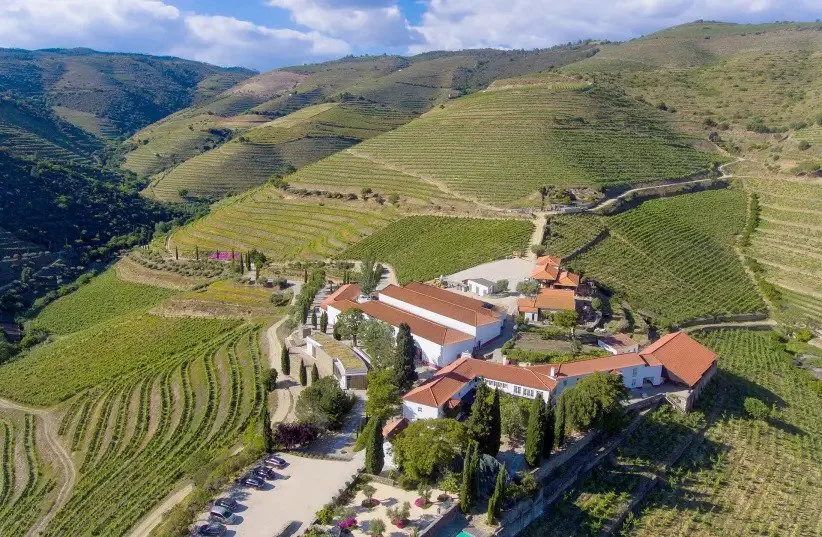
REBIRTH OF THE EASTERN MED

The Eastern Mediterranean was the cradle of wine. This meeting place between south-eastern Europe and the Middle East was where wine culture began. That fertile crescent was good to wine and wine was good for trade and business. This was the place Noah planted a vineyard. Where Moses’ spies were surprised by the size of grapes. This was where Isaiah, the most famous prophet, wrote his Song of Vineyard. The Egyptian wine culture, seafaring Phoenicians, Ancient Greeks and the Romans all made long lasting contributions to the both the region and the world’s wine culture. The New Testament is full of wine references. Jesus changed water into wine here. Even later, Moslem poetry of a certain era was not shy about writing about wine. Do you remember Omar Khayyam’s “A loaf of bread, a flask of wine… and thou?” Some of the most beautiful poetry about wine comes from the place you would least expect. However, that is all ancient history!
CLARET FOR BOYS, PORT FOR MEN

My own personal great Port experience is comparatively recent. A bottle of Port was given to my son David, every year on his birthday, by a generous Godmother. It was laid down at Berry Bros of London, wine merchants since 1698, until he came of age. She had no idea he would end up in the wine trade and eventually be one of only a handful of Israelis to gain a WSET Diploma. In his late twenties, David sold most of the Ports, via Berry Bros, to allow the purchase of some good Bordeaux and Burgundies, but he kept two of them. One was Warre’s Vintage Port 1977. We drank it in 2014 carefully decanted into one of my grandfather’s cut glass decanters. The wine was amazing, if not sensational. It was so fresh, so exquisitely balanced, that we drank the bottle during a meal and finished it without really being aware of it. Yes, it was sweet, but it was at the same time refreshing.
TIME TO PARTY

New Year’s Eve or Sylvester’s is the time for sparkling wine. This is a fast growing sector. Anything with bubbles is considered ‘in’ and increasingly popular, whether it is a wine of sophistication at no little expense, or inexpensive fizz. The broad range covers the whole wine drinking spectrum from connoisseurs to those who like a fun wine with easy drinking sweetness. Champagne, Cava, Prosecco and Lambrusco are the famous sparkling wines that dominate the shelves of the wine shops.
GRILLED SARDINES & RED VINHO VERDE
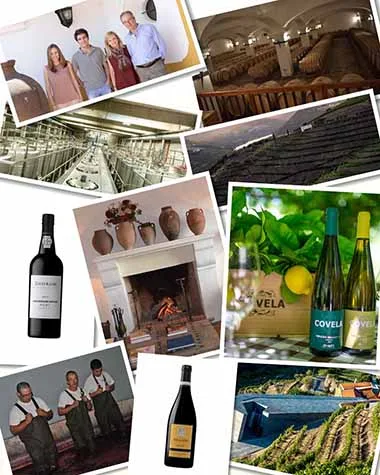
I was born into the Spanish and Portuguese Jewish Community and even had my Bar Mitzvah at their Maida Vale Synagogue in London. We were sometimes known as Portuguese Jews, or even a lofty sounding ‘Jews of the Portuguese nation.’ These days Spanish & Portuguese Jews are sometimes referred to as ‘Western Sephardim.’ This is the nearest I came to Portugal.
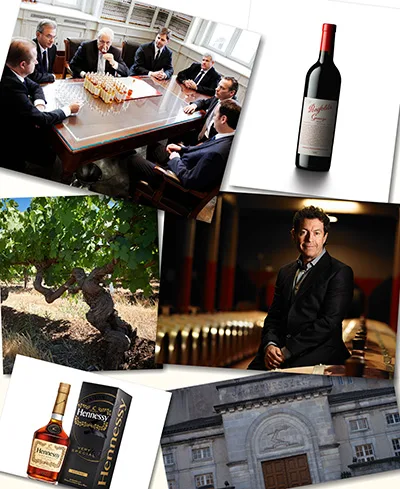
I recently was invited on two successive days to events hosted by Hennessy Cognac and Penfolds Winery. These are icons in the wine and spirits world, from France and Australia respectively. They both illustrate the same immense pride in heritage, a mission of continuity, attention to detail, whilst producing wines and spirits of style and quality.
MONASTERY WINE
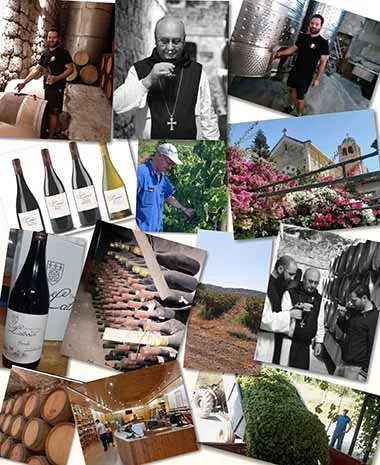
Latroun is mainly known in Israel as a junction, off the Tel Aviv Jerusalem highway, set in the gentle curves of the Judean Foothills. Latroun Monastery was founded in 1890 by Trappist Monks, a silent Order related to Cistercians, which dates back to the 6th century. It is a beautiful, serene building, surrounded by flowers and bushes in a blaze of color. It is a quiet, tranquil oasis amid the noise of day to day Israel.
The Trappist charter promotes earning a living by using one’s skills and being economically independent. Life is based on three fundamental principles, prayer, labor and study & contemplation.
WINE, ENVIRONMENT & RELIGION
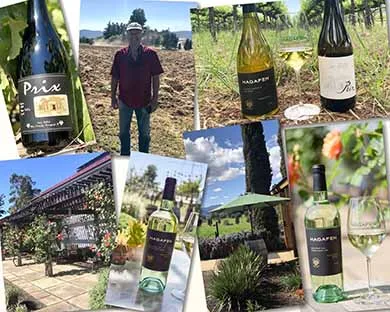
For over forty years Hagafen has been a fixture on the kosher wine shelves and a feature in the Napa Valley wine scene. The wine has gained great respect for its quality whether its customers are Kosher consumers or Napa Valley connoisseurs. The wines are grown and produced with a unique care of the environment combined with a respect for religion, and are made by a talented, experienced winemaker.
WINE WRITER OR WINE CRITIC
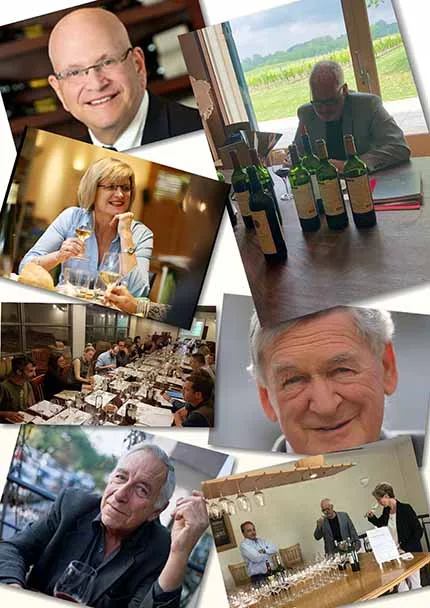
I have written about wine in international and local media for nearly thirty years, but for much of that time I also worked for wineries. Only since 2016 when I left Carmel am I truly independent and self employed. I have written my regular Wine Talk column in the Jerusalem Post for ten years now. The question is, what am I in my new incarnation, a wine critic, wine journalist or wine writer?
In my view a wine critic is someone who tastes wine in as sterile as environment as possible, without outside influences, so they can give absolute concentration to fairly describing the wine. There is probably an objective to taste as many wines as possible, because that is their reason for being. A wine journalist is someone ideally with a regular spot in the media, who reports on wine related events, which is usually wine launches or new vintages. The role is largely reactive, and the person relies on press releases from wineries. Then, there is the wine writer. His or her job is to tell a story, to educate and enthuse about wine. They weave a tapestry around the wine.
ROSH HASHANA SELECTIONS
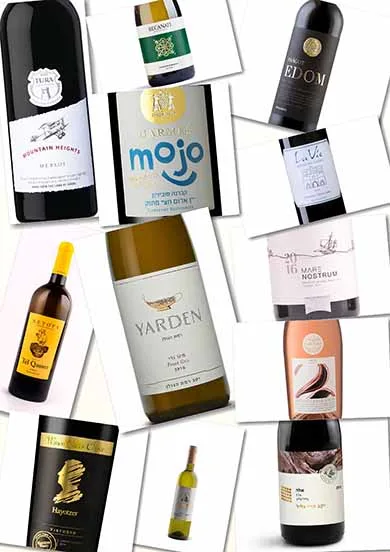
Rosh Hashana is upon us again. The wine trade eagerly awaits the holidays because this is when the wine sales boom. The consumer also enjoys what is a buyer’s market because the promotions and special offers are at their peak.
Many people find wine buying an ordeal, but remember you only have to purchase one or two wines, yet put that against think the number of food items you will need to buy. When you are looking for the right wine, go in with a fixed idea how much you want to spend. Wine shops are worth a special visit because of the extra service, but you can find a great range of excellent wines in some supermarkets these days too.
THE VOICE OF KOSHER WINE

Jay Buchsbaum was always known in my family as ‘Boobie’ Buchsbaum, because of long car conversations in the car, when he always called me ‘Boobie’. It used to amuse my children no end silently listening in the background. I thought it was a term of affection only for me, until I realized he called everyone ‘Boobie’. Now my children are grown up and I have grandchildren of my own, it serves to remind me how long we have known each other, but he is still known as Boobie Buchsbaum chez nous.
WINDMILL AND WINE

The Montefiore Windmill was built in 1857 and became a symbol of modern Jerusalem and a prominent part of the Jerusalem skyline. It is situated at Mishkenot Sha’ananim, founded by Sir Moses Montefiore, which was the first neighborhood outside the Old City Walls of Jerusalem. Now 162 years later, the windmill has been turned into a unique winery tasting room and visitors center. When I was recently invited to connect the dots between family, Mishkenot Sha’ananim and the windmill, I jumped at the chance. As a wine trade veteran and student of Israel wine history, I could not help but add the many relevant wine references at every stage.
Sir Moses Montefiore was a humanitarian, campaigner for Jewish emancipation, forerunner of Zionism and the world’s unofficial ambassador for the Jewish people. His coat of arms featured a lion holding a pendant with Jerusalem written on it……an idea since adopted by the Jerusalem municipality! He travelled to Israel no less than seven times, riding in his small carriage, the last time at the grand old age of 91!
A LAND OF WATER AND WINE
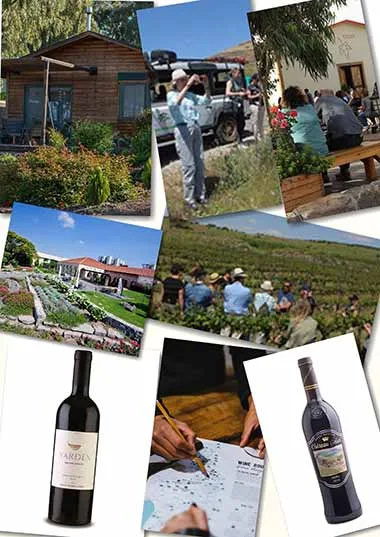
When I first came to Israel, there was one wine region that was considered above all others. The Golan Heights with its high elevation, volcanic soil and black basalt stone, was considered perfect for growing grapes with the potential to make high quality wine.
The Golan Heights Winery carried not only the wine hopes of the region, but the whole country. New World winemaking technology, the idea of making wine in the vineyards and the introduction of new varieties made this the pioneering winery.
The close association between winery and growing region, encouraged the winery to promote ‘The Land of Wine’ referring to the Golan. I remember Segev Yerovam, ex CEO of Golan Heights Winery and Galil Mountain Winery, predicting that one day there would be a wine route on the Golan. At that time there was only one winery on the Golan, but Segev, a true Golan patriot, looked into the tea leaves and saw the future.
TOURING MOUNT CARMEL
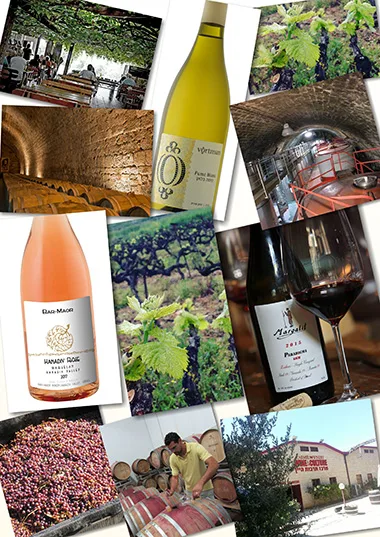
There are no end of options for the wine tourist in Israel and there are wine routes that cover the country. There is the Galilee & Golan Heights in the north, Mount Carmel & the Sharon Plain in the northern coastal plain, the Judean Foothills & Judean Hills in the center of the country. To these you can now add the Central Mountains and Negev, where there also viable wine routes.
I believe Israel is a country which may be viewed through the prism of its wineries, vineyards and wines. This will put you in touch with history, archaeology, agriculture, religion, gastronomy, peoplehood and technology. Those who know Israel well, will only gain further insights by experiencing Israel’s wine industry.
KOSHER IMPORTS FOR THE HOLIDAYS
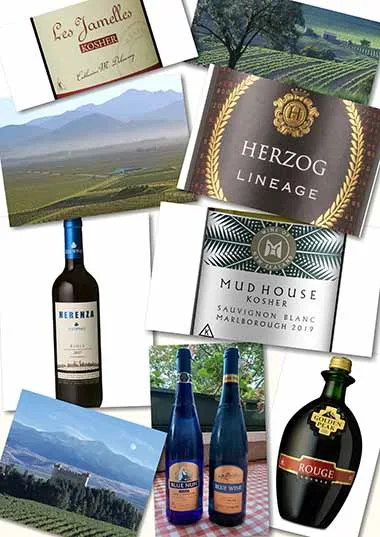
I usually write about Israeli wine and do not differentiate whether the wine is kosher or not, on the basis that wine is wine, and it is not better or worse because it is kosher. However, for those interested in kosher wines, I have decided this week to recommend a few imported kosher wines, which represent excellent QPR (quality per price.)
The history of wine kashrut is deeply interesting. There was no kashrut supervision until the 1920’s. Before that, apart from Carmel, kosher wine was more or less a domestic cottage industry. You bought from someone you knew personally if the provenance of the wine was important to you. Whilst the kosher meat industry built up a kosher infrastructure by necessity, wine was comparatively slow to get in on the act.
THE HONORARY ISRAELI

I have always been interested in developing Israeli Carignan. When I worked for Carmel Winery it was a policy, but even though there is a lot of Carignan in the country, there are not so many varietal Carignans made here. Nevertheless, it remains even today the second most planted grape variety in Israel. We are obviously drinking far more Carignan than we are aware of!
Over the years I have written about Carignan in Israel, but my interest received an infusion after meeting Momo Shmilovich at his Neve Yarak Winery. He has taken over the mantle of Carignan warrior in Israel and organizes a Carignan Day, which encourages visitors, hosts tastings and lectures all on the subject of this far from noble variety, which has a long association with volume rather than quality.
There is no grape variety which tells the story of Israeli wine quite like Carignan. It is part of the modern history of Israeli wine. It has been here from the beginning, from even before Baron Edmond de Rothschild’s involvement.
THEN & NOW
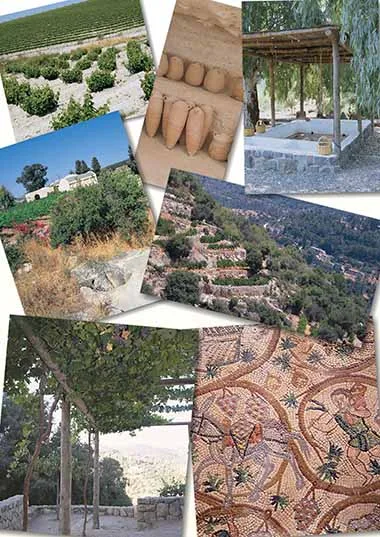
If you ever hike in Israel, you are quite likely to come across a dilapidated flat, square stone trough. You may not know what it is, but you may have stumbled across an ancient wine press. They don’t carry a neon sign saying ‘Winery’ in big letters and they all differ in the way they look. There is no standard. However, they do all share the basic characteristics that identify them…..and there are simply thousands spread over the land of Israel. It always gives me the chills when I see one of these, because it connects winemaking today with winemaking in ancient times. Clos de Gat has one in its vineyard.
MINDFUL WINETASTING

Winemaking is part scientific and part art. The scientific winemaker will make technically perfect, clean wines, whilst the artist will make wine more naturally with character, dirt and terroir. Winemaking is normally a combination of the two. The wine educator also comes in two ways. He or she may have encyclopedic knowledge, know all the facts and the student sits, (like at University in front of a knowledgeable Professor), and picks up the nuggets they can. Or the wine educator may be an artist, who talks in broad strokes, inspires and enthuses.
BE HAPPY, DRINK WELL

Taking the Eastern Mediterranean as a whole, Israel is seen to have a dynamic, lively wine industry which shines brightly and proudly. Most Israelis are therefore quite surprised to hear that the most famous wine of this historic region is Lebanese, not Israeli. I am referring to Chateau Musar. Arguments about which are the finest wines are less clear cut, but the last edition of the World Atlas of Wine implied that the best was no less than a Syrian wine named Domaine Bargylus. The country with the best range of indigenous varietals may be Turkey.
It should certainly make us humbler, to understand we are not the only pebble on the beach. Surrounding us is a rich region of variety and quality, with a history no less long than our own. However, this is our region. We are part of it and if we do not want to be only on the kosher shelves, then this is where we should be….in the Eastern Mediterranean, alongside our neighbors on the wine store shelves and restaurant wine lists.
ALL RIGHT TO ENJOY WHITE
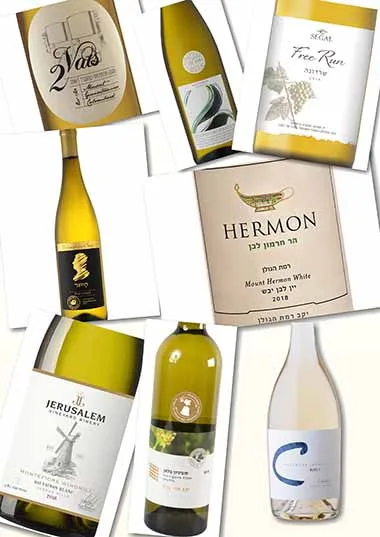
There are four products that symbolize the culinary revolution in Israel more than any others: bread, wine, cheese and olive oil. The festival of Shavuot gives us the opportunity to enjoy all four together. It is, among other things, a harvest festival celebrating the first fruits and the grain harvest. As it is a tradition to eat dairy products, what could be more appropriate than to enjoy a selection of Israeli cheeses, a hunk of bread – with olive oil drizzled on it, of course – and washed down with some Israeli wines?
DON’T PASS OVER THE WINE
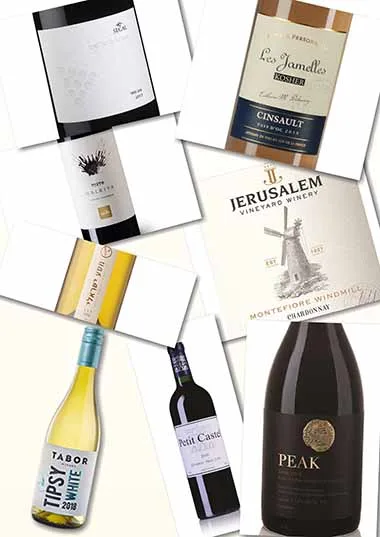
On Seder Night, we read the Haggadah, together with our close and wider family. It is a unique annual family occasion, at which wine plays a star role. We have to drink four glasses. In the Haggadah we read about The Wise Son, The Wicked Son, The Simple Son, and the fourth one who does not know even how to ask. Let us assume these are grown up sons, responsible for the wine buying.
The Wise Son will understand wine and may be looking for something interesting, new to him, of good quality. However, he is smart. He is prepared to pay for quality, because you get what you pay for, but he is not going to pay over the odds. He likes to visit the wine shops, taste and buy something that he thinks is a good find.
YALLA, WINES OF ISRAEL

I have been representing Israeli wine for 33 years. I started way back in the 1980’s working with Yarden, Gamla and Golan wines in the UK. After making Aliyah, I worked for the Golan Heights Winery in the 1990’s and then for Carmel Winery and Yatir Winery in the 2000’s. At different times I was involved with other, smaller wineries. During all this time, I have found myself not just representing the winery I worked for, but also representing corporate Israel to the wine world.
Over the years I have represented Israel to international wine writers and critics. Now I myself am a wine writer, and find I am still representing the industry. I write mainly about Israeli wine and am a partner of The Israel Wine Experience, which educates about Israeli wine. It really has been an honor and privilege to have a part in advancing Israeli wine during this particular golden era, because the developments of the last 30 years have been greater than those of the previous 3,000.
THE HOUSE ASSAF BUILT
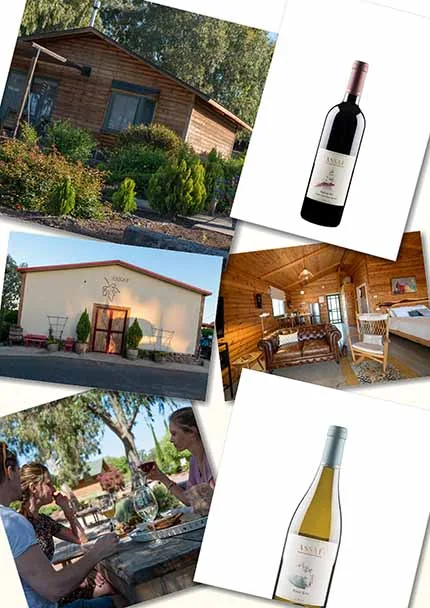
It was Shabbat morning. Most people were taking the opportunity to lie in bed an extra hour. I saw Assaf Kedem, wine grower and tourism pioneer, sitting silently, on his haunches, with a cherished, well-earned cigarette held between thumb and forefinger, like an inscrutable, zen figure, contemplating the future. He is never one to sit on his laurels. Assaf is worker, not a man of words. He does not have dreams, but a vision. He does not reach outside of the family circle for help, he has achieved everything with his own hands.
KOSHER IN CALIFORNIA
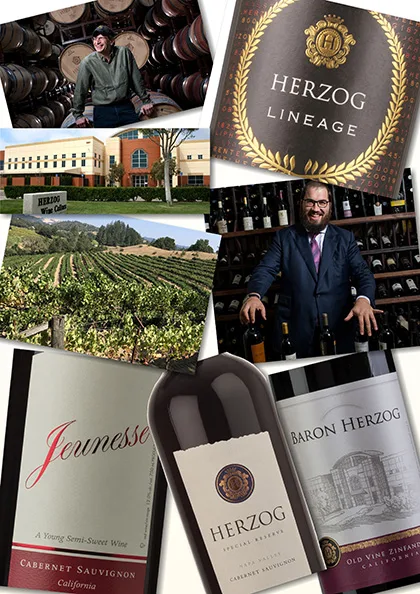
Making kosher wine in California is not new. Occasionally wineries started up, but they did not last or pass any test of quality. The first was Anaheim Winery, owned by a German immigrant Bernard Dreyfus, in the 1860’s. Later on, in the 20th century, Rabbis looking to supplant their meagre income would visit California to make a wine there, for them to sell to the Jewish community back home on the East Coast. It was more common for winemakers from the New York region to make a pilgrimage there to buy grape juice concentrate, for use as a natural sweetener for the wines instead of adding sugar.
DON’T TAKE WINE TOO SERIOUSLY

Don’t shout it from the rooftops, but the majority of people are not that interested in wine. Most people don’t go to tastings, don’t check wine scores or read wine articles. They don’t know the difference between Merlot and Cabernet, or even Merlot or Pinot Noir. They just don’t care. However, some of them buy wine and enjoy drinking it. Their criteria for choosing is refreshingly simple. To choose what is tasty and drink what they like.
Those of us in the wine business have a passion that extends beyond the drink itself. We like to talk about wine and read about wine, almost as much as drinking it. Yet, all of us in the wine trade are guilty of building an ivory tower, which is only accessible to those who speak the language. We are rightly accused of only speaking about wine in terms of baskets of fruits or critic scores. We rave about winemakers like famous chefs, and discuss different vintages, terroir, soils and elevation, which are part of the fascination that makes wine so much more than just a drink. I admit the talk is pretentious, elitist and I suppose it is a self-perpetuating club. The disease is fairly widespread amongst winos.
MEET THE HERZOGS
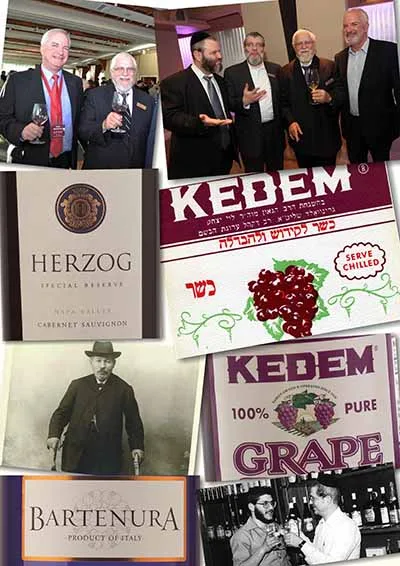
They experienced the Holocaust, survived communism and became the epitome of the American dream. They revolutionized the whole concept of kosher wine worldwide and have become the leading ambassadors of Israeli wine. I am referring to the Herzog family and their Royal Wine – Kedem empire. Now, the American chapter has just celebrated its 70th year anniversary, but the story began long before.
They started as winemakers in Slovakia, a country most well-known for white wines. Until today the Herzog family use only white wines for Seder Night. This is because red wine reminded them of the Blood Libel, which they experienced firsthand, but the customs of their homeland may also have influenced this choice.
ARAK SUCCESS STORY

It is clear that the indigenous drink of our country and wider region is wine. Vineyards grow everywhere today and this echoes the situation described in the Bible. The reverence surrounding wine in the Judeo-Christian world and in the west, is partly due to the importance of wine here in ancient times.
As far as spirits are concerned, the largest selling spirit by far is vodka. The first generations to come here came from Eastern Europe, and they brought with them a love for vodka, but drinking was modest and in moderation. Now with the country in the fifth generation since the First Aliyah, vodka consumption has grown, especially with the young. However, vodka is not today a pick me up shot from a bottle kept in the freezer, primarily drunk for a Lehaim or to accompany smoked or pickled fish. It is now drunk by the youth of the country with a mixer, usually an energy drink to get a kick as quickly is possible. Sales rock, and producers are sometimes shocked at how much vodka is sold in our small, supposedly abstemious country.
TRUE OR FALSE
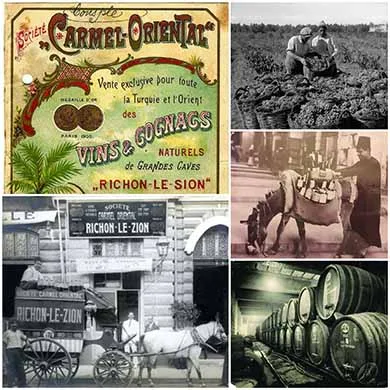
Don’t assume that everything you read about a winery is historically correct. Closer examination shows how wineries are prepared to have a very flexible interpretation of the facts, to suit the imagination of a particular marketing department of the time. It is rather like rewriting history in reverse. However, rather than being outright lies, most of these are based on some form of factual information. Of course, if repeated long and often enough, the story becomes the new reality.
Check yourself on the following simple statements that relate to the history of certain wineries.
A BLEND OF TRADITION AND MODERNITY
Yossi Shor comes from a long line of winemakers. His family have been making wine since 1848. They started in the Old City of Jerusalem, moved to Beit Israel and settled in Mishor Adumim. Generation after generation they continued making wine as a profession….for over 170 years.
When they started, wine was made in small casks from Arab grown grape varieties in Hebron. As wine developed in the country, bottles replaced casks, and then grapes like Alicante (pre State) and Carignan (post State) replaced the Hebron varieties. The family at one stage owned five or six wineries at a time when there were not many wineries in Israel. However, if truth be told, the Shor family still made liquid religion, which is a term to describe kiddush wine and grape juice, along with inexpensive, good value table wines, mainly sold in supermarkets. In the meantime, a quality revolution was happening in Israeli wine. The use of classic varieties, planted in high altitude vineyards, the introduction of new world technology and the employment of internationally trained winemakers, changed the face of Israeli wine.
BORN IN A BOTTLE
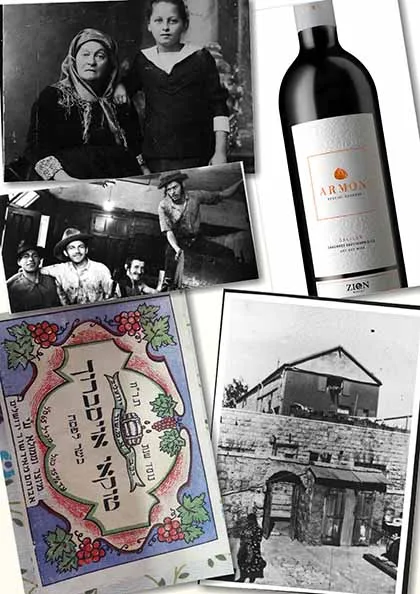
Imagine a family journey lasting 170 years, which leads from Haggai Street in the Muslim Quarter of the Old City of Jerusalem, travels via Rappaport Street, Beit Israel in Western Jerusalem and arrives in Haruvim Street in Mishor Adumim, east of Jerusalem. I am referring to the Shor family, which opened their winery way back in 1848 and is today still making wine. This is Israel’s oldest existing wine making family.
Initially it was called Shor Winery, then it became AM Shor Bros and over time as the family grew, it split into four different wineries: Arza, Hacormim, Shimshon and Zion wineries, each with exactly the same roots. Shimshon Winery was eventually sold and is today known as Jerusalem Vineyard Winery. The surviving Shor wineries continue to be owned and managed by the family. What is unique to Zion Winery though, is that it is not only owned by the Shor family, and managed by the Shor family, but also after all these years, the winemaker is still a member of the family!
GOOD DAYS AT LASCOMBES AGAIN
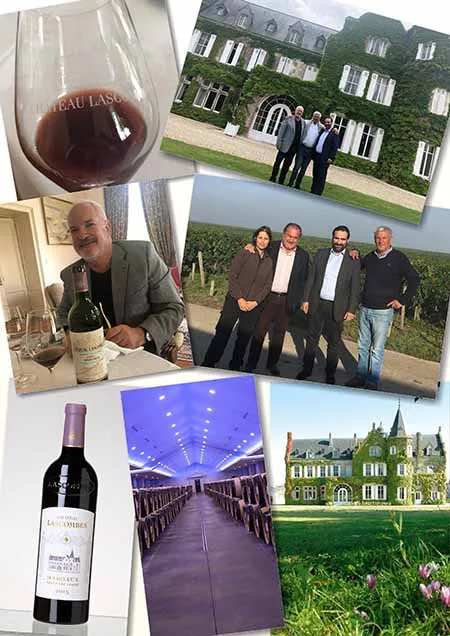
Chateau Lascombes is a grand, ivy colored, turreted building in the village of Margaux in the Haut Medoc. It looks grand and imposing, just like a Bordeaux French Château should. The first known owner was Chevalier Antoine de Lascombes, born in 1625. In the famous 1855 classification, Bordeaux wines from the Medoc were ranked in an order still respected today. Fifty eight wineries were classified into five levels of Classed Growths, (Grand Cru Classe in French.) Chateau Lascombes earned the honorable description of Deuxieme Cru Classé, that is a Second Classed Growth. The First Growths include the likes of Chateau Lafite Rothschild and Chateau Haut Brion, so to be second was not bad positioning.
WINE ROOTS & ROUTES

Succot, the festival for celebrating the grape harvest, is a time for touring Israel’s wine country. Many wine lovers will be planning visits to the Golan Heights, Galilee, Mount Carmel, Judean Hills or Central Mountains regions, but my mind is elsewhere. I recently discovered a fascinating tour of the ‘Jerusalem Wine Route’ by Dani Biran, under covering the hidden roots of Israeli wine in the mid-19th century. There is a misconception that from the time the Marmelukes ruled, wine was outlawed and there was no wine made in Israel or the Holy Land until Baron Edmond de Rothschild founded a modern Israel wine industry starting in 1882. In fact, the first call to plant vines and the first recorded winery were a long time before that.
EAST MED INFATUATION
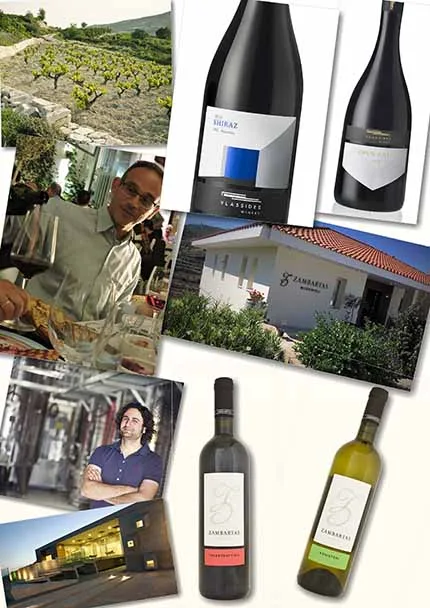
My personal infatuation has always been with the wines of the Eastern Mediterranean. I believe the Eastern Mediterranean is one of the most interesting and fast developing wine regions. The wines of Lebanon and Israel are so different, yet complimentary. The wines of Cyprus, Greece & Turkey are more exotic because of the prevalence of all their indigenous varieties. There is something intoxicating about the high-altitude vineyards, poor stony soils and Mediterranean climate that make this region a wine haven. Certainly, it is a winemaking paradise and the wines have improved no end.
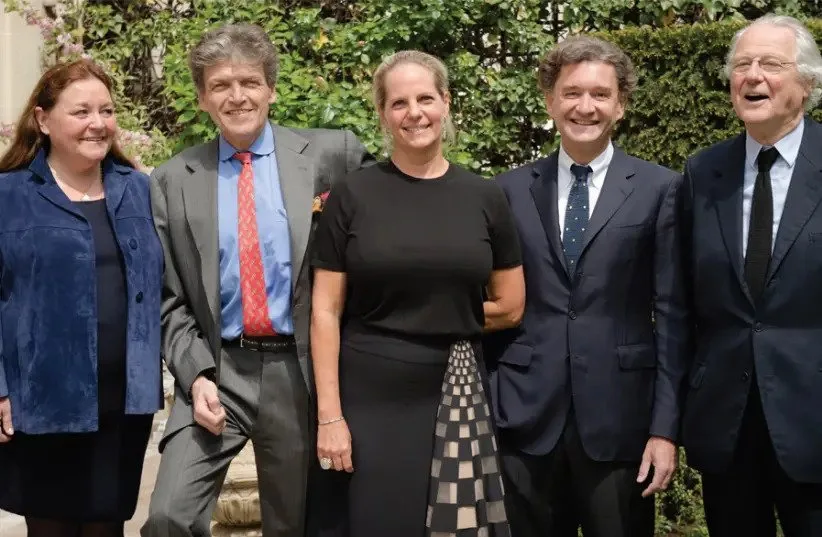
THE KOSHER FLYING WINEMAKER
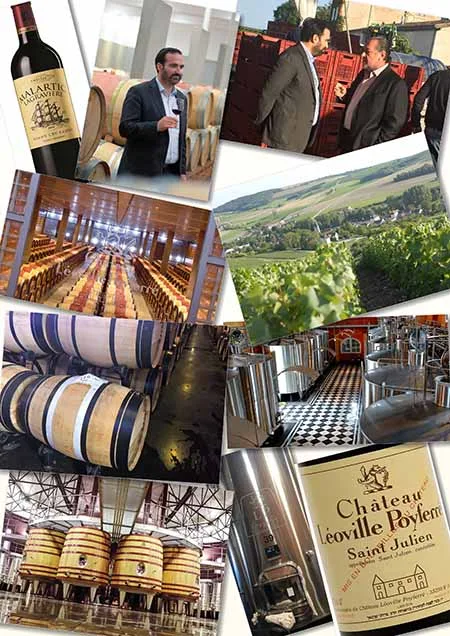
Menahem Israelievitch is the flying winemaker of the kosher world. A Michel Rolland (the world’s most famous consultant winemaker) with a kippa if you like. He makes wine in three countries, mainly France but also Spain and Portugal, with a smile, a great nature, but also with a passionate desire to make the best kosher wine possible. I have noticed he has a special quality; He is never satisfied with doing the minimum when he can do the maximum. Not a bad attribute for a winemaker. He runs his empire, producing roughly 500,000 bottles a year for Royal Wine Europe, which is the French wine making arm of the Royal Wine Corp. / Kedem, which revolutionized kosher wine over the last 35 years. Much of Menahem’s work is from the car and his cell phone is the dashboard through which he communicates, organizes, and makes wine at some of the most famous wineries there are. He has five regular workers and employs up to forty during harvest.
ISRAELS FINEST AMBASSADOR

A special wine is not just a drink and a dry tasting note. It is also a memory and an emotion. I have memories that have accompanied me throughout my career, with one wine above others: Yarden Cabernet Sauvignon. As a buyer, representative, competitor and wine writer, I have experienced this wine in different seminal moments of my wine life.
Earlier this year, the Yarden Cabernet Sauvignon 2014, won a Gold Medal at the International Wines and Spirits Competition (IWSC) in London. It was a praiseworthy result not only because Gold Medals are exceedingly rare for Israel at the IWSC, but it also proved a reminder of an event thirty one years ago that signaled the rise of Israeli wine for the first time. Then an unknown Israeli wine called Yarden Cabernet Sauvignon 1984, made by an equally unknown Golan Heights Winery, won not only the Gold Medal but also the Winiarski Trophy. This was the first major award for an Israeli wine and the first outward sign of a wine revolution in Israel.
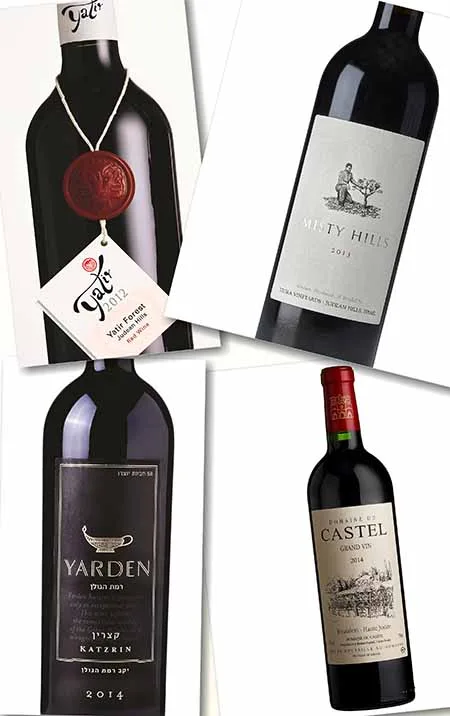
The image of a food product with the word ‘Kosher’ used to describe it, is enhanced. However, with regard to wine, the connotation is usually negative. People think this must mean the wines are sweet, oxidized, cooked and undrinkable. This mistaken perception could not be further from the truth.
Kosher food and wine are necessary for Jews who observe the Jewish Dietary Laws. The word ‘Kosher’ means pure and is used in slang to describe something that is considered all right, okay or authentic.
You will know a product is Kosher from a small abbreviation or stamp on the tin or package. Many of the most famous food and beverage brands are kosher. The regular consumer will not be aware of this or even care, as it does not affect the quality of the end product.
A MAN, A PLACE AND HIS WINE

This article appeared first time in the Jerusalem Post.
The Negev Desert in ancient times was a wine center of some repute. In the days of the First Temple, there was sparse Jewish populations there. As Jews have done throughout history, they also made wine. A pottery shard recently found at the military garrison of Tel Arad conveyed the important message “If there is wine, send quantity.” This was dated 2.600 years ago! Wine was needed for refreshment. It was in demand for the thirsty, as it was safer to drink than the water, which carried diseases. Wine had status, it was used for medicinal purposes, for dyeing, and it was a useful source of nutrients and calories. It was also a valuable currency. However, the peak of winemaking in the Negev was not at the hands of Jewish winemakers. It was the Nabateans who tamed the desert.
A LAND OF MOUNTAIN VINES, SEA & SUN
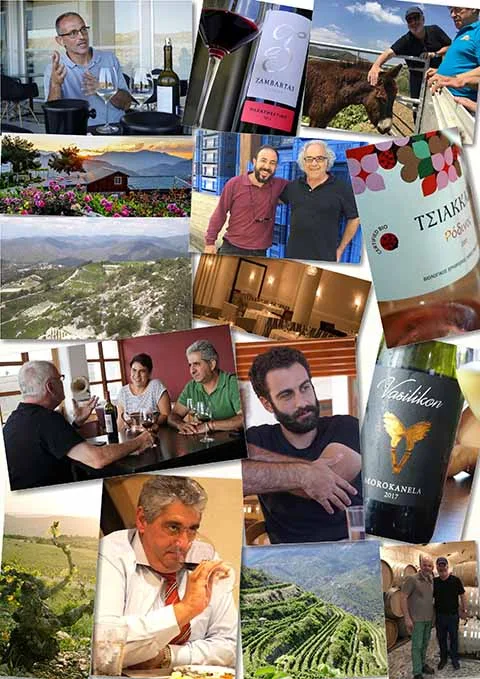
The Eastern Mediterranean gave wine culture to the world, yet made terrible wine for 2,000 years, but in the last 15-20 years has undergone an exciting wine quality revolution. It is now a modern, dynamic, exciting wine region, in one of the oldest wine growing regions on earth. The wines of Lebanon and Israel have been the ones leading the charge, and lately Turkey has had a great deal of attention for its indigenous varieties. Even a Syrian wine has been widely praised. Cyprus would seem to have been left behind in the noise stakes, but there, there have also been exciting changes, wine wise.
MW?s VISIT TO ISRAEL

As a first, Israel has recently hosted a delegation of twelve Masters of Wine, who came to Israel to learn about Israeli wine. This was arguably the most prestigious wine visit to Israel since Baron Edmond de Rothschild first arrived in 1887! The Institute of Masters of Wine is the parent body that administers the Master of Wine program. There are only 370 people on planet earth certified as Masters of Wine, who are permitted to put the letters MW at the end of their name. When you consider the number of winemakers, sommeliers, wine buyers and wine critics there are, you can appreciate that to be a Master of Wine is to be the cherry on the top of the cake. They form the crème de la crème and carry the utmost respect of the community of all wine professionals. They represent the pinnacle of our industry.
ROTHSCHILD?S KOSHER COMMITMENT
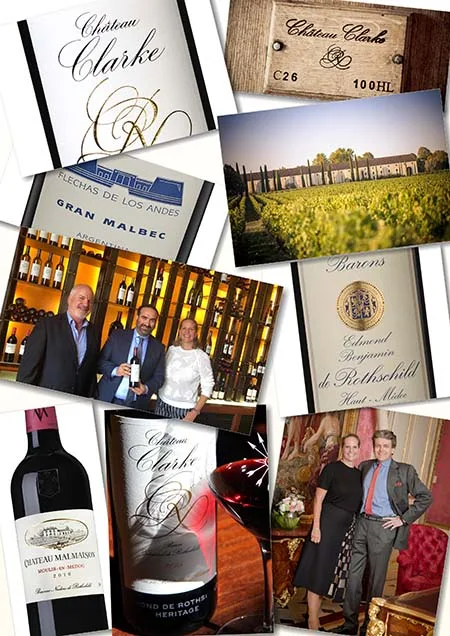
In 1986, in a giant step for quality kosher wine production, Baron Edmond de Rothschild, the grandson of the Hanadiv – ‘the Known Benefactor’, insisted on producing the first quality Bordeaux wine for Jews observing kashrut. This was a milestone in kosher wine production, because the Rothschilds were always regarded like the royal family of the Jewish community. The original Baron Edmond de Rothschild had founded a modern wine industry in Israel. Furthermore, the Rothschilds were not only famous in the world of finance, but were also arguably the most famous wine family in the world.
HOLY LAND VARIETIES
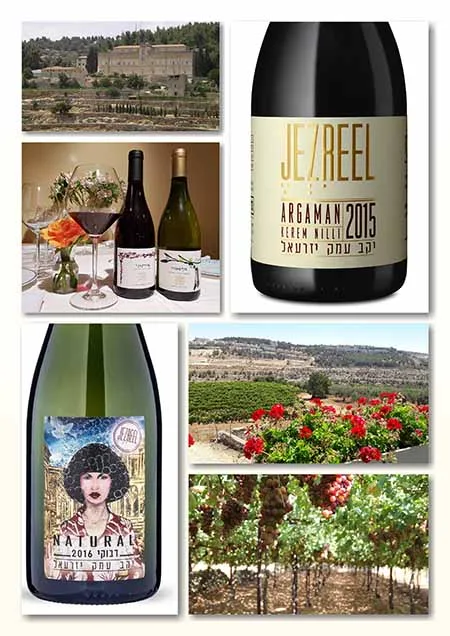
For Israelis embarrassed that all we have is international grape varieties like every other wine producing country, we now have some new local varieties that are creating a noise amongst the wine intelligentsia.
First there was a tasting of Israeli wines by Jancis Robinson MW. Surprisingly, the best scoring white wine was a Hamdani Jandali blend from Cremisan Monastery. Then Recanati Winery came out with a white wine called Marawi. It gained worldwide attention. Now wineries like Feldstein, Jezreel Valley, Gvaot have also come with wines from varieties like Dabouki and Jandali. It is a new world…or rather an old world.
KINGS OF XINOMAVRO
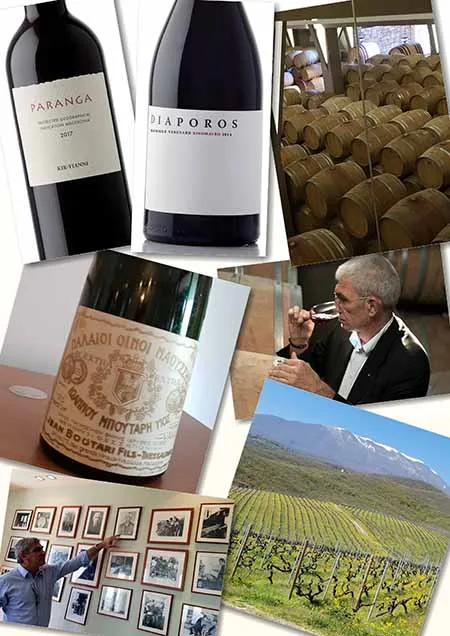
Greek wine is now showing itself in Israel for the first time. A few Greek restaurants have opened and good relations between the countries means that Greece has become a must go to country for Israeli tourists. Even Maia Winery, a small boutique winery in Israel, has employed one of Greece’s most famous sons, Yannis Paraskevopoulos of Gaia Winery as their wine consultant. In other words, Greek Israeli wine relations are warming up!
The main Greek white wine varieties are the Assyrtico, Malagousia, Moschofilero and Roditis. The dominant reds are Agiorgitiko and Xinomavro. It is a whole new world for those tired of Cabernet, Merlot, Sauvignon Blanc and Chardonnay!
BLESSED BE THE VINE

Sometimes in Israel we are very insular and only see our own. Occasionally it is good to look in the corners and not always look in the mirror. Christian winemaking is alive and kicking and in the Arab sector, not often associated with fine wines, there are some individuals and families making some very good wines with individuality and passion.
Nemi Ashkar seems like a typical Israeli, even part of the crème de la crème. He is a hi-tech veteran who has worked for major companies like IBM, HP and Unilever in senior management roles. He loves wine and comes from a place where making wine was part of the routine of home life. A period in Silicon Valley introduced him to the culture of Californian wine and the quality of Napa Valley. He thought I can do that and returned to found his own winery. He built a winery in the cellar of his three floor house.
MEET THE MAYOR ? A GREEK TREASURE
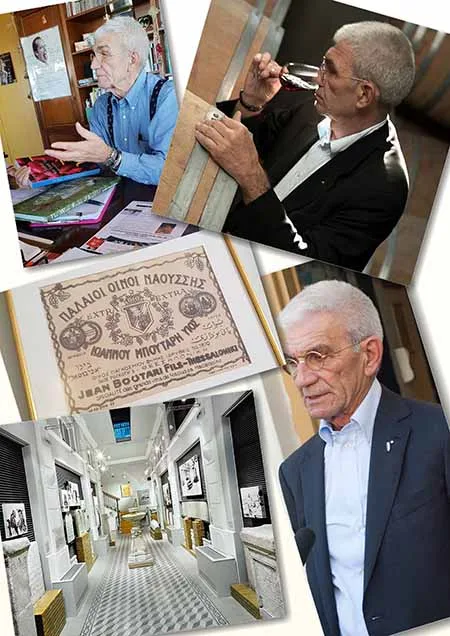
Yiannis Boutaris is a giant of Greek wine and one of its most enduring icons. He was arguably the most prominent figure of the Greek wine revolution and a pioneering figure, whose search for quality and authenticity was followed by many others. The move to regionalization, the idea of becoming wine growers instead of solely producers, the focus on indigenous varieties and the pursuit of quality were all moves he initiated. He believed in the importance of wine tourism and the concept of advancing the Greek wine brand and his efforts were echoed by the Greek wine industry as a whole.
SPARKLING NEW YEAR?S EVE
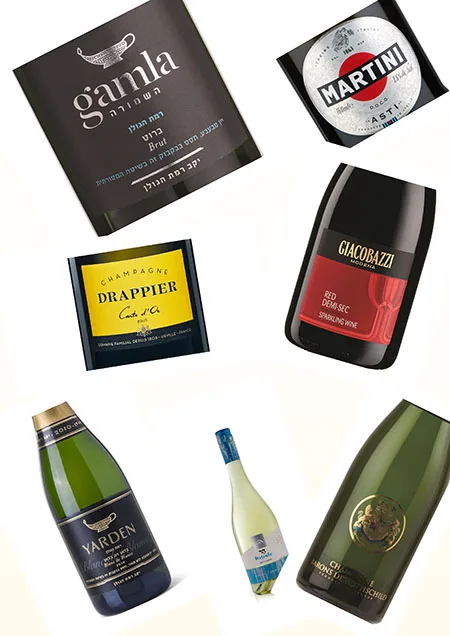
New Year’s Eve is party time. It is the time to celebrate the end of the year and the optimism and hopes for the New Year. There is one wine that symbolizes happiness, success and celebration above all others and that is, sparkling wine. However the word sparkling wine means different things to different people. The range of wines and the variation in prices is enormous. They range from the prestige cuvees in Champagne , made by the ‘traditional method’ to the cheapest sparkling wine, made by what I call the Coca Cola Method.
In Israel it appears we like sparkling wines. They have become very popular here. The number of imported sparklers, mainly Cava from Spain or Prosecco from Italy, has increased dramatically. In fact anything with bubbles is ‘in’. In restaurants and bars throughout Israel, people are ordering Cava, which has become the Israeli slang for any sparkling wine.
FRENCH REVOLUTION
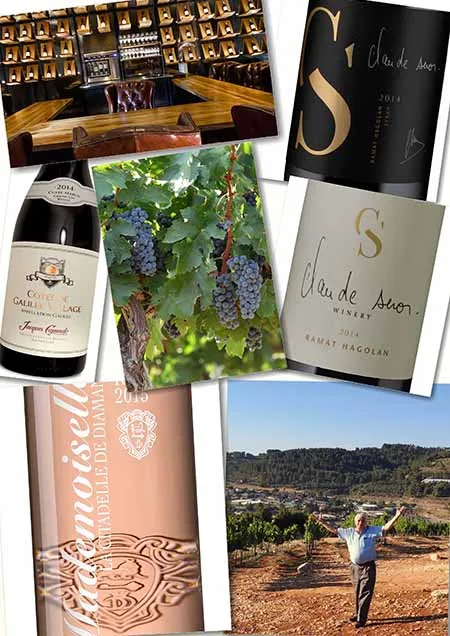
The first French Revolution in Israeli wine came at the end of the 19th century when Baron Edmond de Rothschild founded a modern wine industry. He was a Paris banker and winery owner and he invested millions in planting vineyards in the 1880’s and building wineries with deep underground cellars in the 1890’s. He used French administrators, the most experienced French agronomists and French winemakers. The accounts were kept in French and the wine growers cooperative he set up was even registered in French: Société Cooperative des Grandes Caves. So undoubtedly the Israeli wine industry was revived after 2,000 years owing to French finance and French expertise. Israeli wine was built on French roots.
EXCUSE FOR A CHEESE & WINE PARTY

The Festival of Shavuot is a good opportunity to drink wine with cheese and it has become known in Israel as the white wine festival. When I came to Israel in 1989 most of the wine drunk was white wine. Since the early 1990s, we then became a red wine drinking country because of a number of reasons. Firstly, there was the influential 60 Minutes television program claiming that drinking red wine was healthy. Secondly improved winemaking techniques enabled wineries to make entry level red wines like white wines. Fruity, without astringency, with a good refreshing acidity. Thirdly a more sophisticated wine loving public simply began to choose red.
WINE LABEL ARTIST
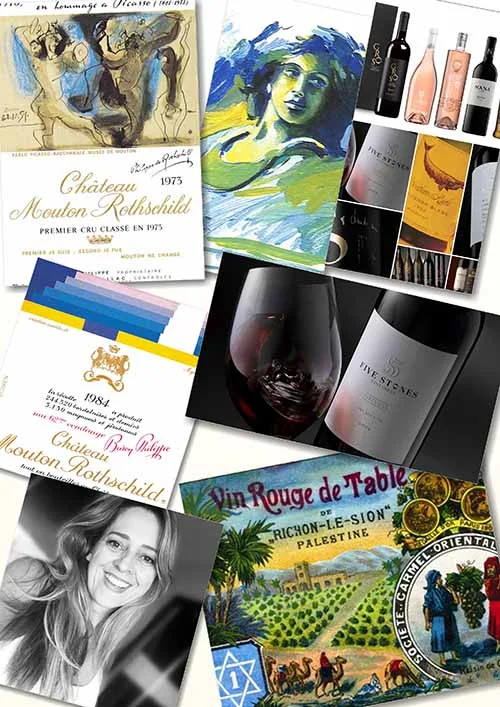
In all the fluff surrounding wine, it will surprise many to know that the label is actually quite modern. The use of a glass bottle, wooden barrel or cork are far older. This is not to say that information about wine was not in demand. The Ancient Greeks and Romans were not beyond giving details of what the wine was, who owned it and where it was grown, but this was on amphorae not bottles.

